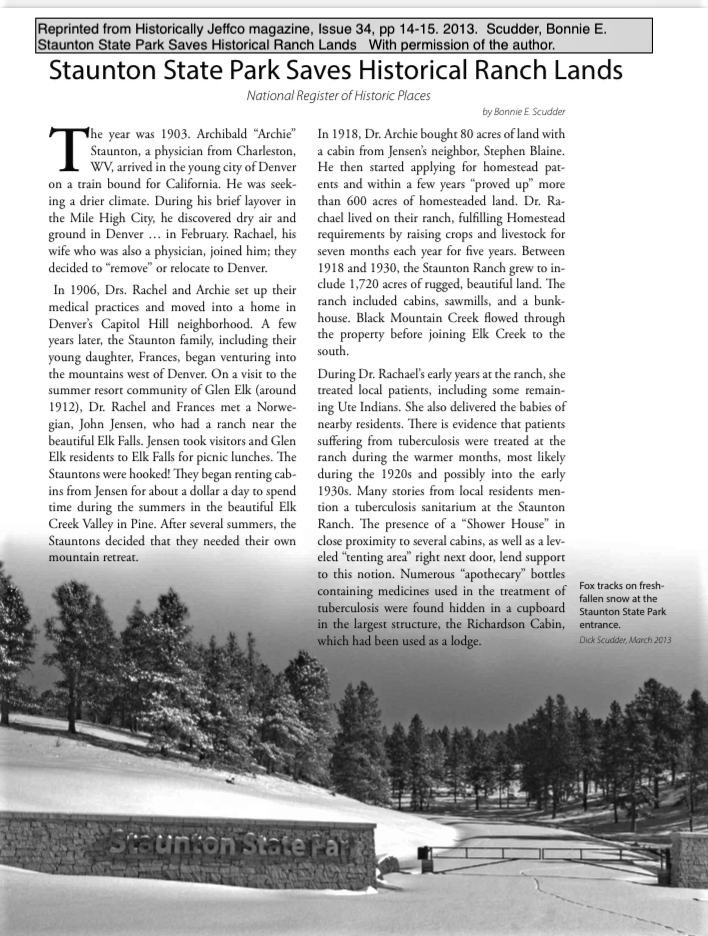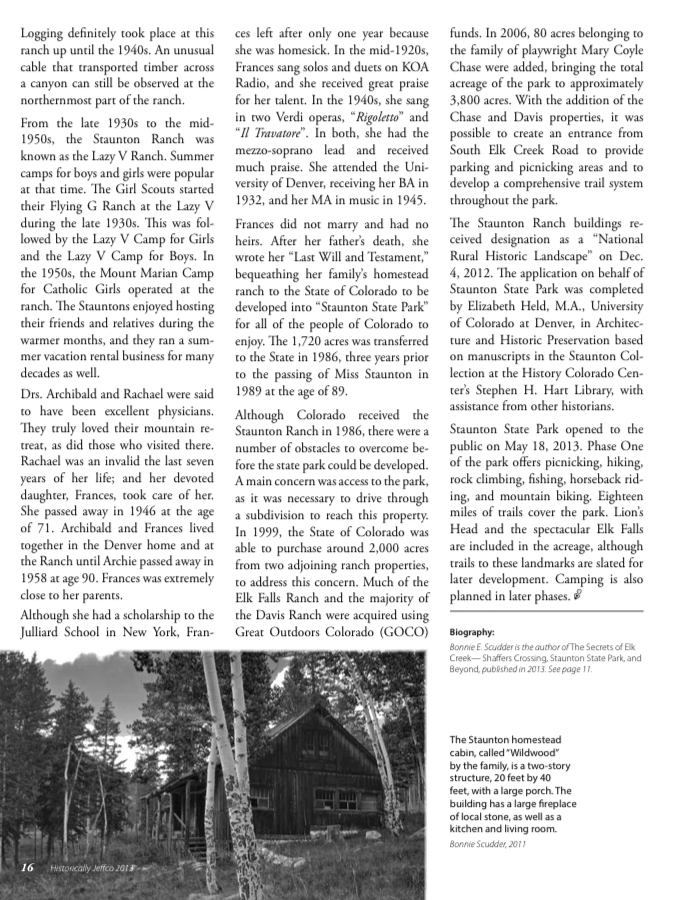Chatfield State Park, Littleton, Colorado
A faithful man will be richly blessed, but one eager to get rich will not go unpunished. ~ Proverbs 28:20
There’s not a lot of hiking available at the State Park we’re staying at, it’s more focused on various boating opportunities and biking, so today, we drove about 30-40 minutes to Staunton State Park. You can practically see it from this Park, but to get there requires driving around and through the mountains, so it takes a bit of time.
Staunton State Park is the legacy of Frances H. Staunton. As her beneficiaries, present and future generations are entrusted with this land – to enjoy, protect and treasure as she did.
Frances H. Staunton’s parents homesteaded this site around the turn of the 20th century, established Staunton Ranch, and gradually expanded it from 160 to 1,720 acres. Frances cherished the land, maintaining it in its near pristine condition throughout her life. Before her death in 1989, she donated it to future generations as a state park. She required in her will that the land “….be preserved, in perpetuity, for public benefit, as a natural wilderness-type park . . . typifying Colorado’s most beautiful mountain forest and meadow region.”
The park is a mosaic of low grasslands, rocky foothills, soaring granite cliffs, and lush stream corridors. Dramatic Elk Falls drops nearly 100-feet into North Elk Creek and spectacular Lions Head stands tall as the park’s rocky sentry. The park’s history of human uses includes ranching, the Staunton family retreat, a turn-of-the-20th century saw mill, and a sportsman’s club.
The Staunton Ranch is the heart of the park. Later acquisitions expanded the park to approximately 3,908 acres. These include the historic Elk Falls, Davis Ranches, property owned by former Colorado State Senator Alan Dines and by Mary Coyle Chase, Colorado’s fir Pulitzer Prize-winning playwright and author of “Harvey.” ~ Staunton State Park brochure
When I went in search of historical information on Frances’s parents, Drs. Archibald and Rachael Staunton and their generous daughter, Frances, there wasn’t a single solitary photograph of any of them, even though the parents were doctors and Frances had a scholarship to Julliard and performed on radio, etc., plus she donated over a thousand acres to be kept as a State Park in 1989! Very strange!
At the end of this post, you’ll find the two bits of information I managed to find, if you’re interested in learning about them.
There are basically two directions you can go if you want to explore the Park – to Elk Falls, or up to the overlooks. Each hike (skipping all the others) would be about 10-12 miles, so there was no way we could do both. We opted to go up – roughly 1,400’ up. They told us at the Visitor Center that it’s pretty much a steady climb over about 8 miles. The total loop today – 12 miles!

so now you know what we missed.
Most of it was very similar; a walk through the forest area, which was nice, but not particularly interesting, so there aren’t a lot of trail pictures. However, there were some places of interest along the way.
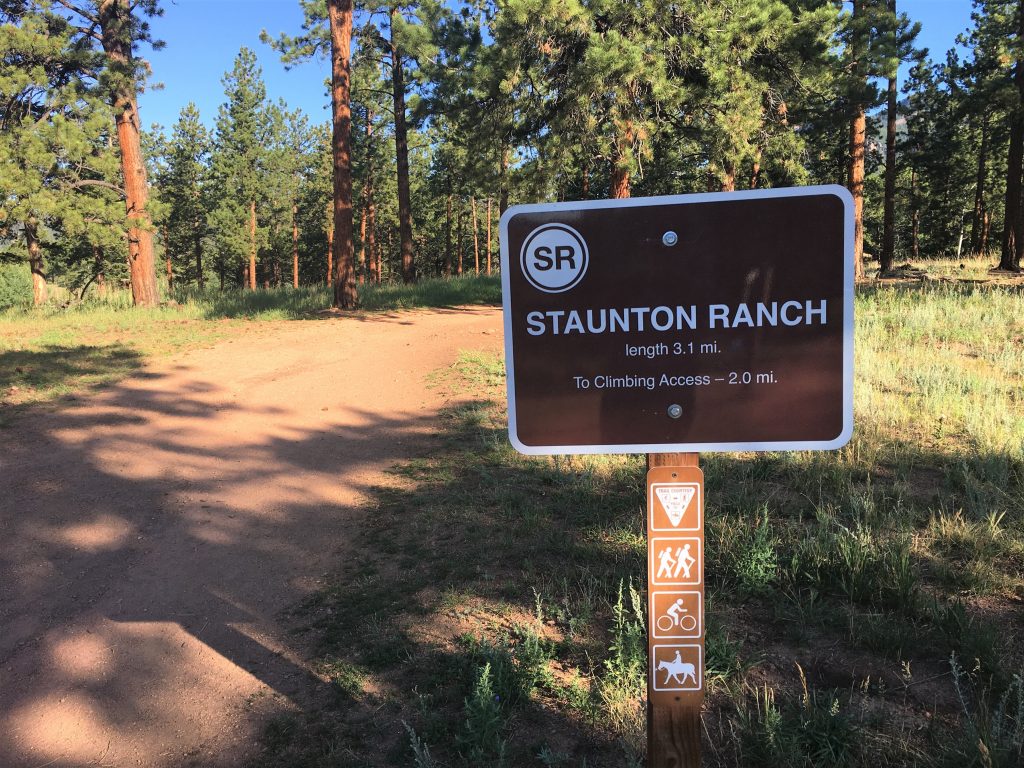
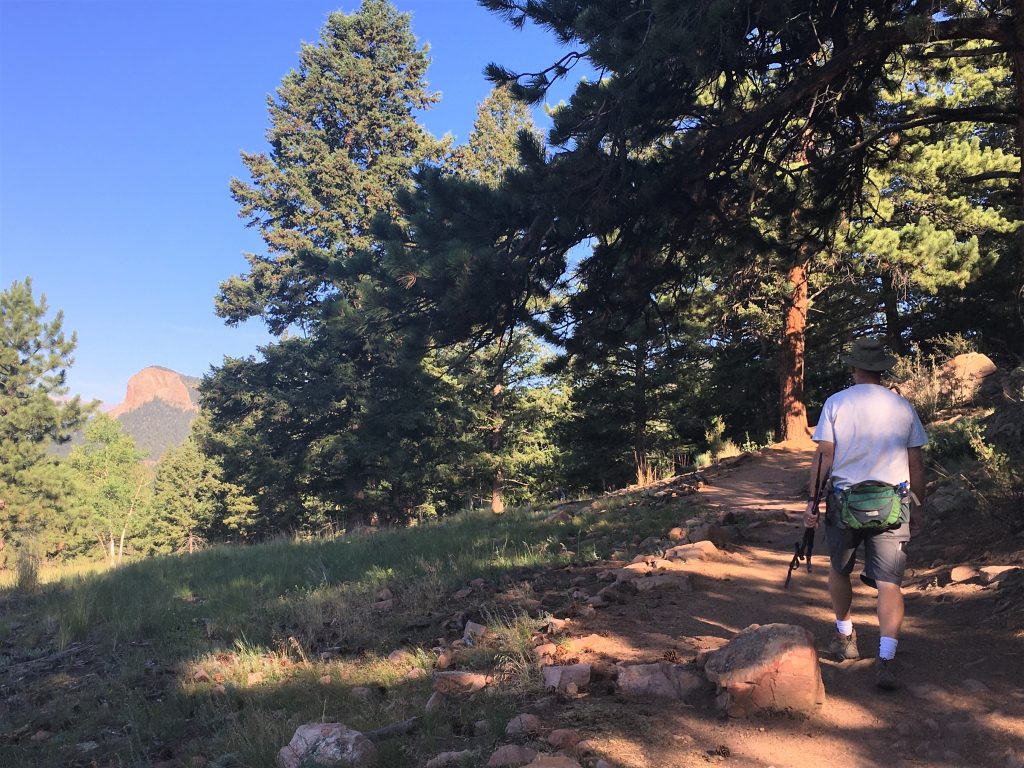
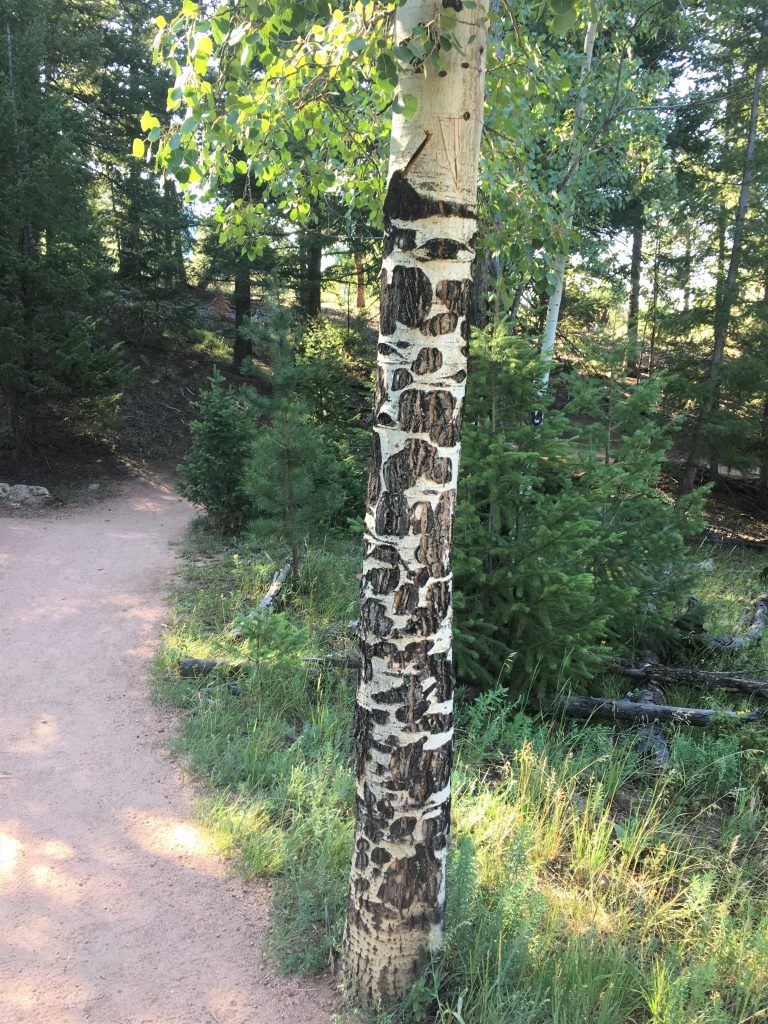
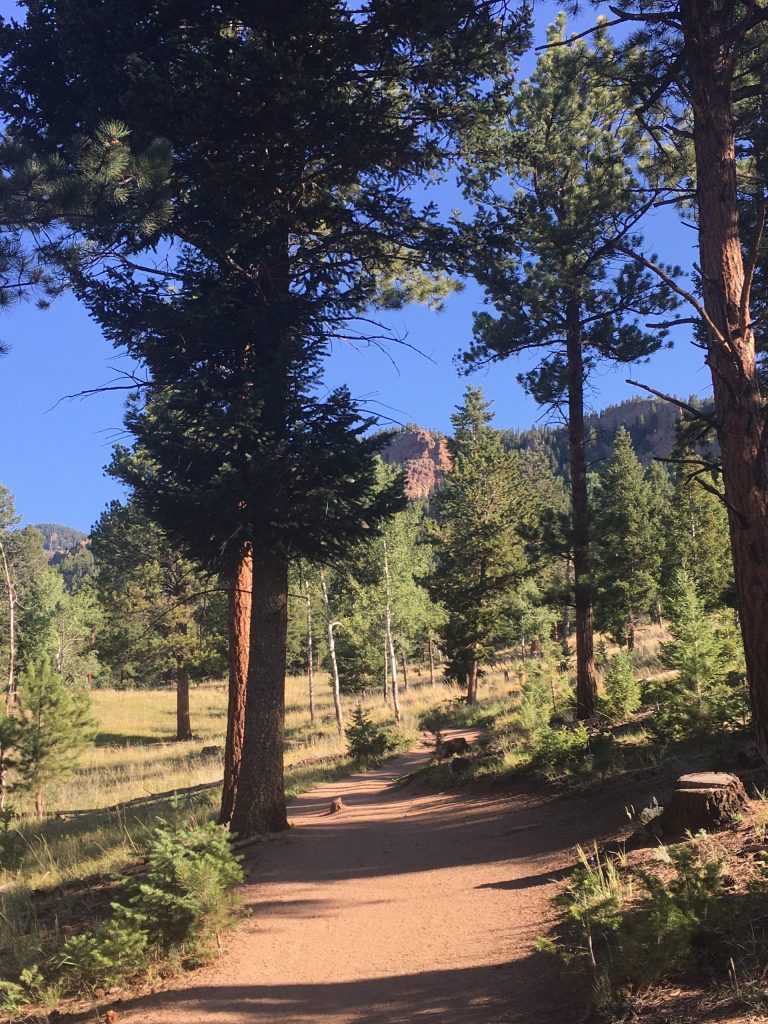
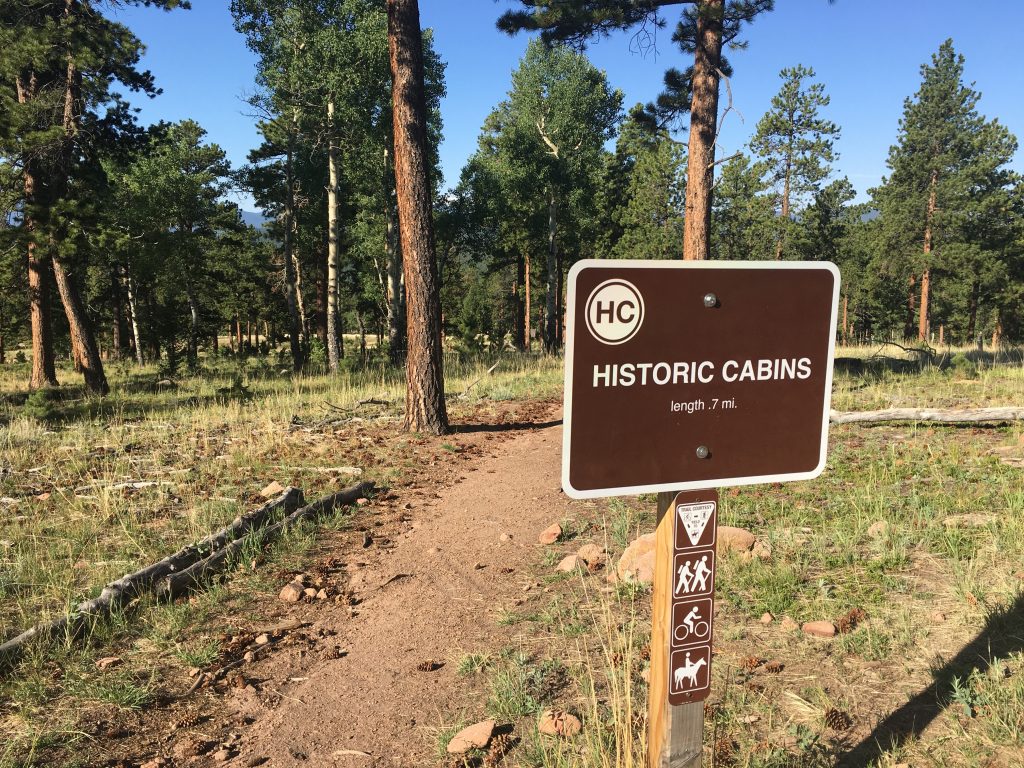

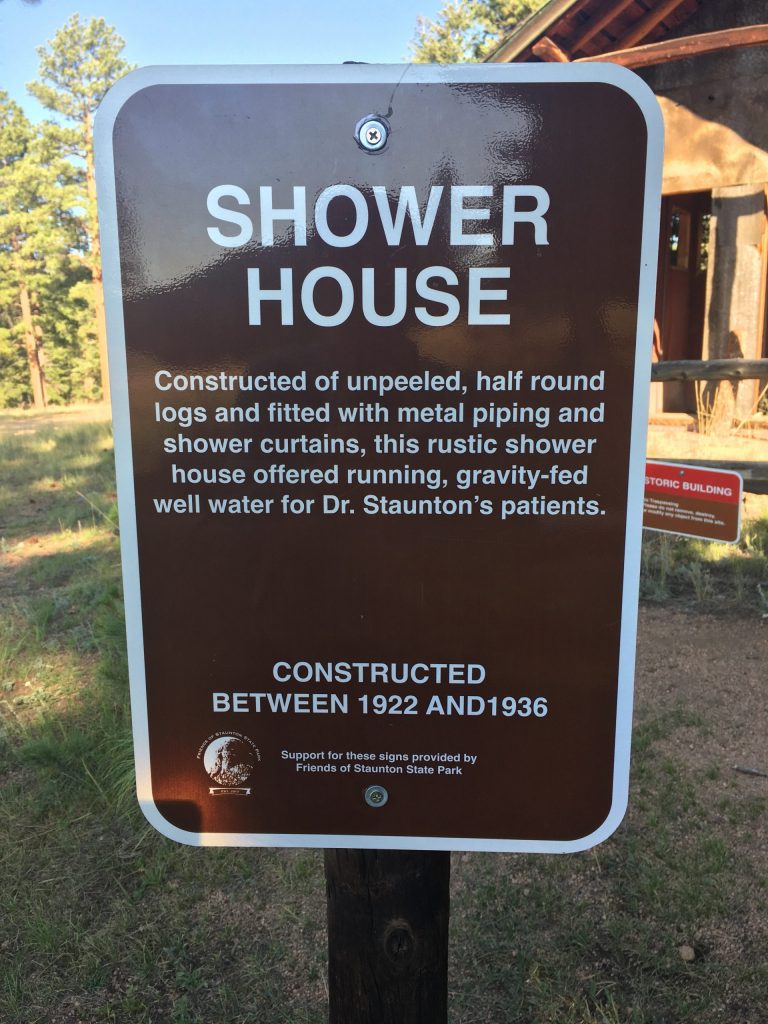
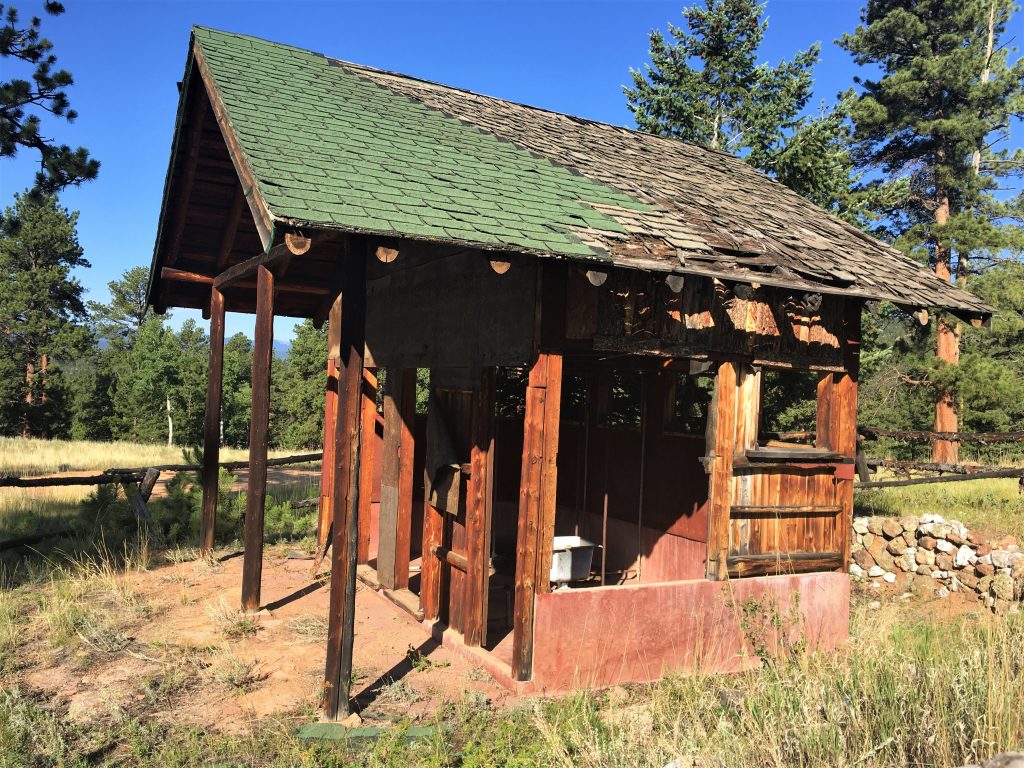
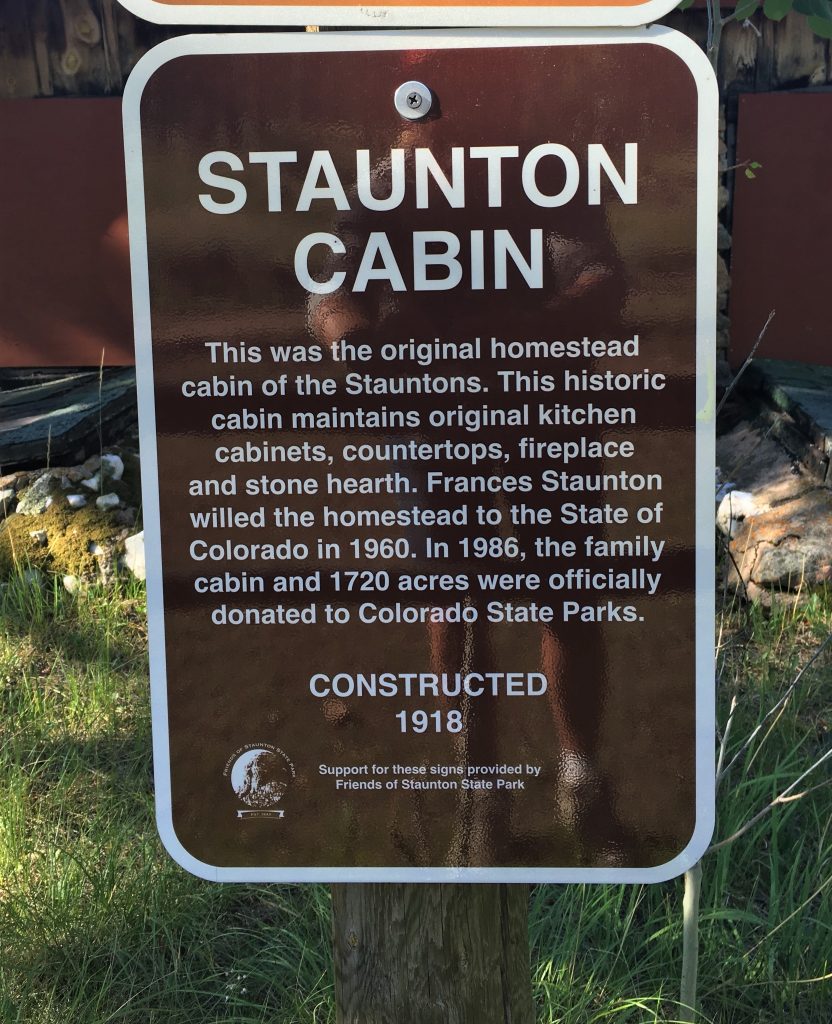
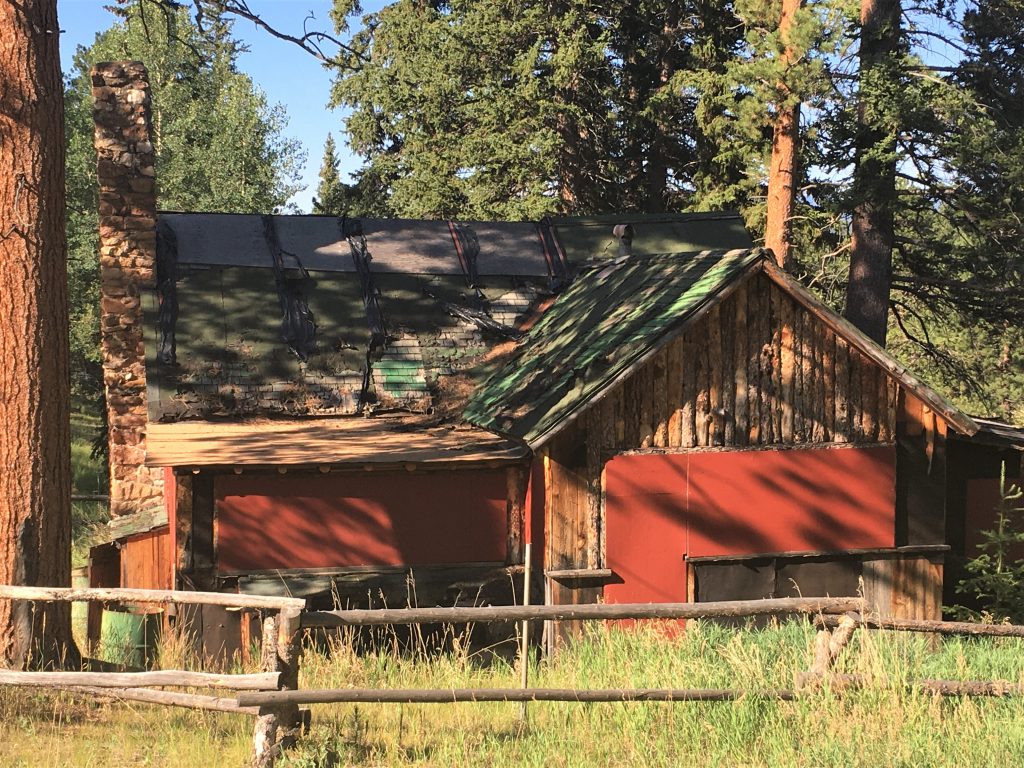
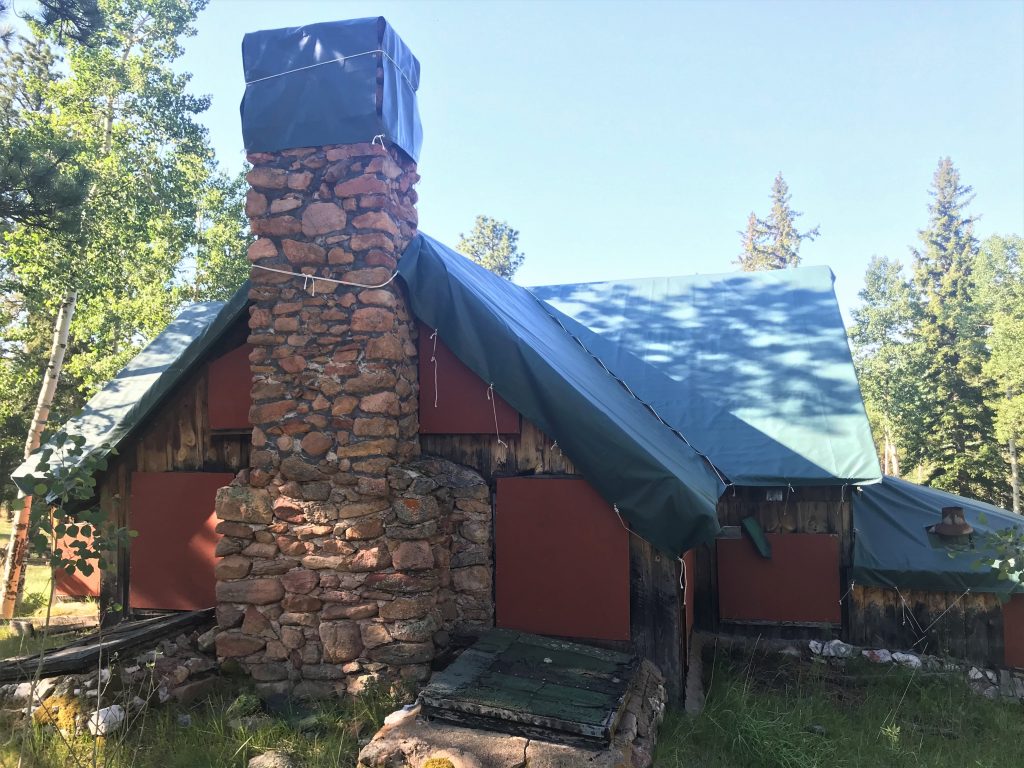
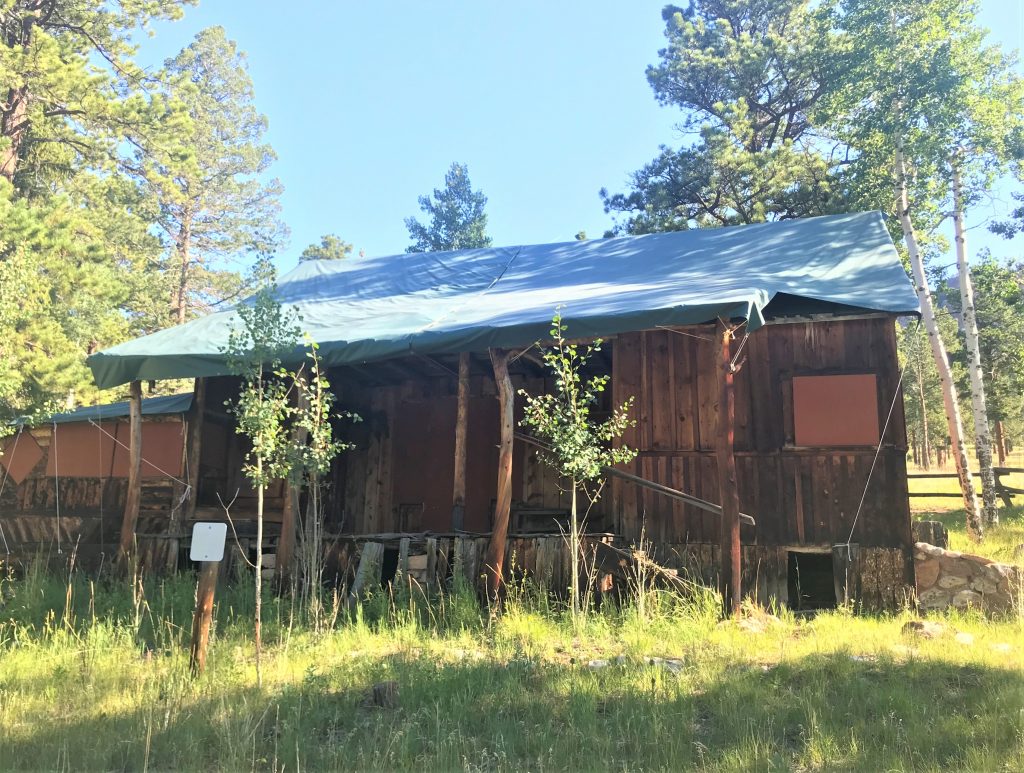
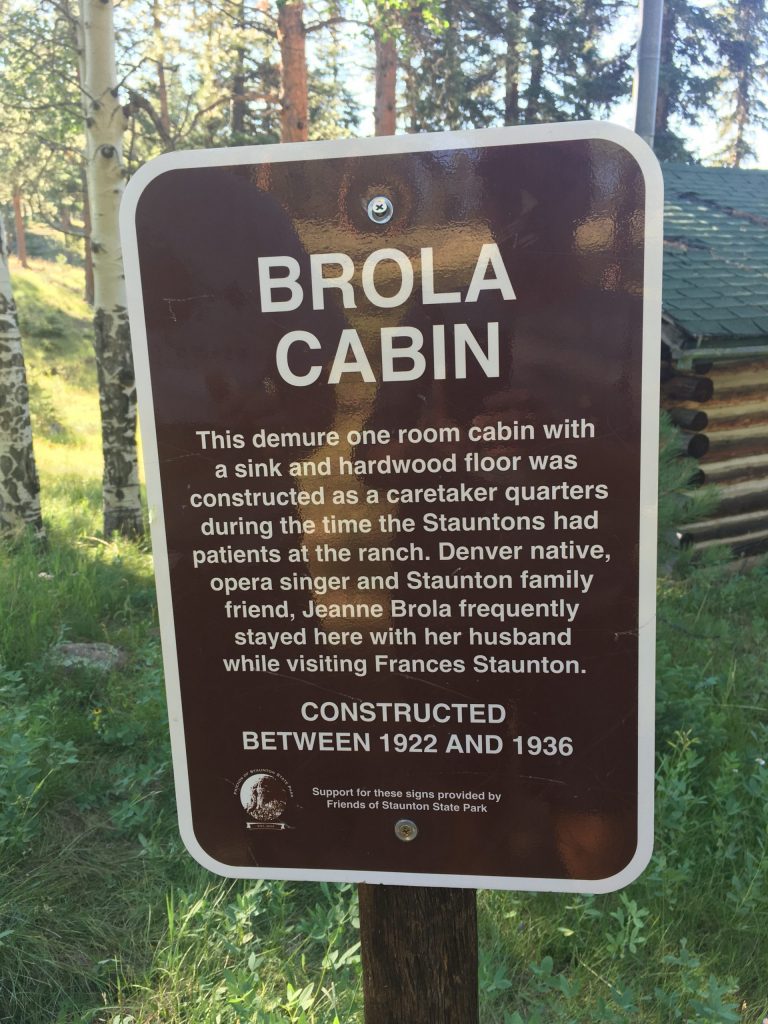

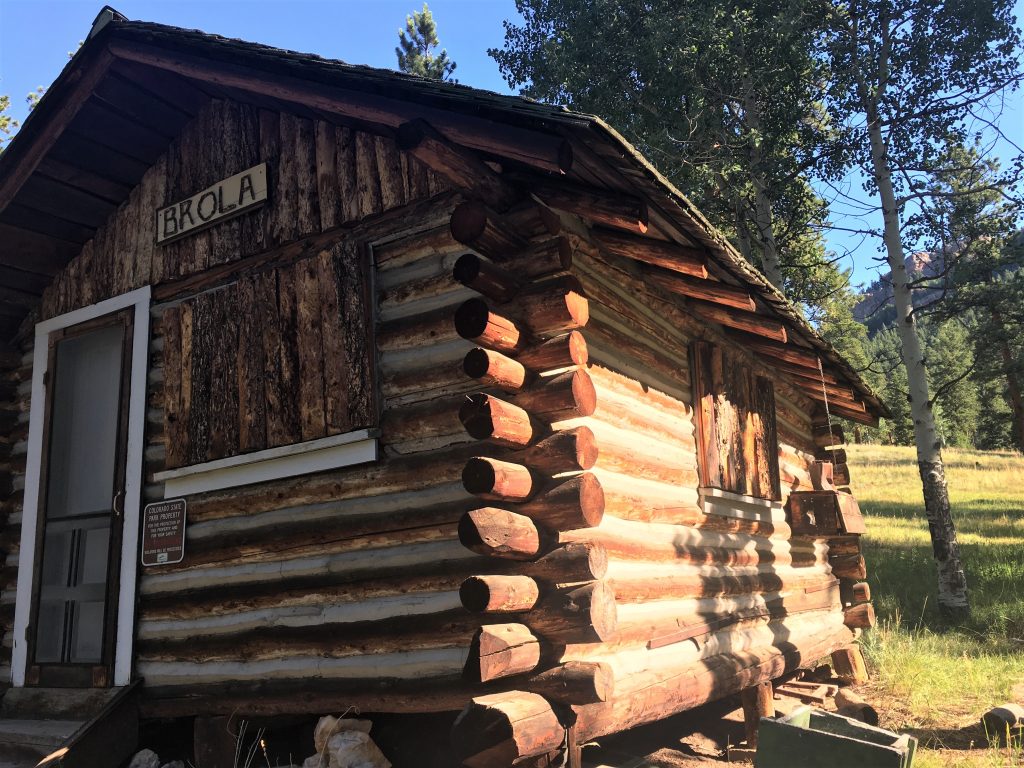
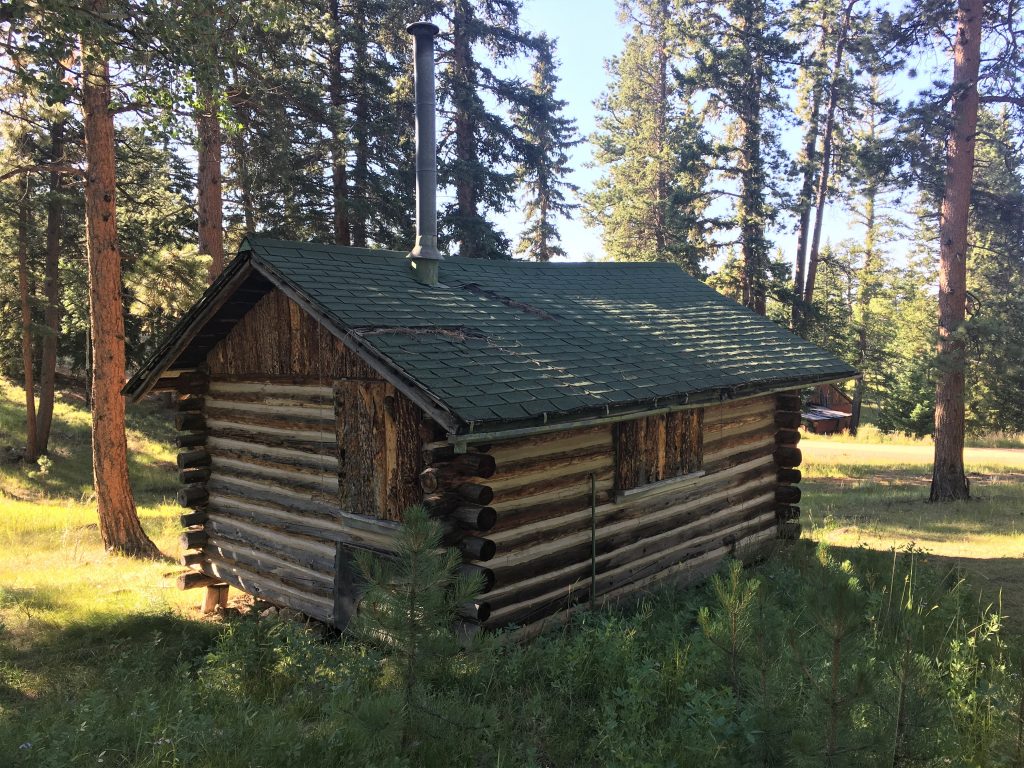
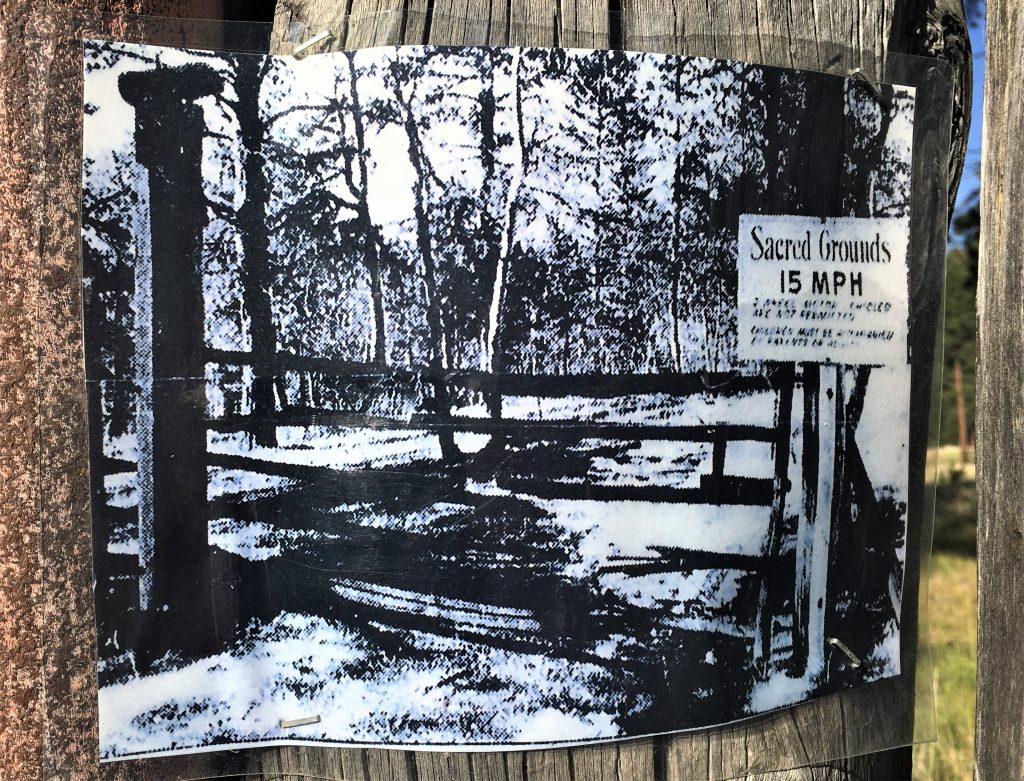
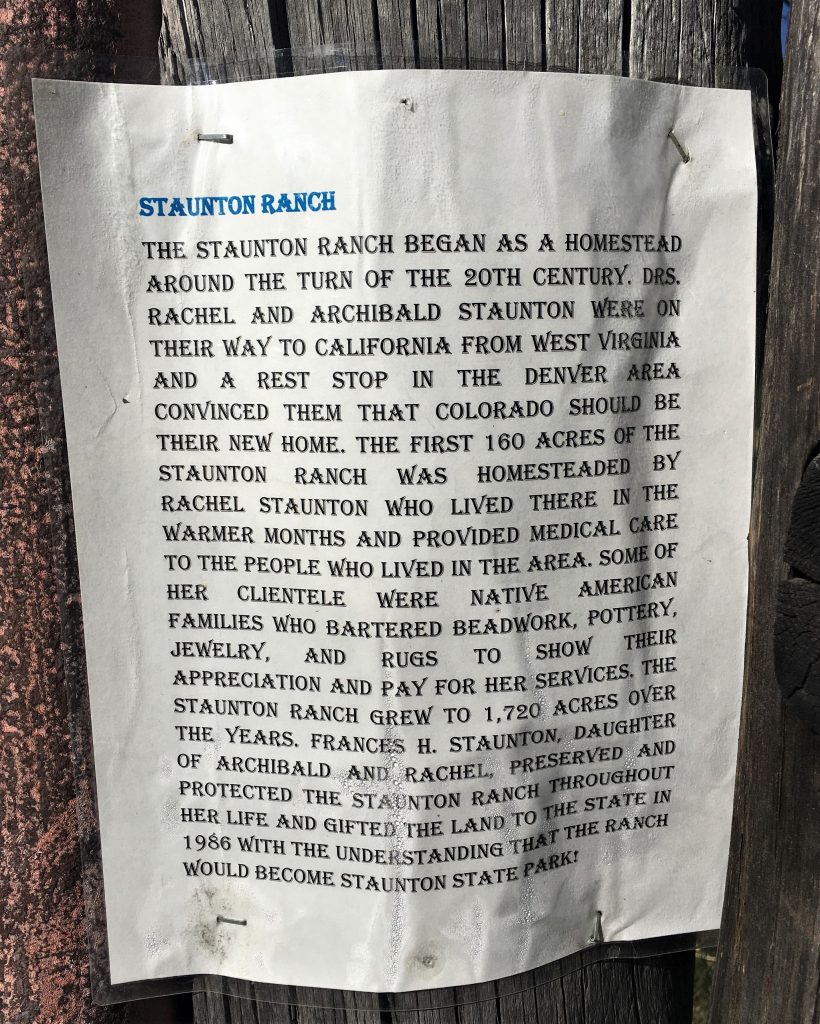
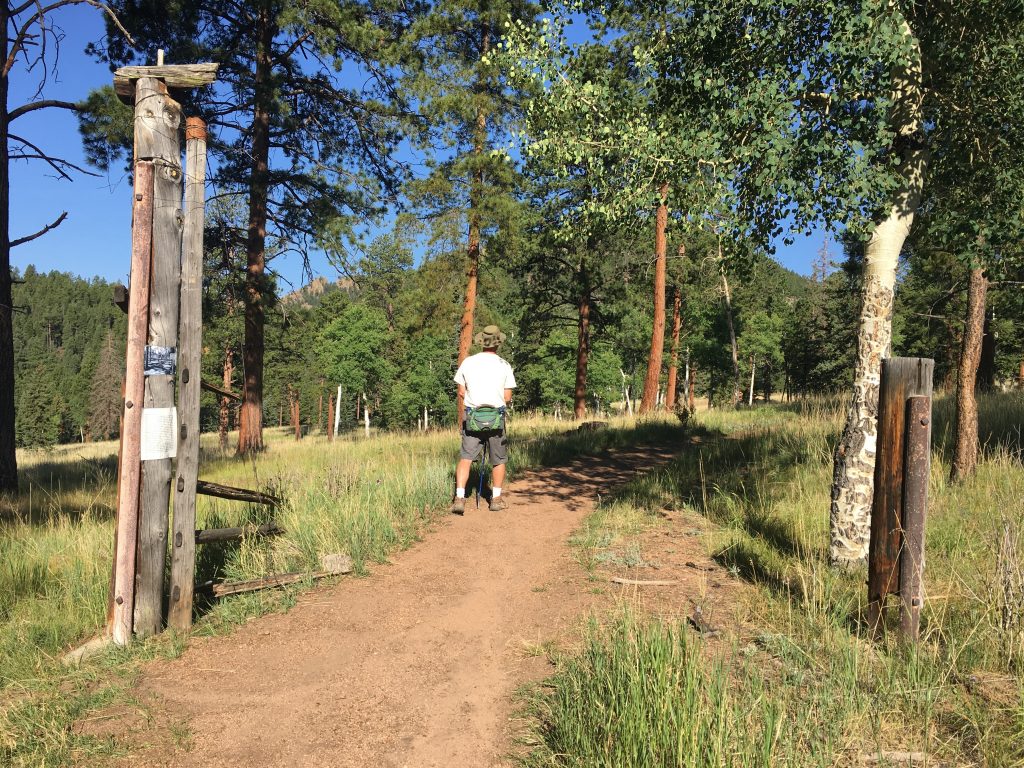
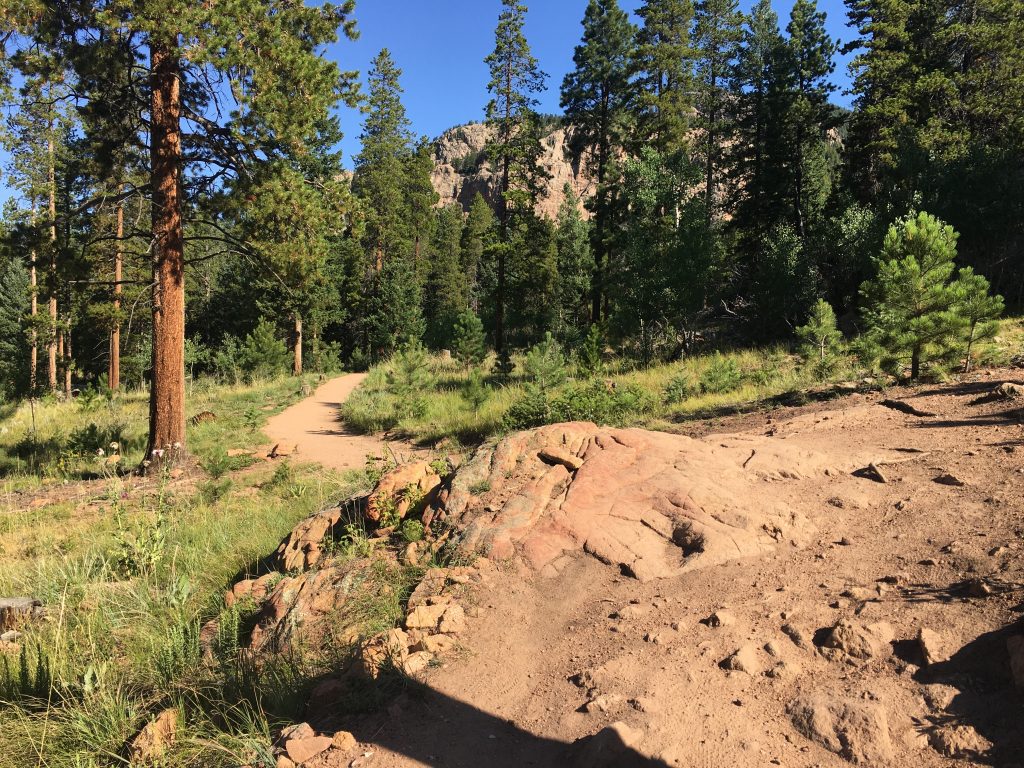
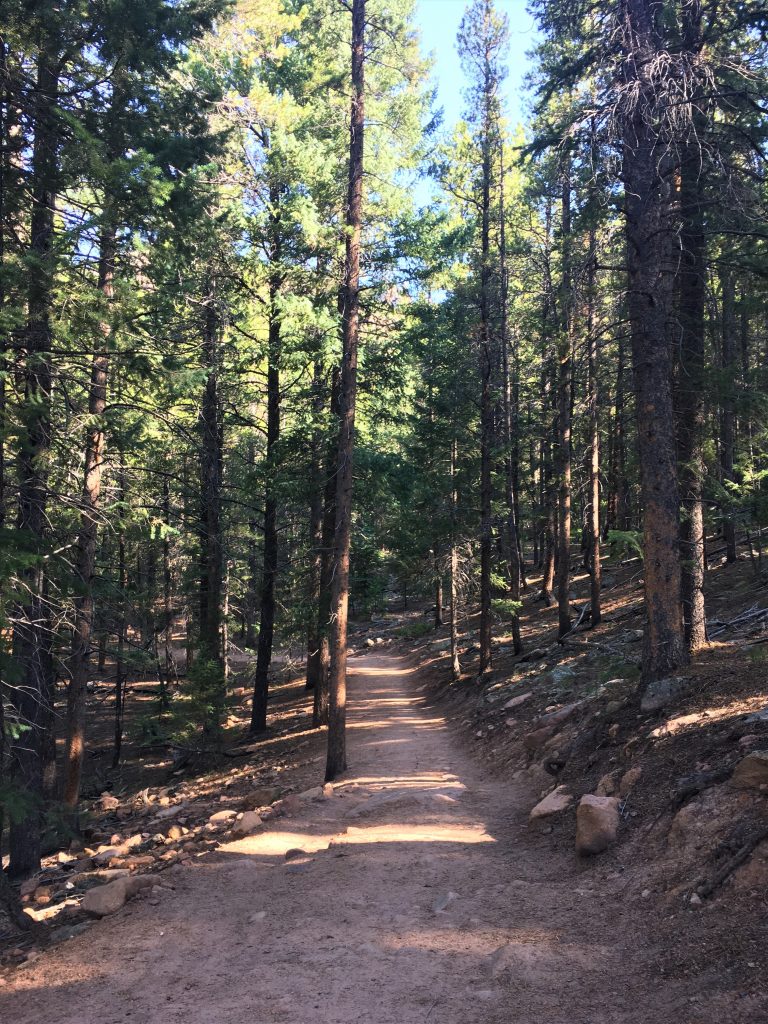
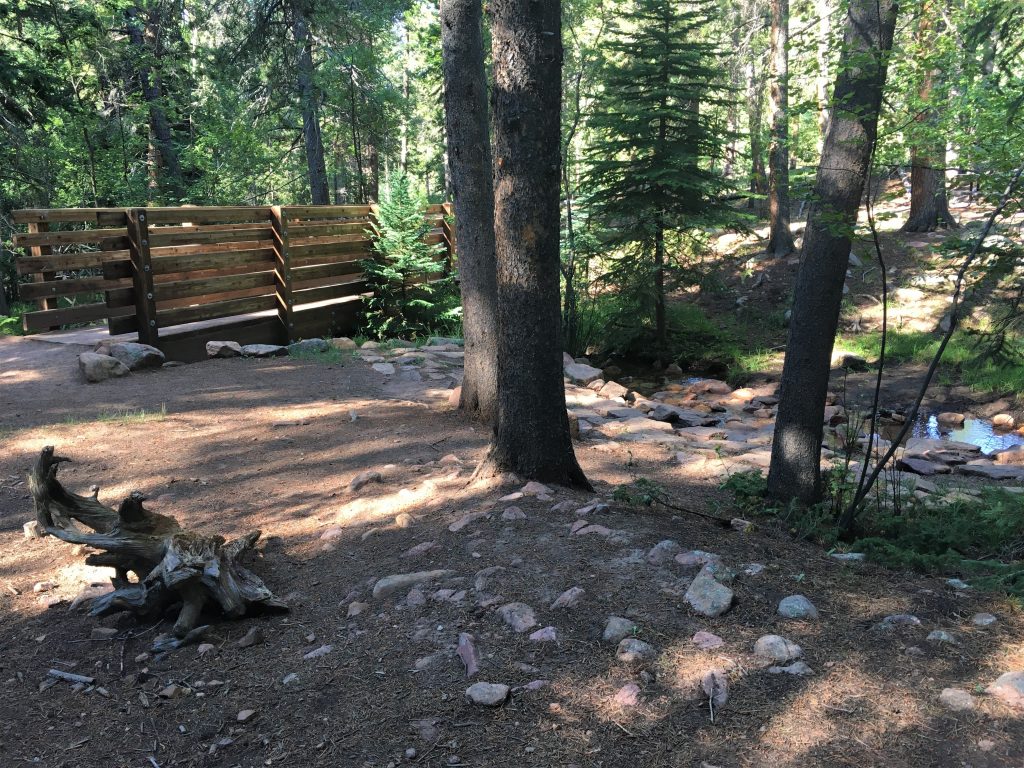
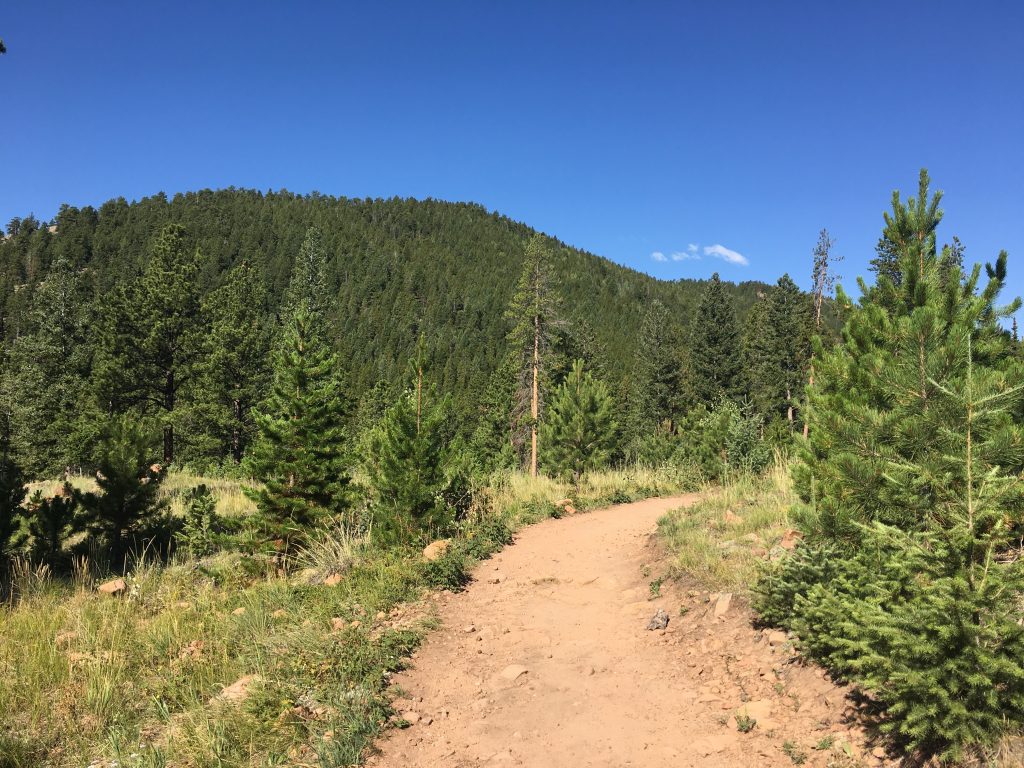
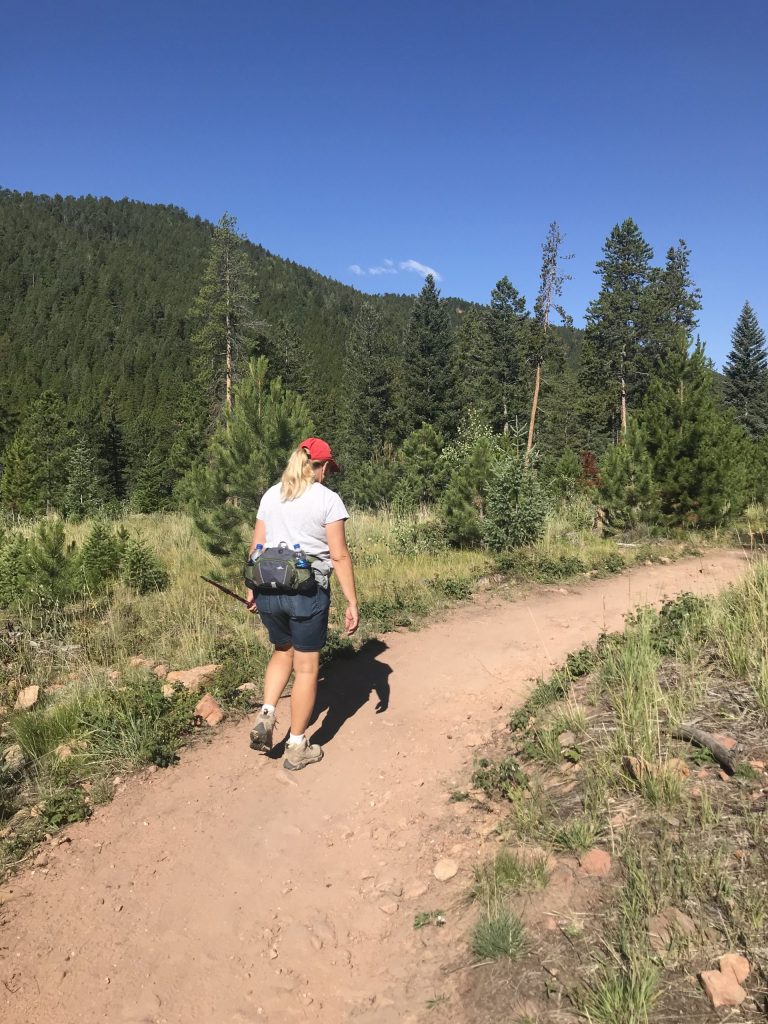
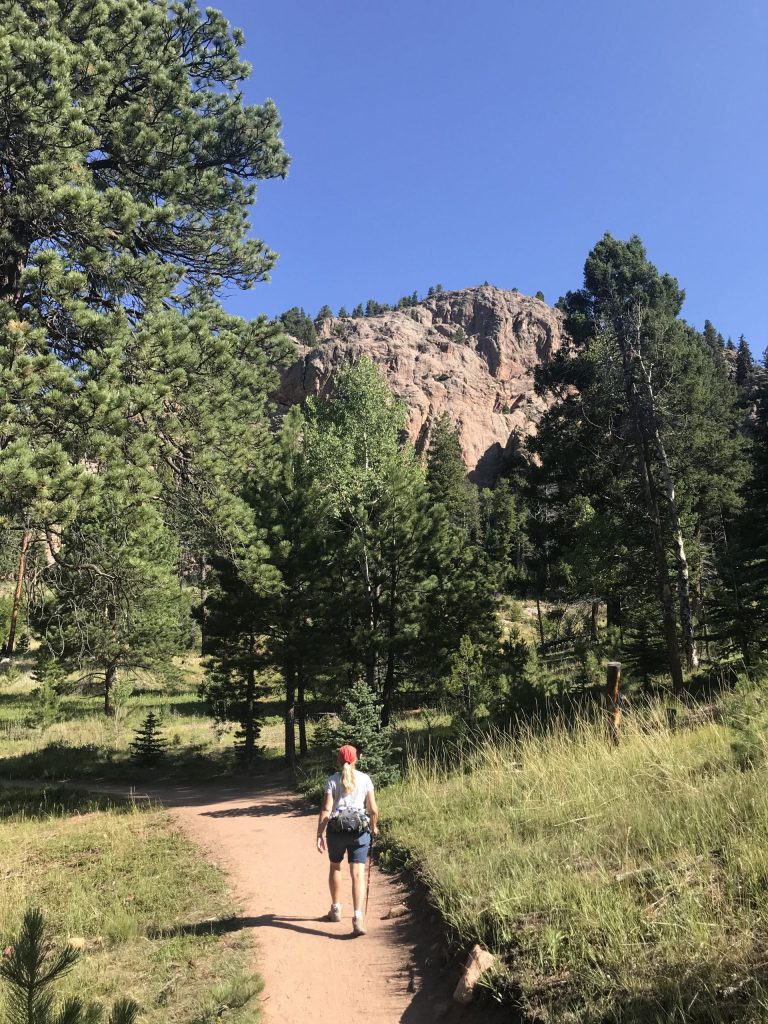
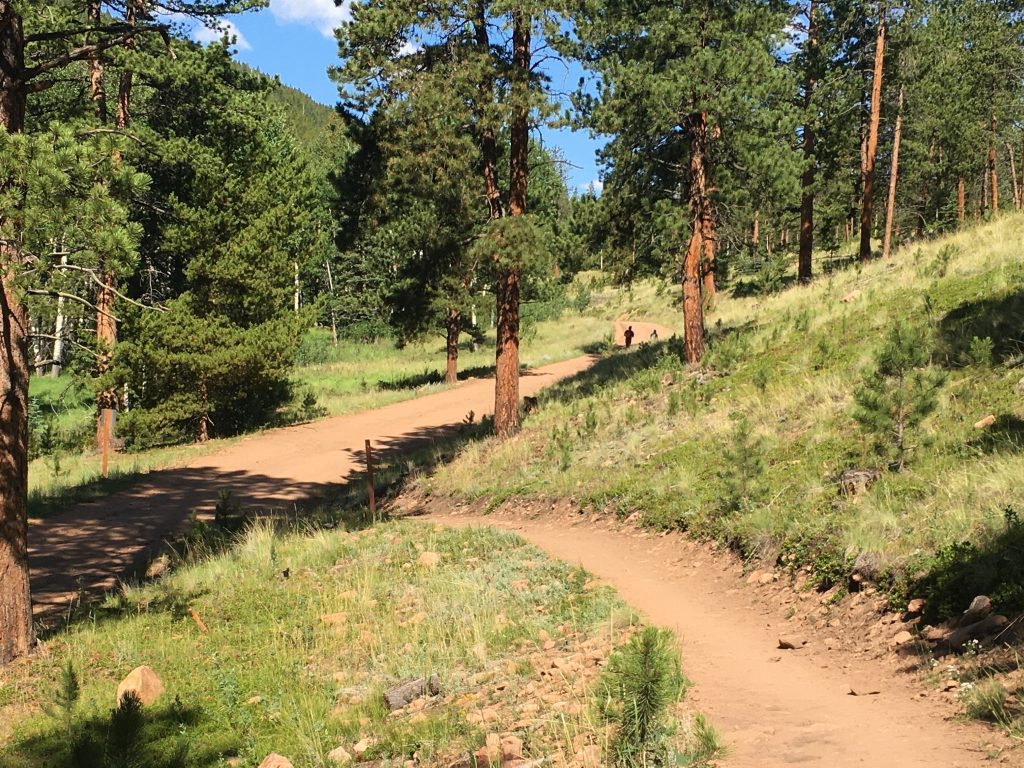
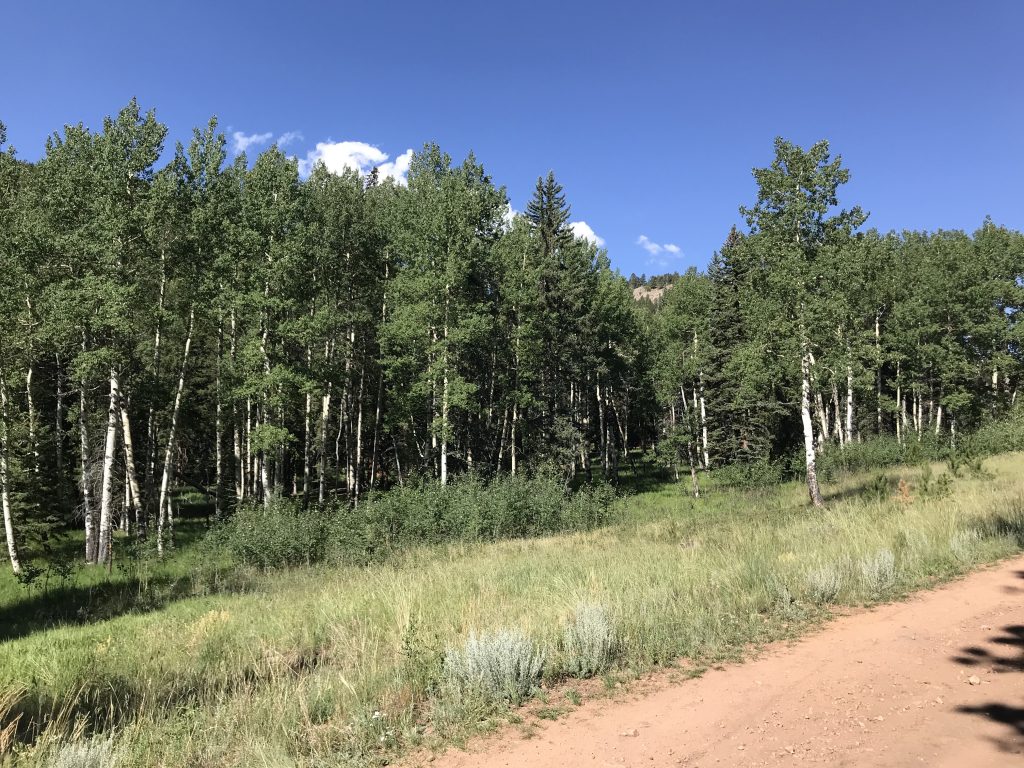
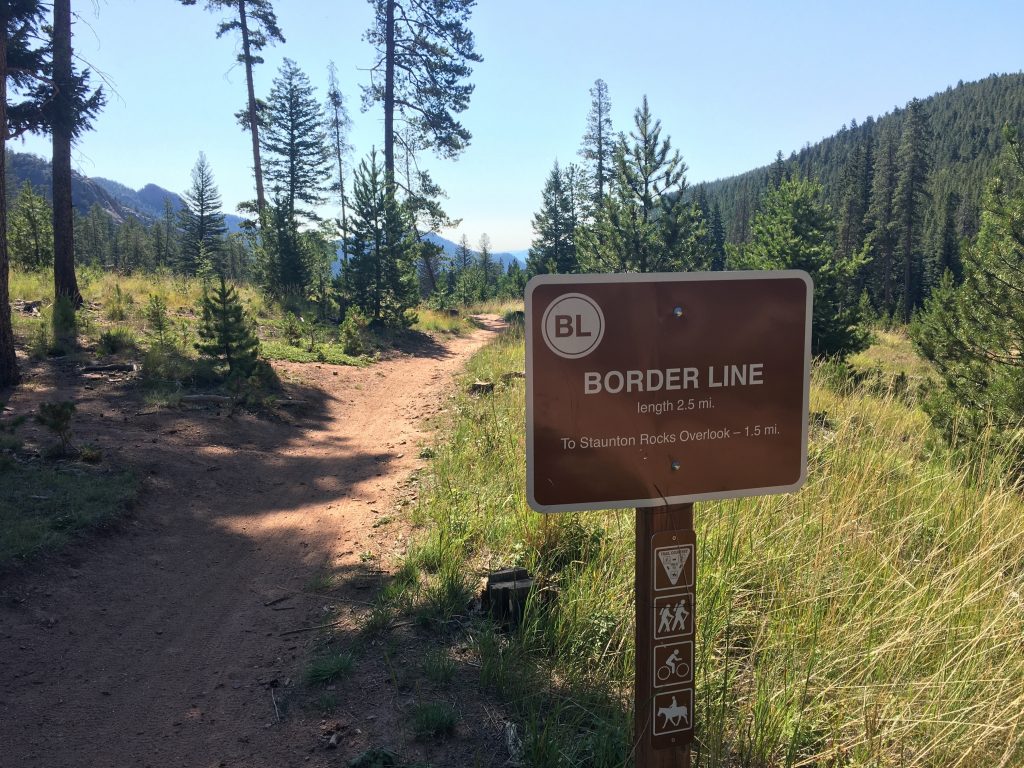
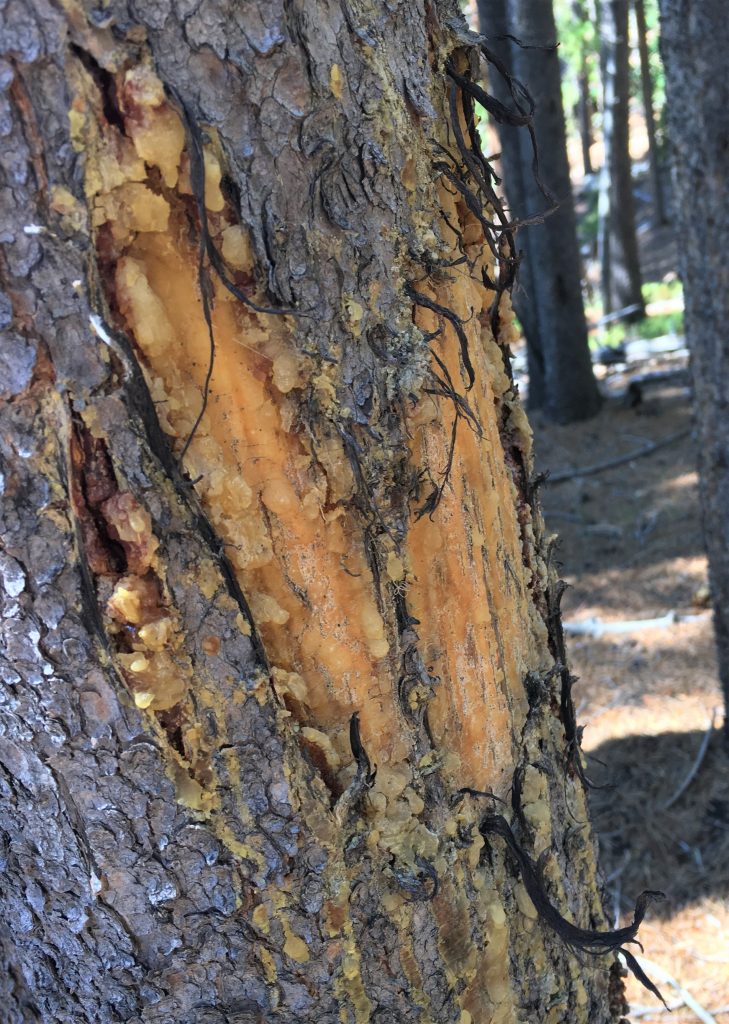
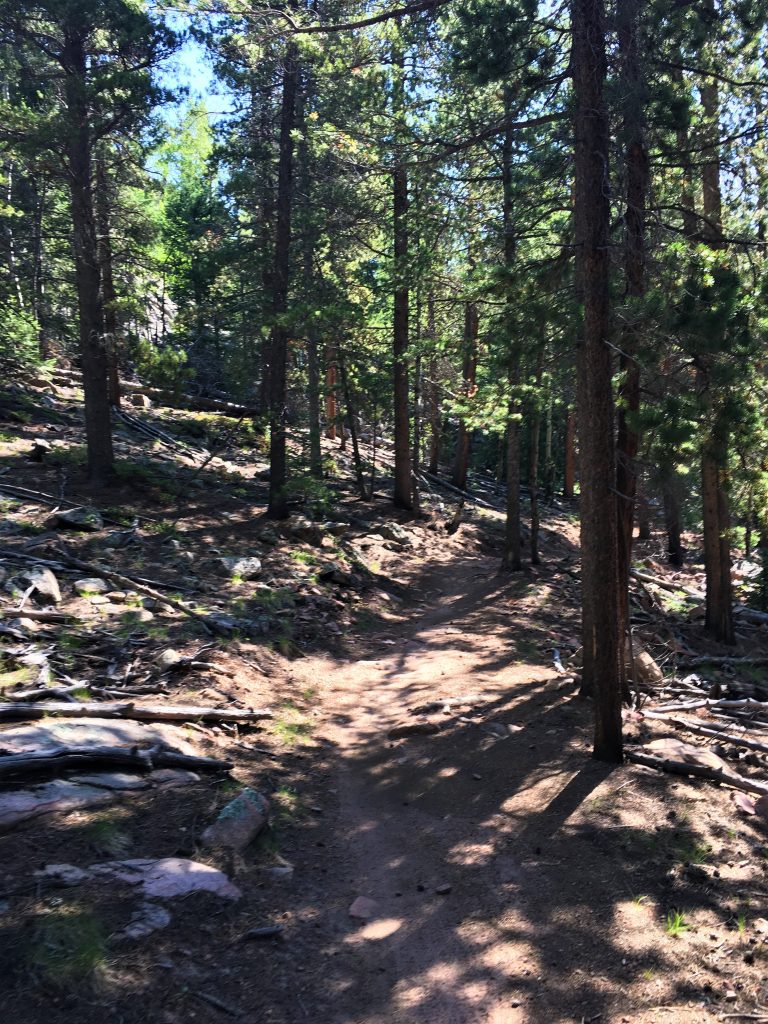

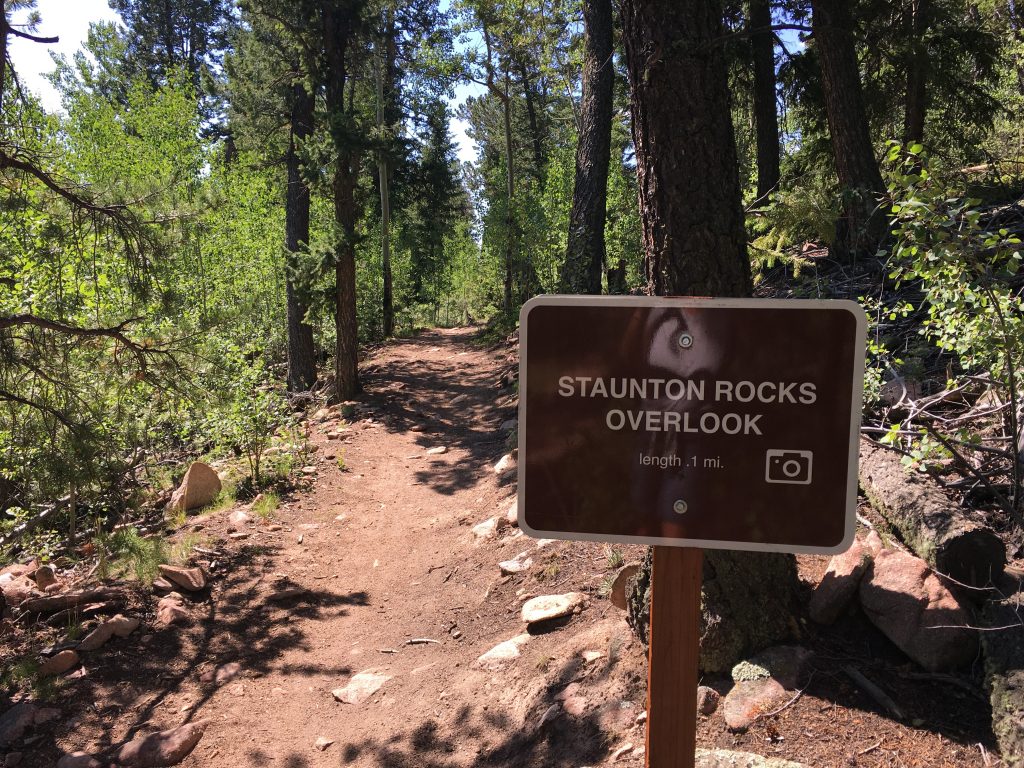
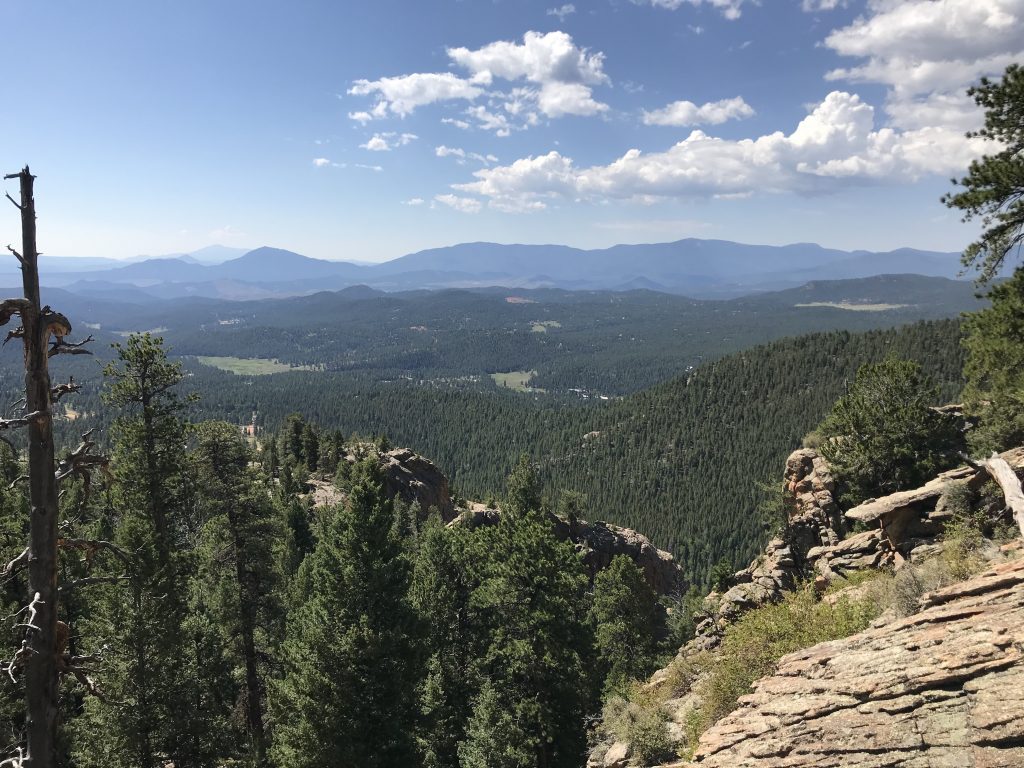
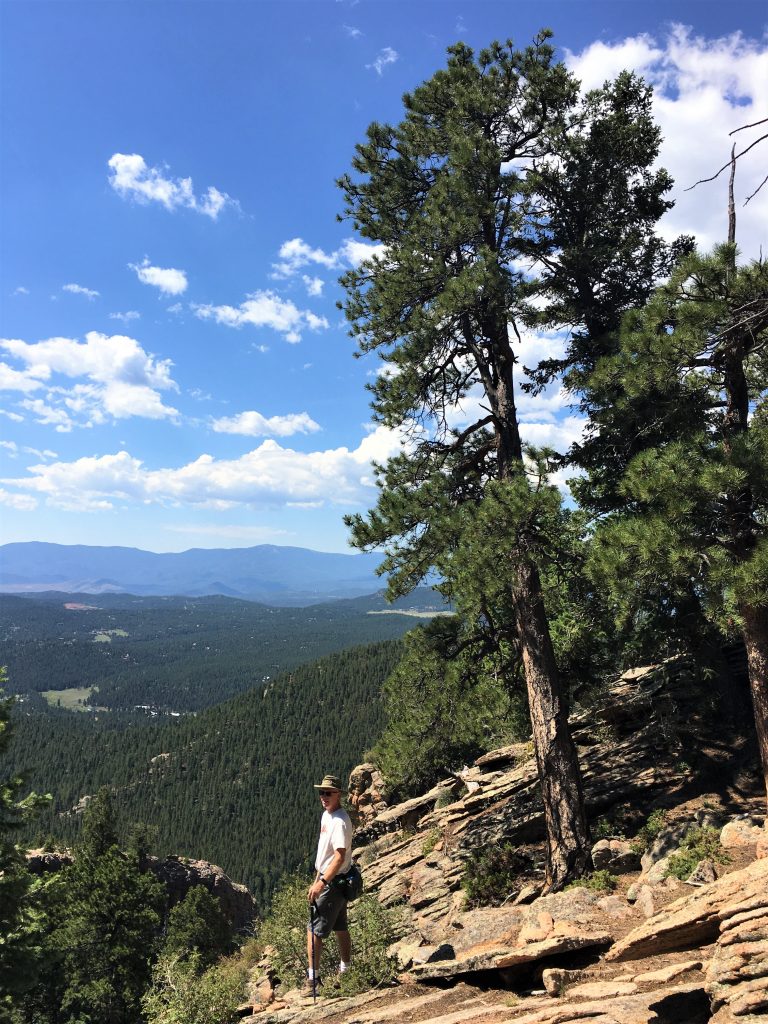
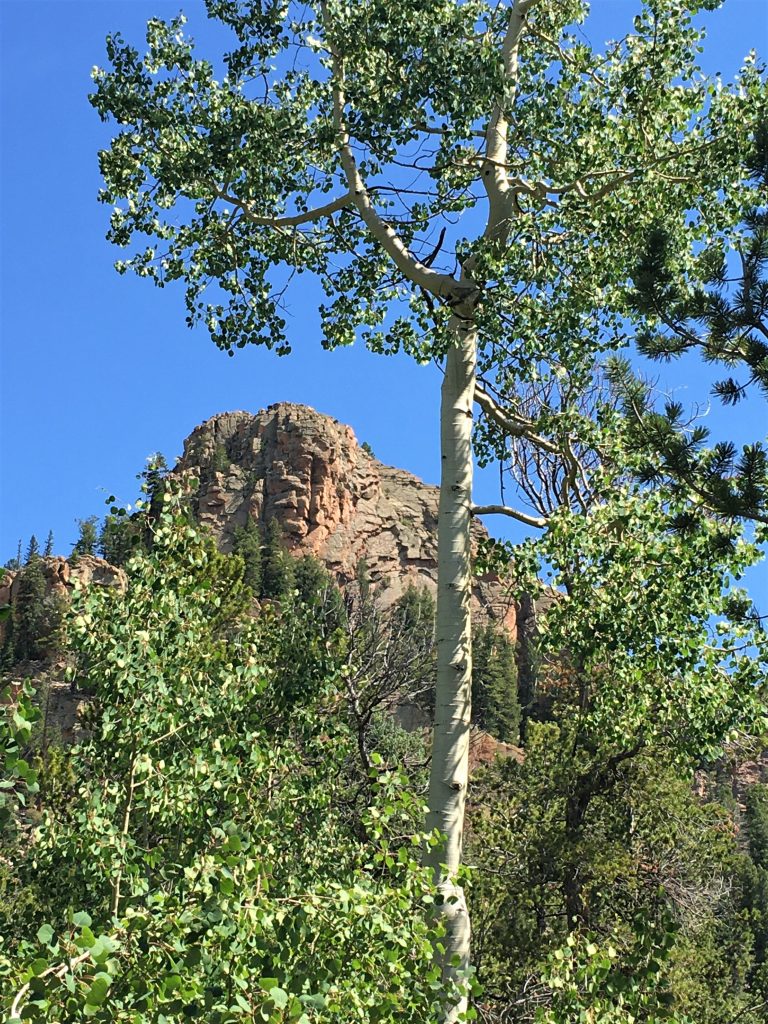
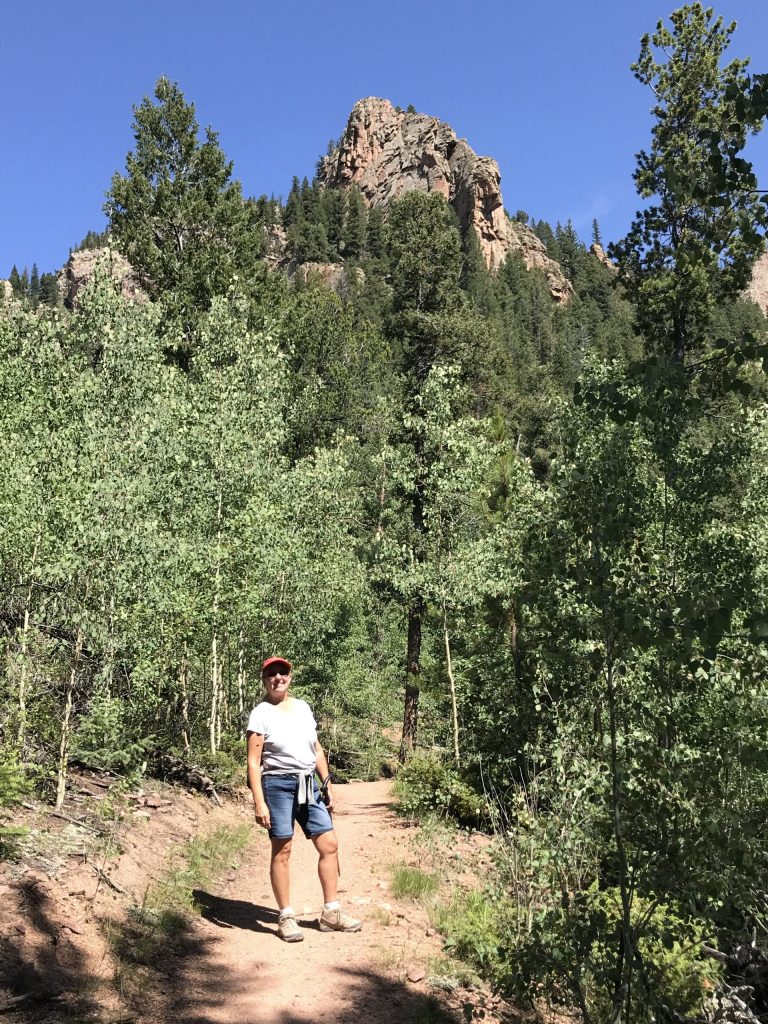

The life . . . 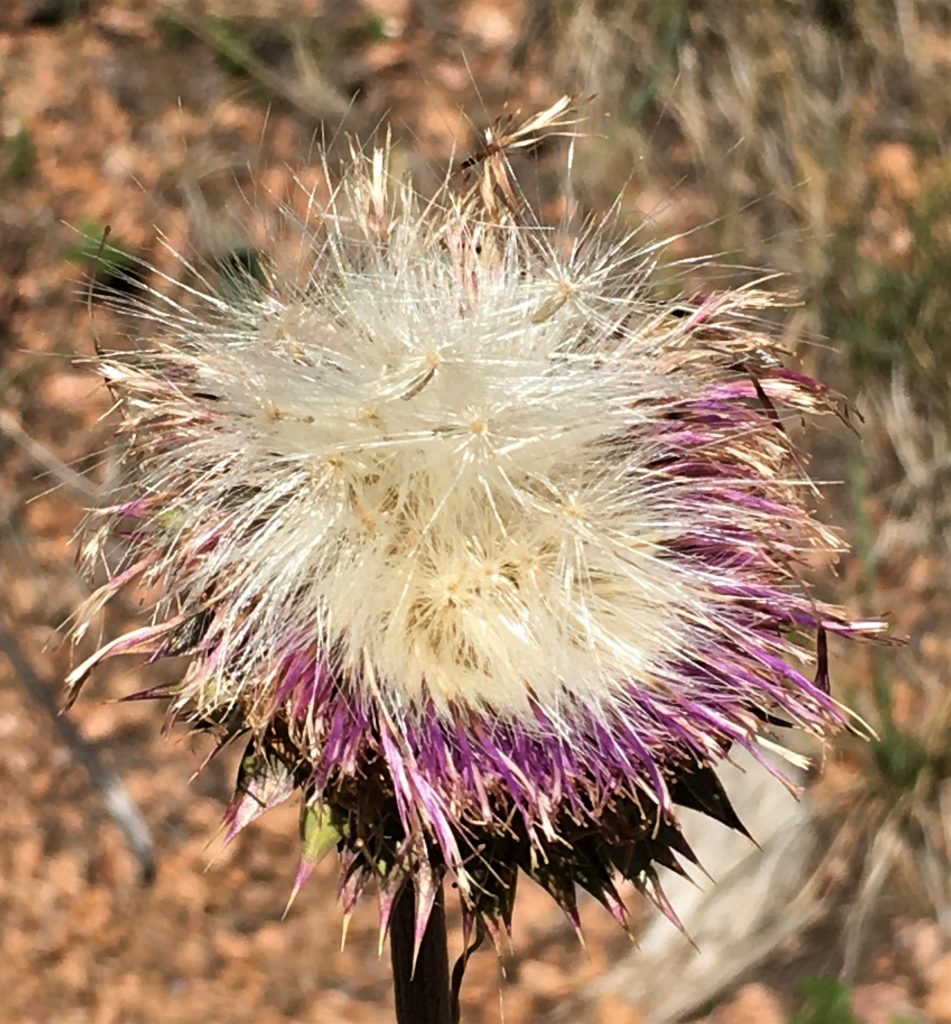
. . . and death . . . 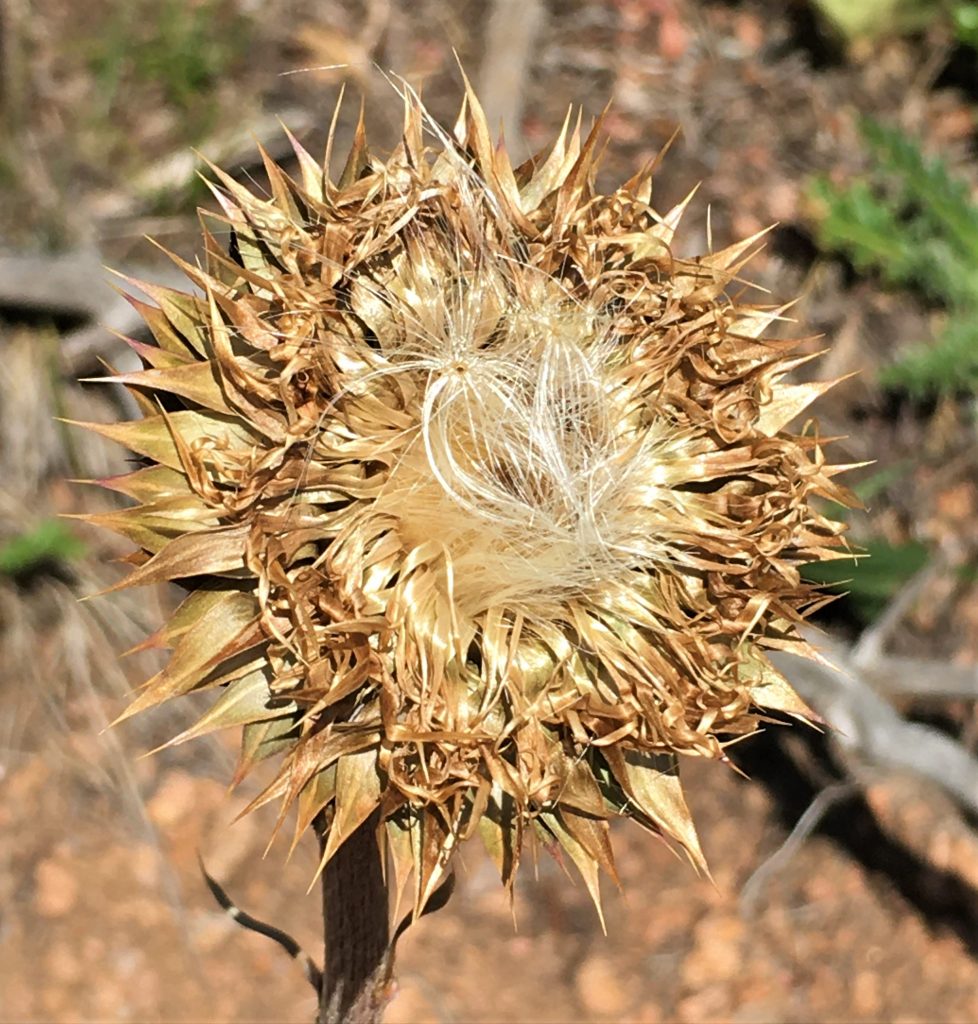
. . .of a Western thistle

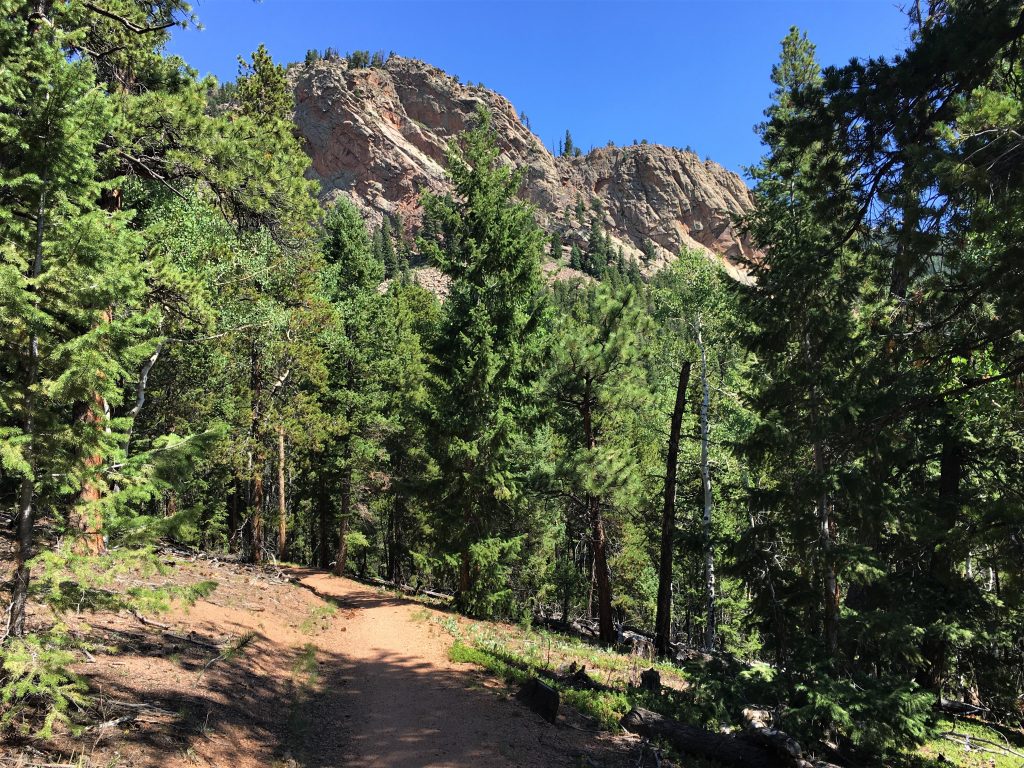
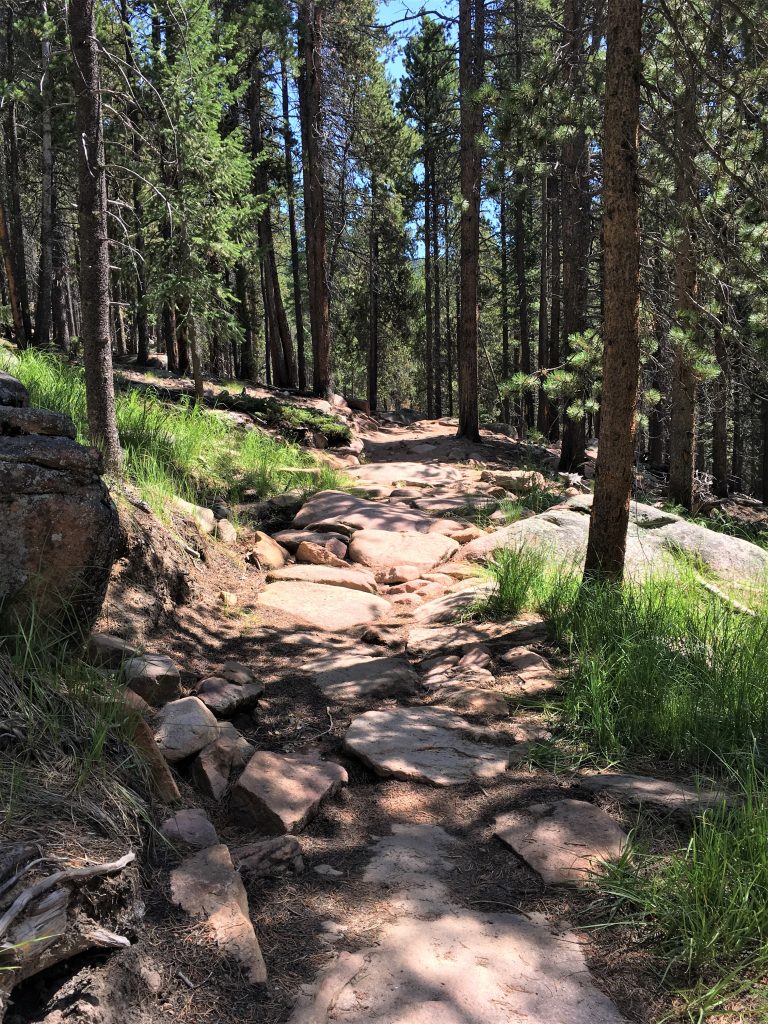
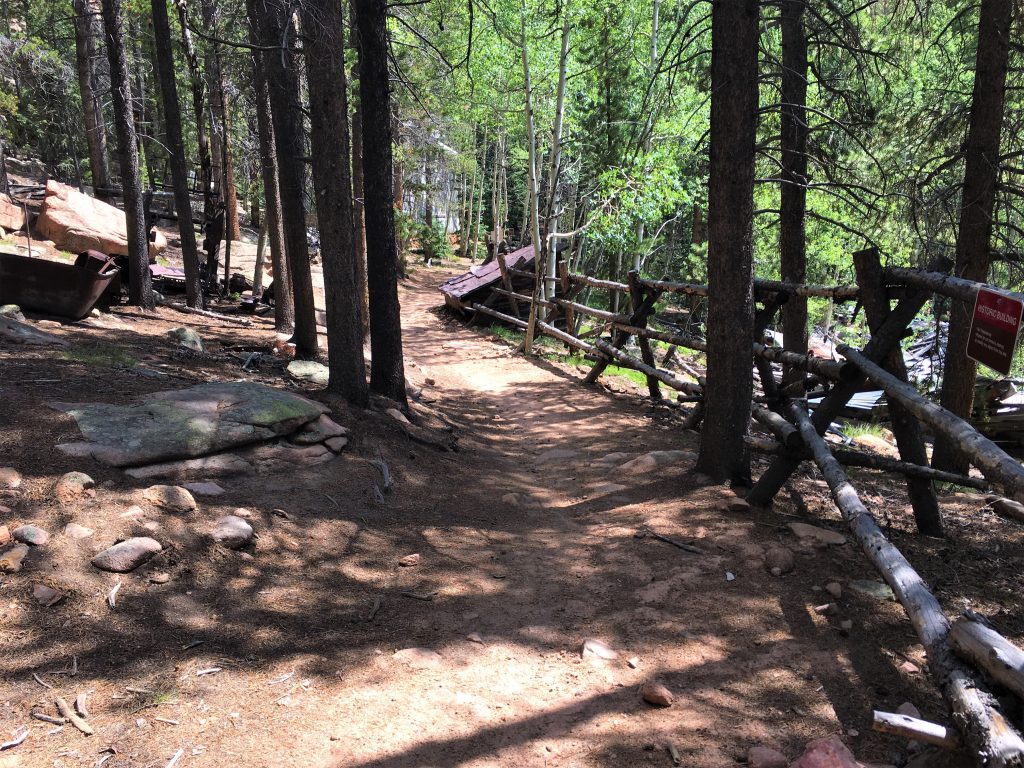
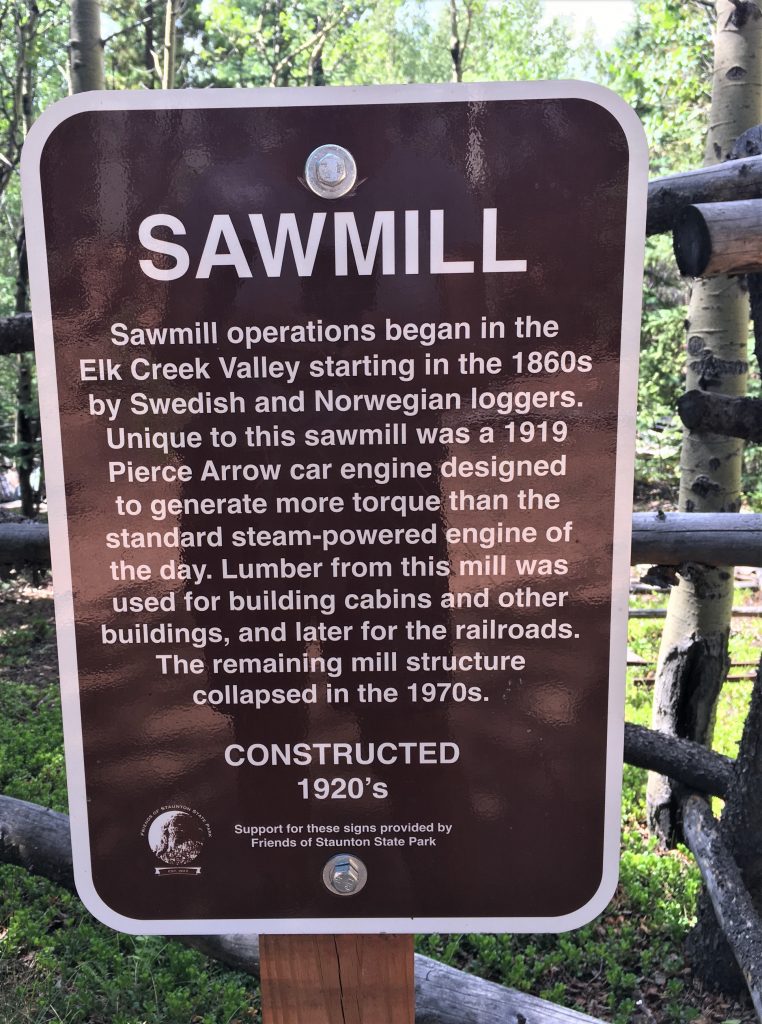
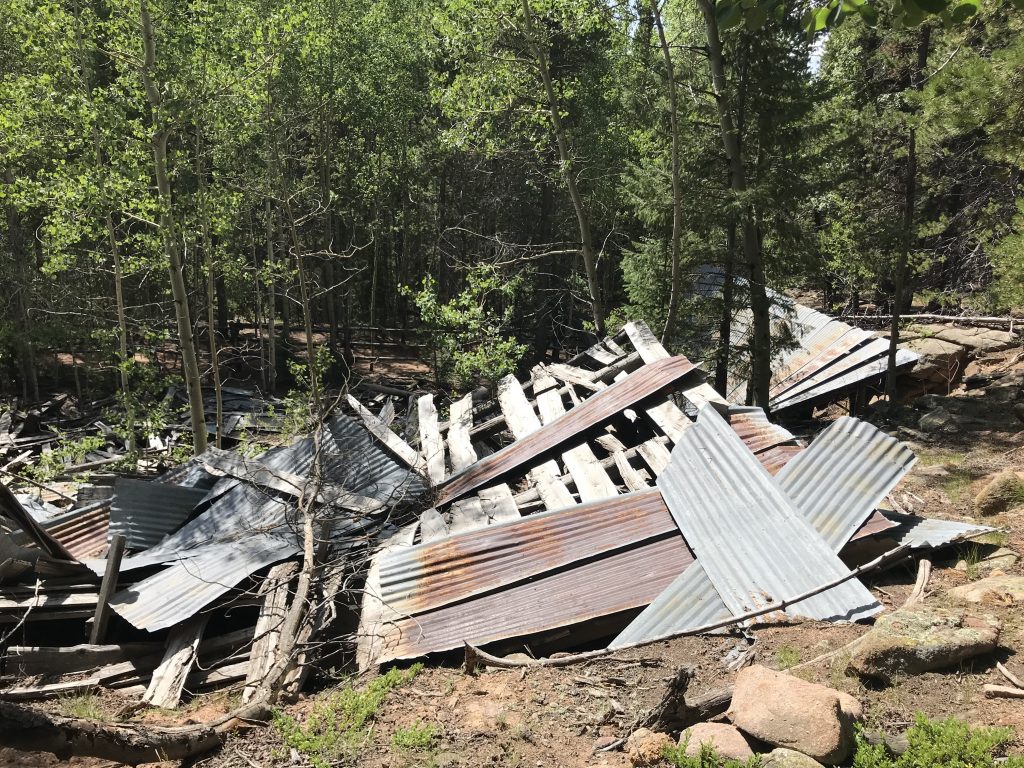
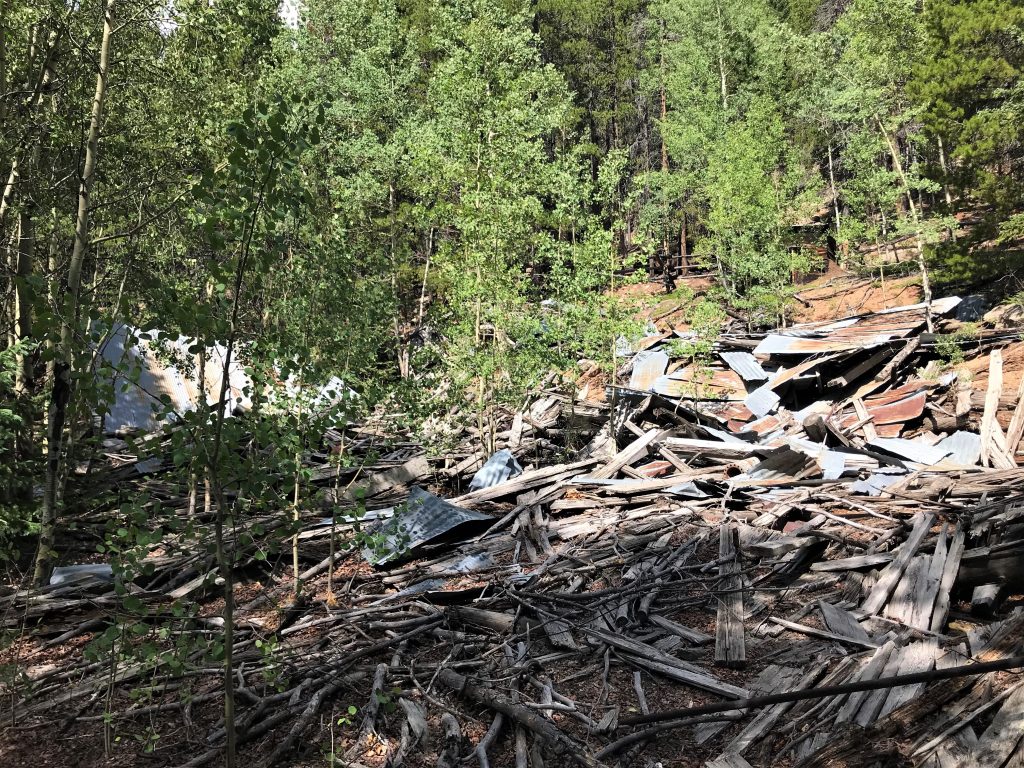
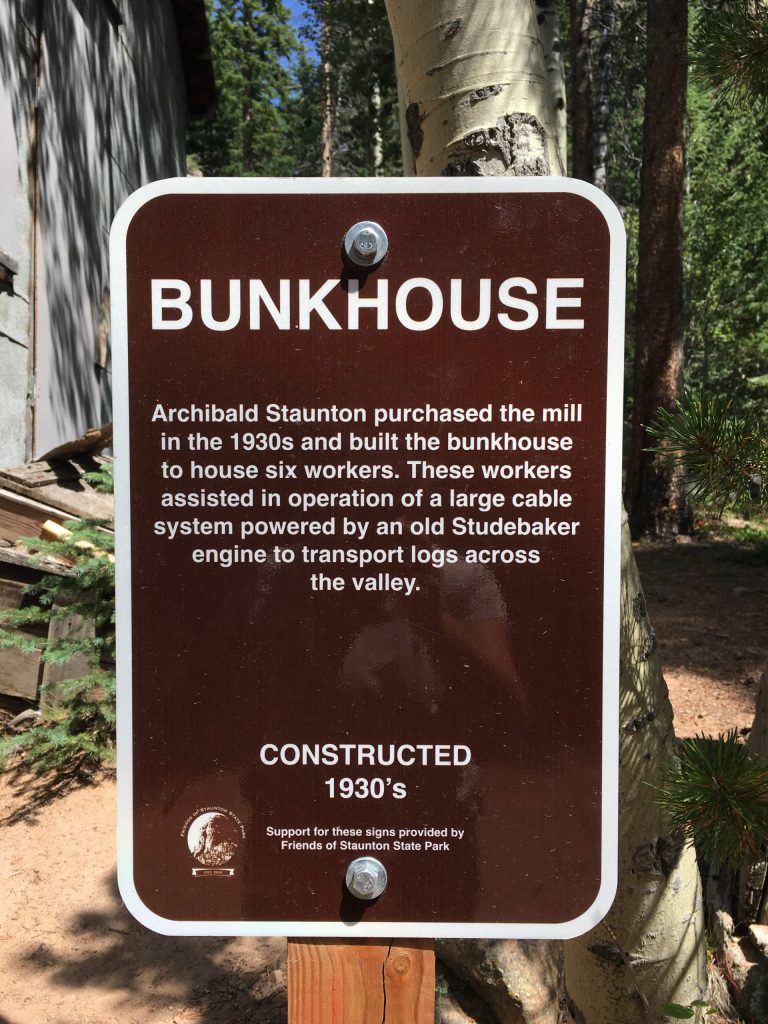
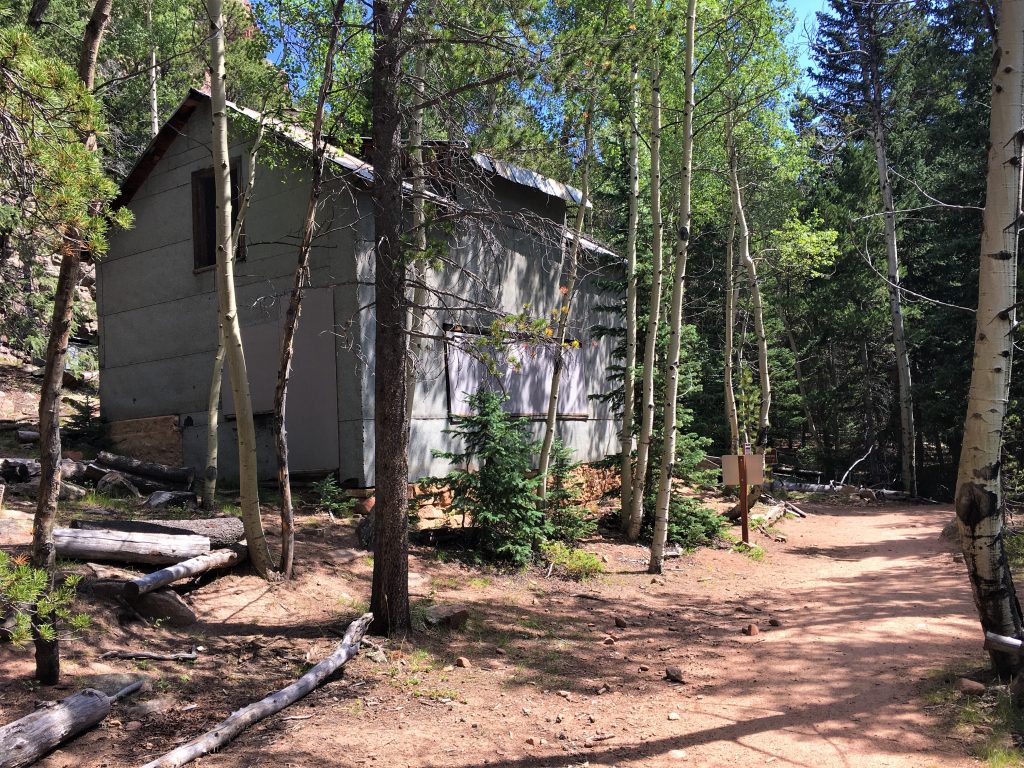
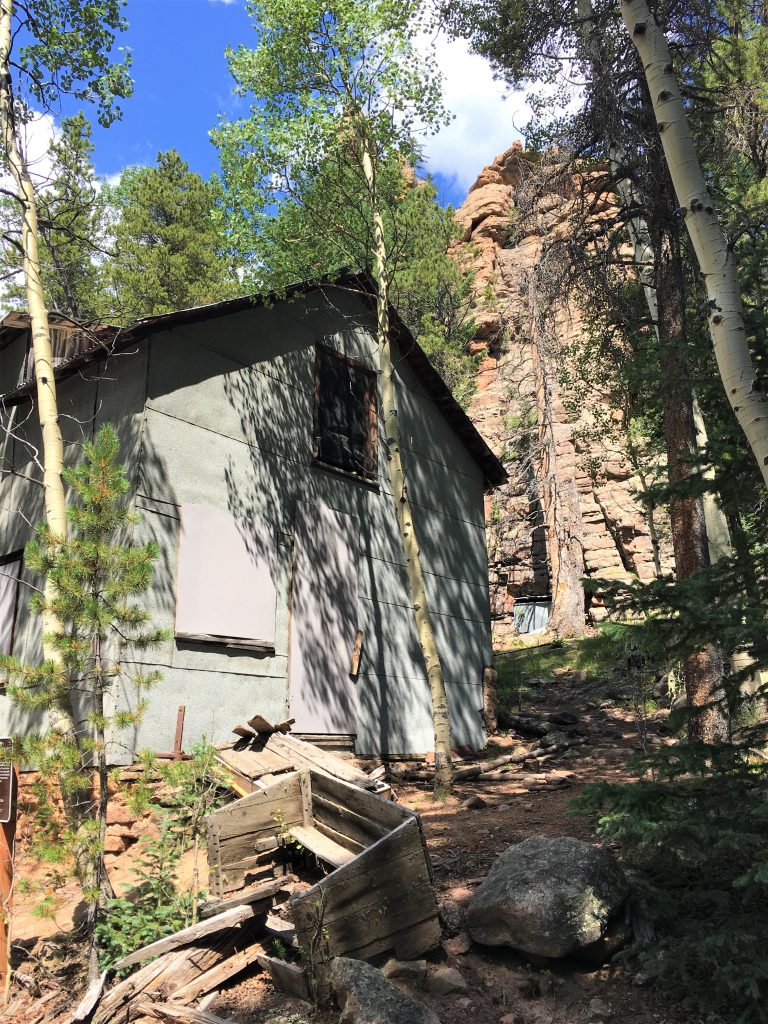
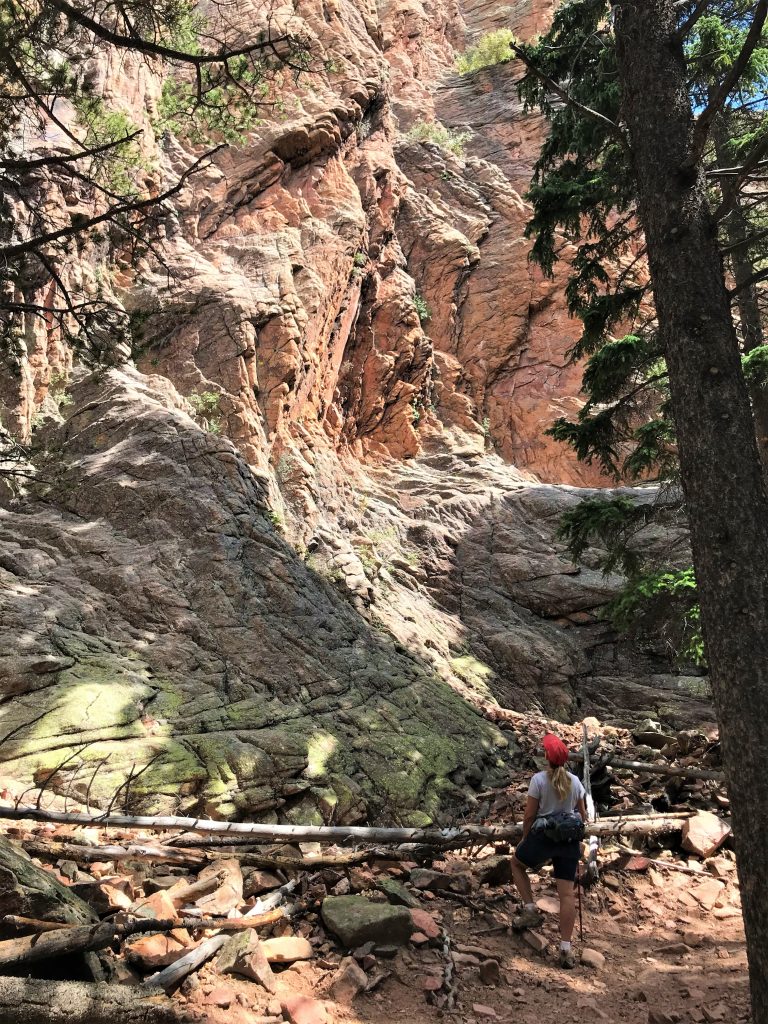
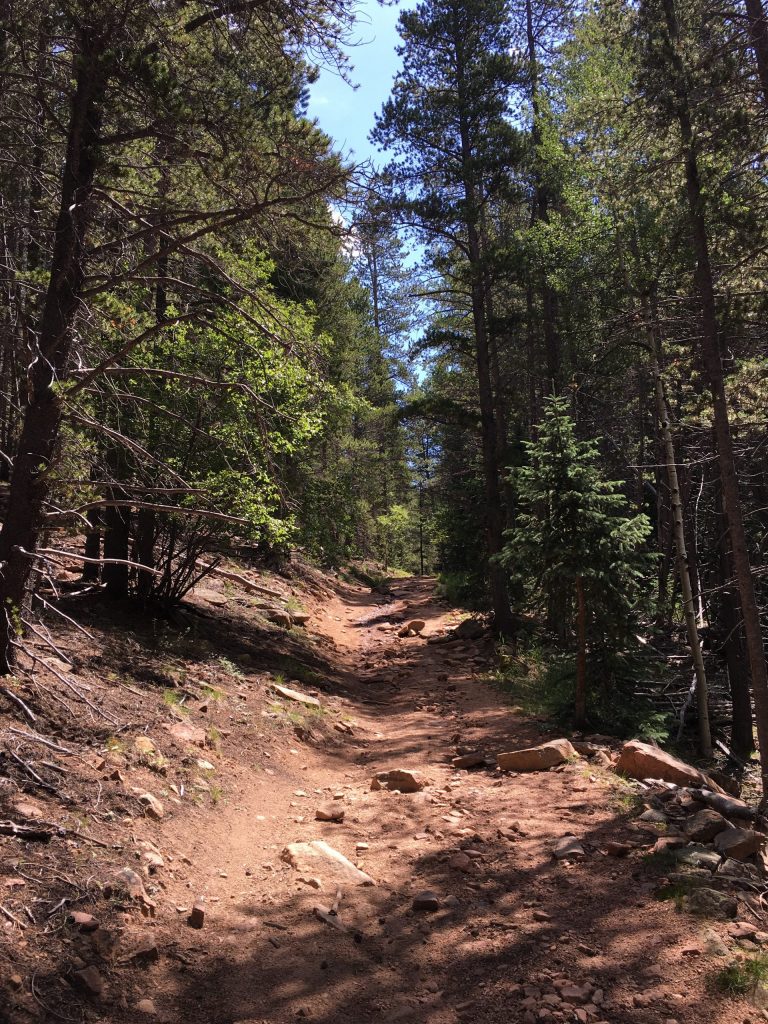
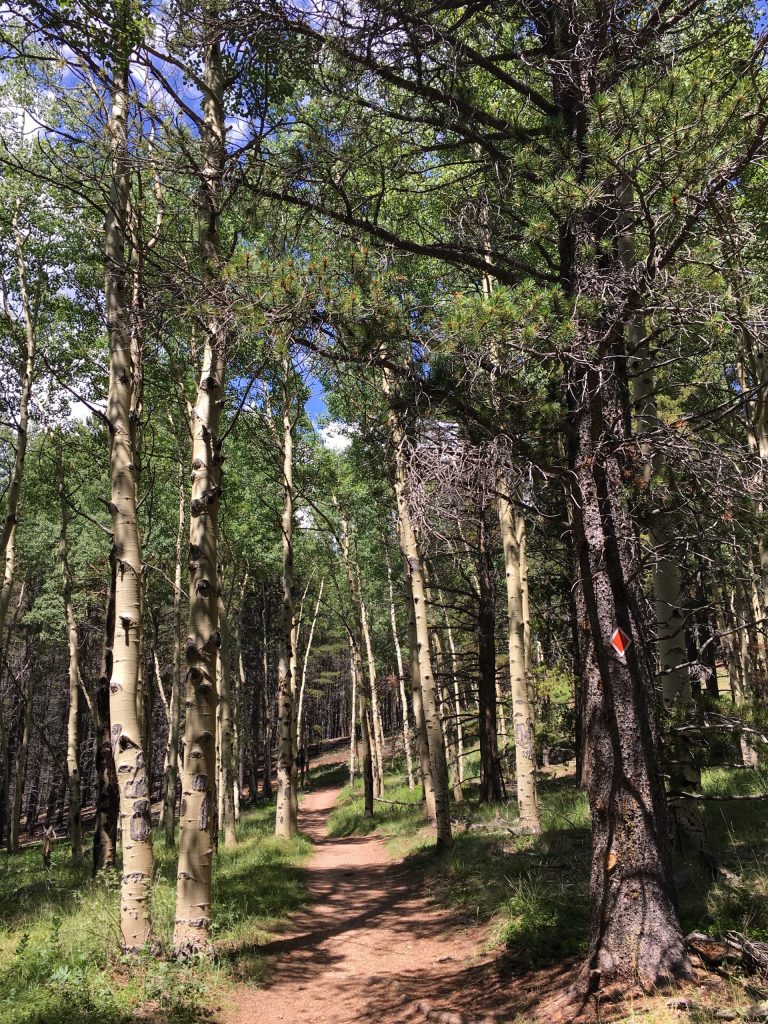
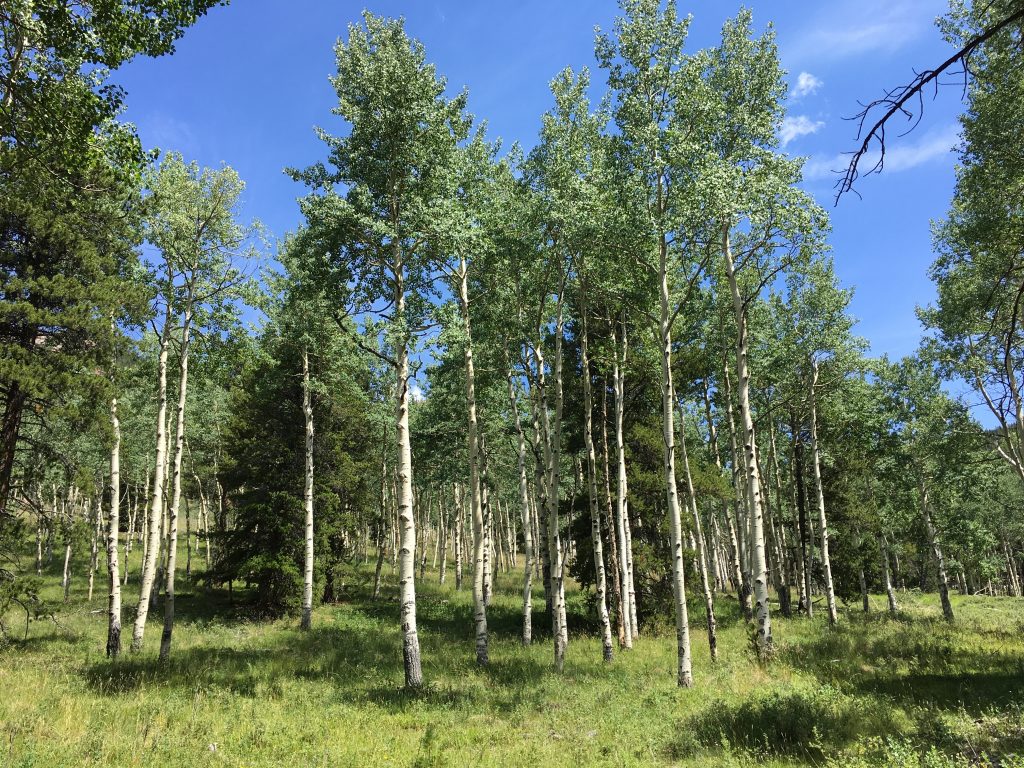
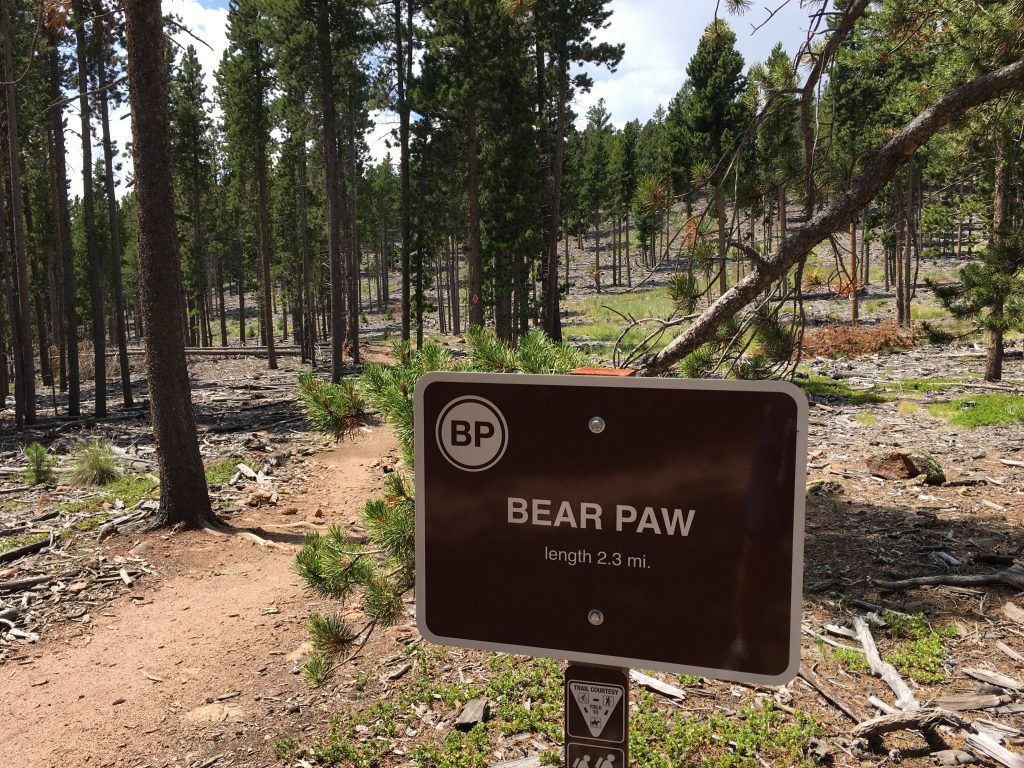
We worked so hard to get up to the Eagle Cliffs Overlook for lunch.
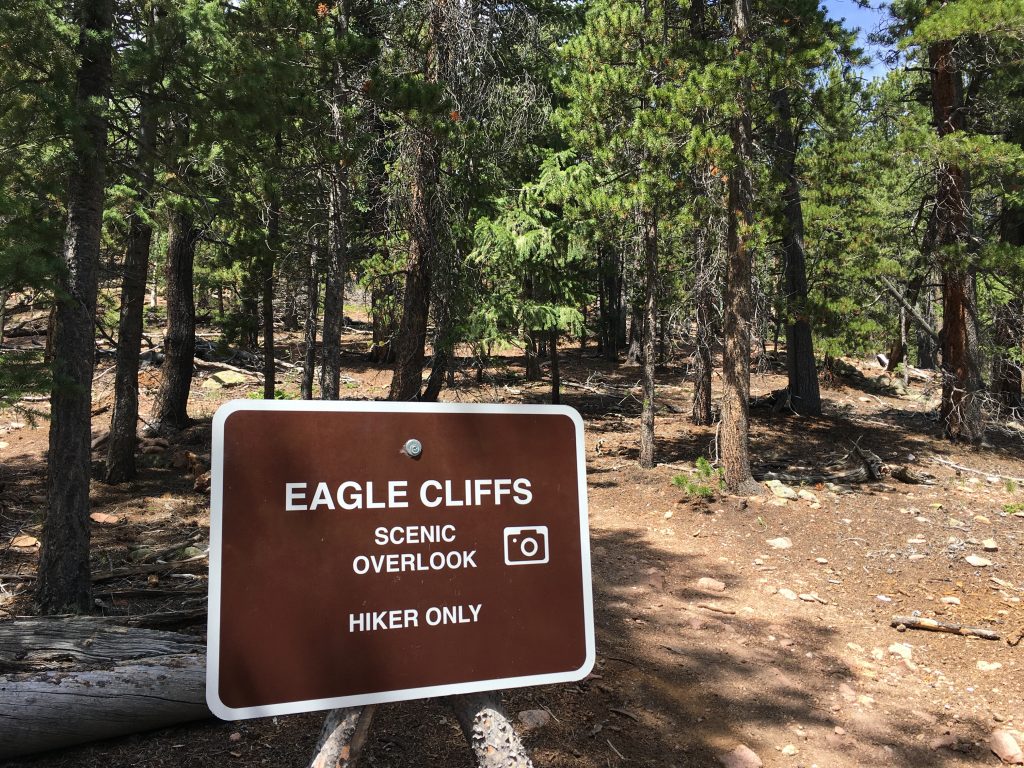
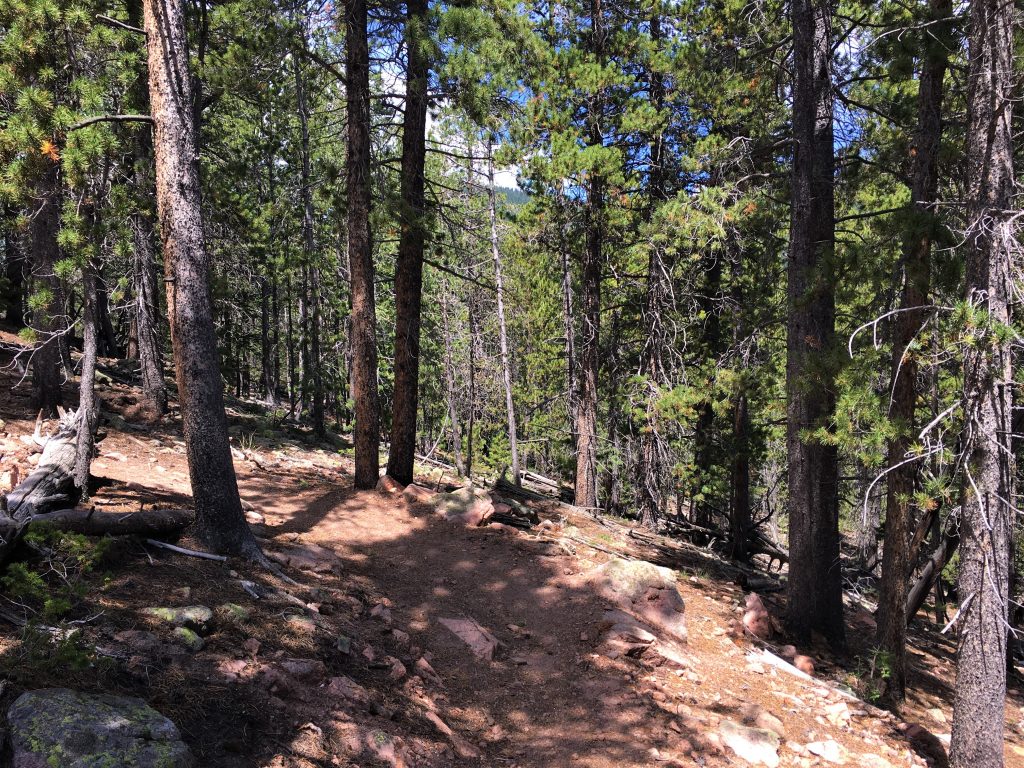
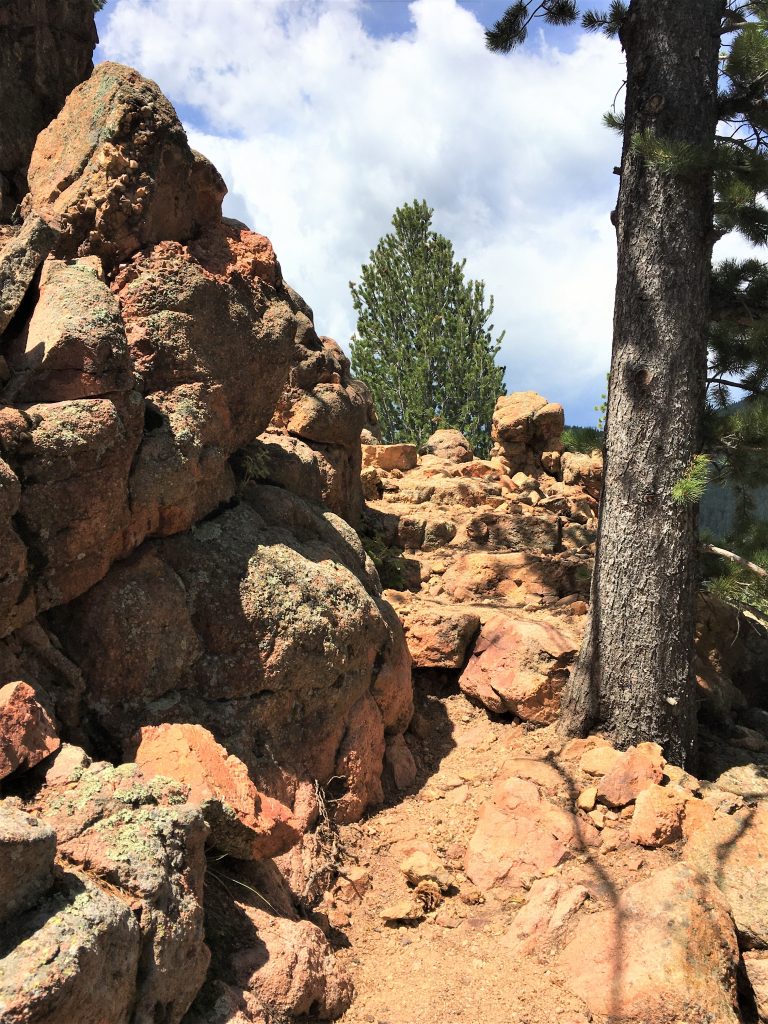
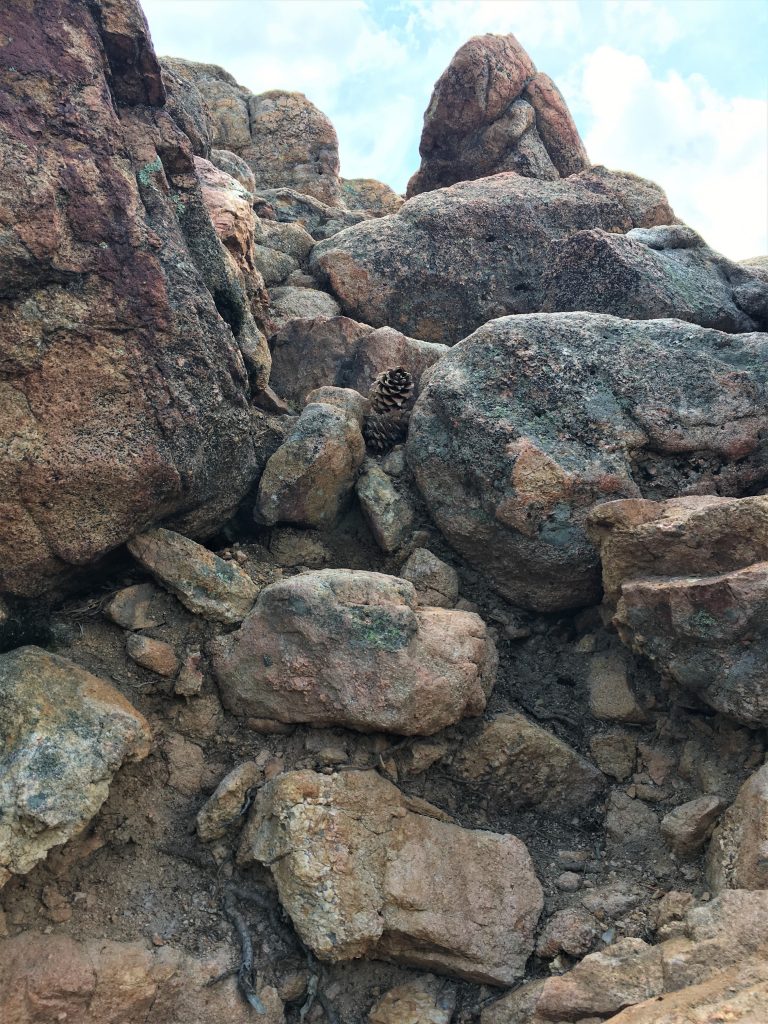
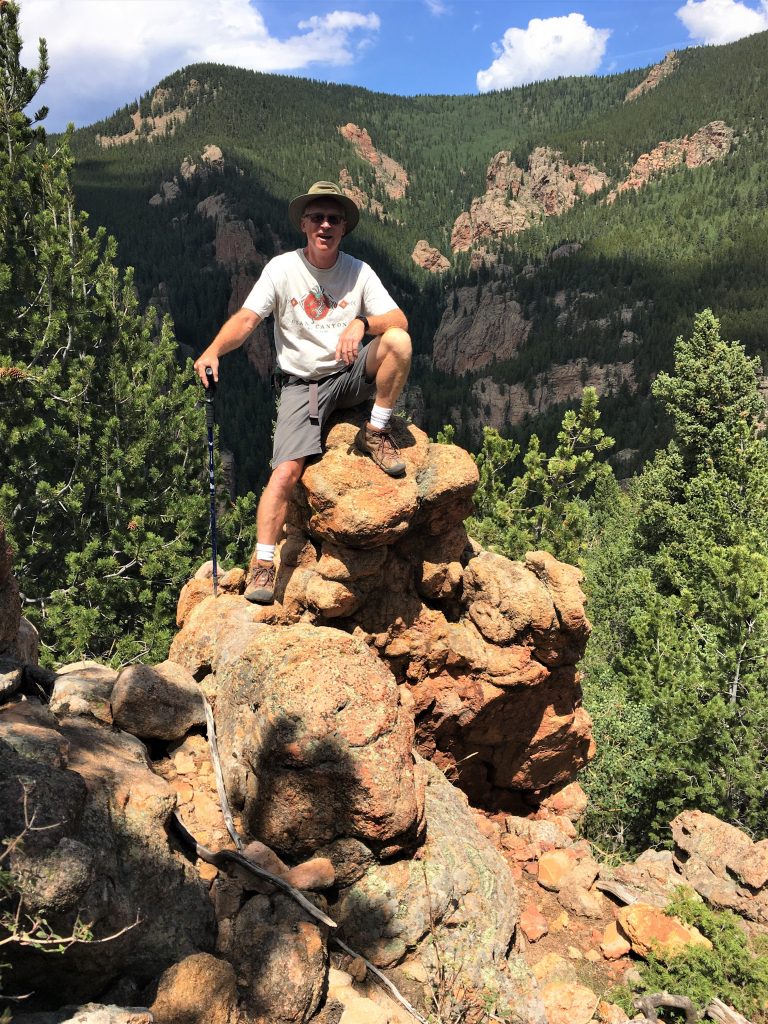
And then. Just as we sat down and opened our packs, a thunderstorm rolled in! Watched and listened to it coming toward us as we scarfed down our food, but then we had to skedaddle off there. ☹

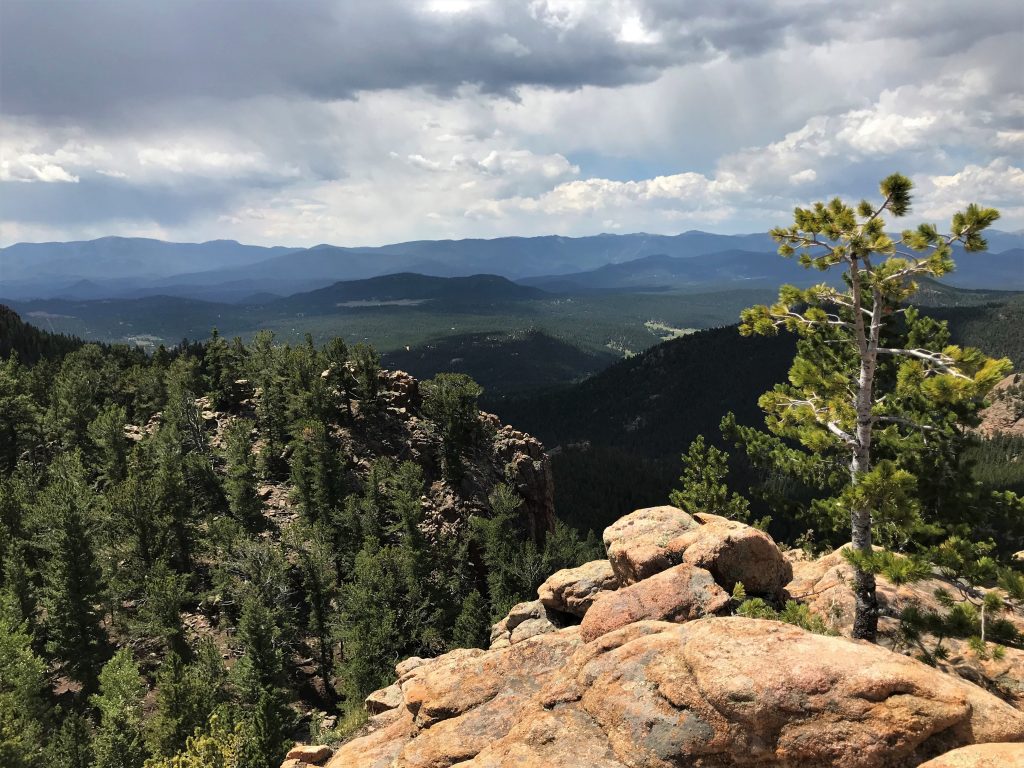
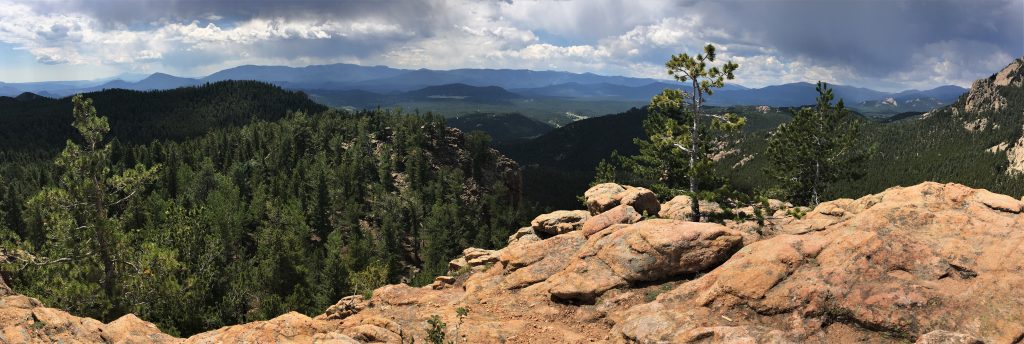
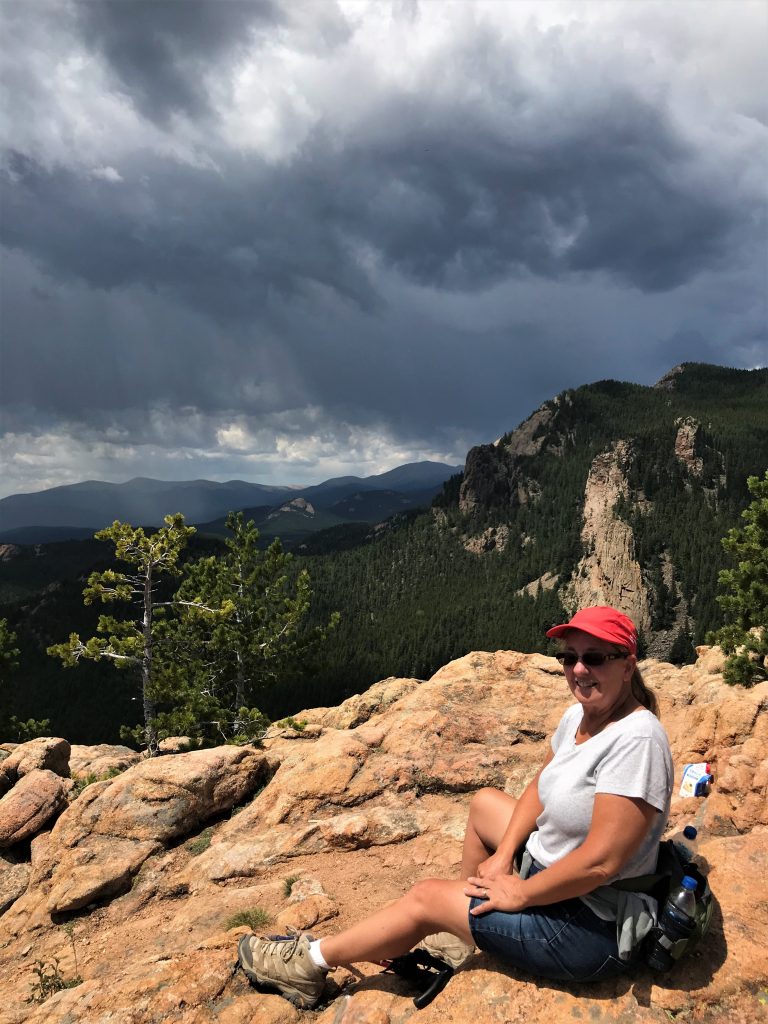
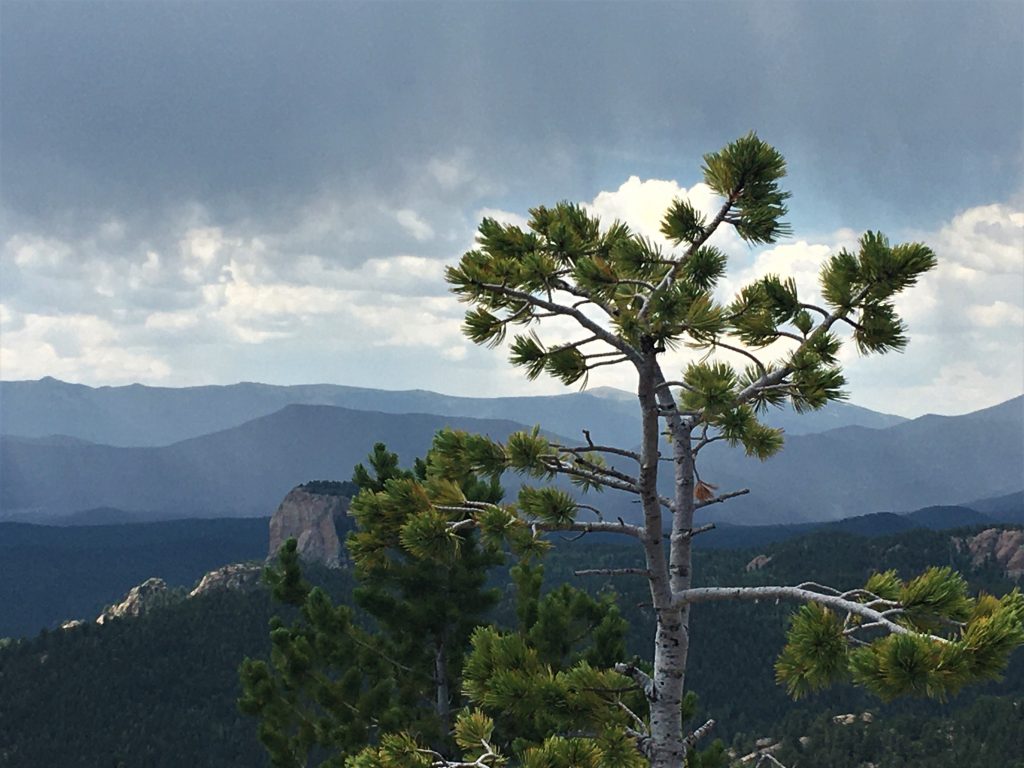

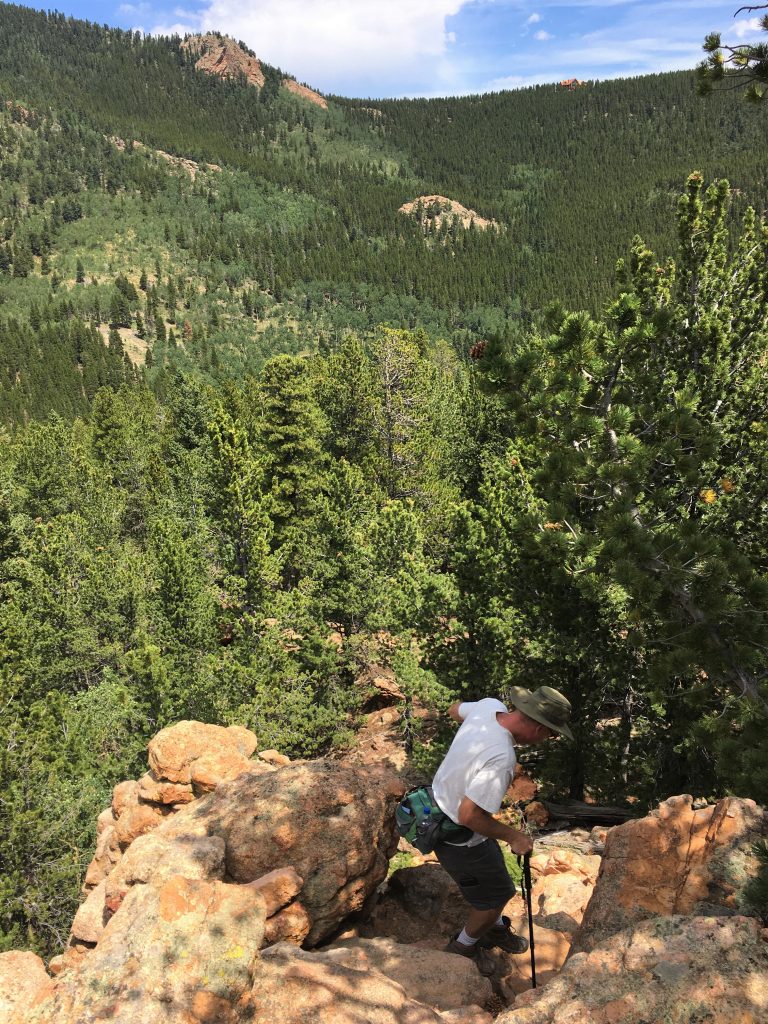
Even though we weren’t ready.
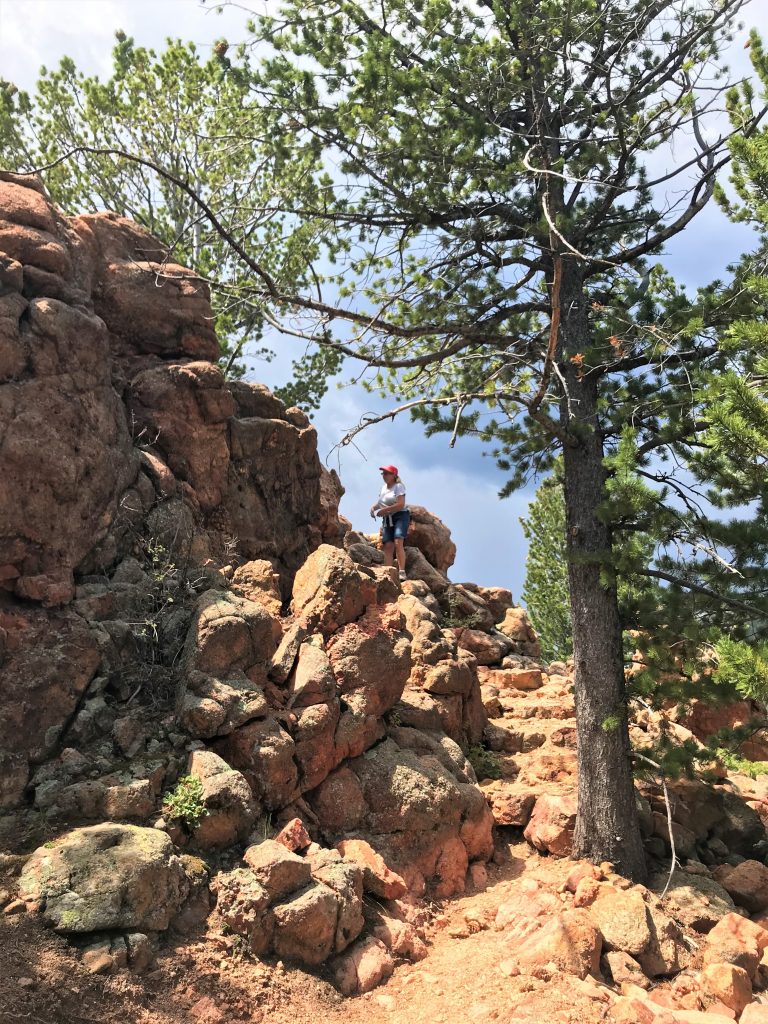
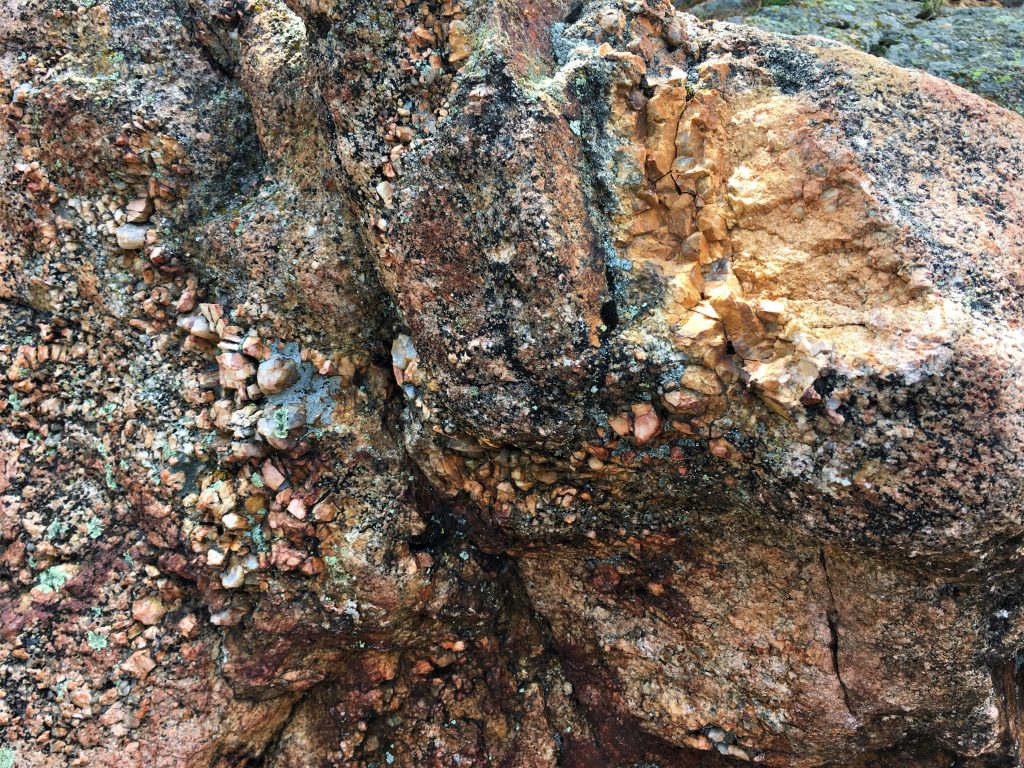
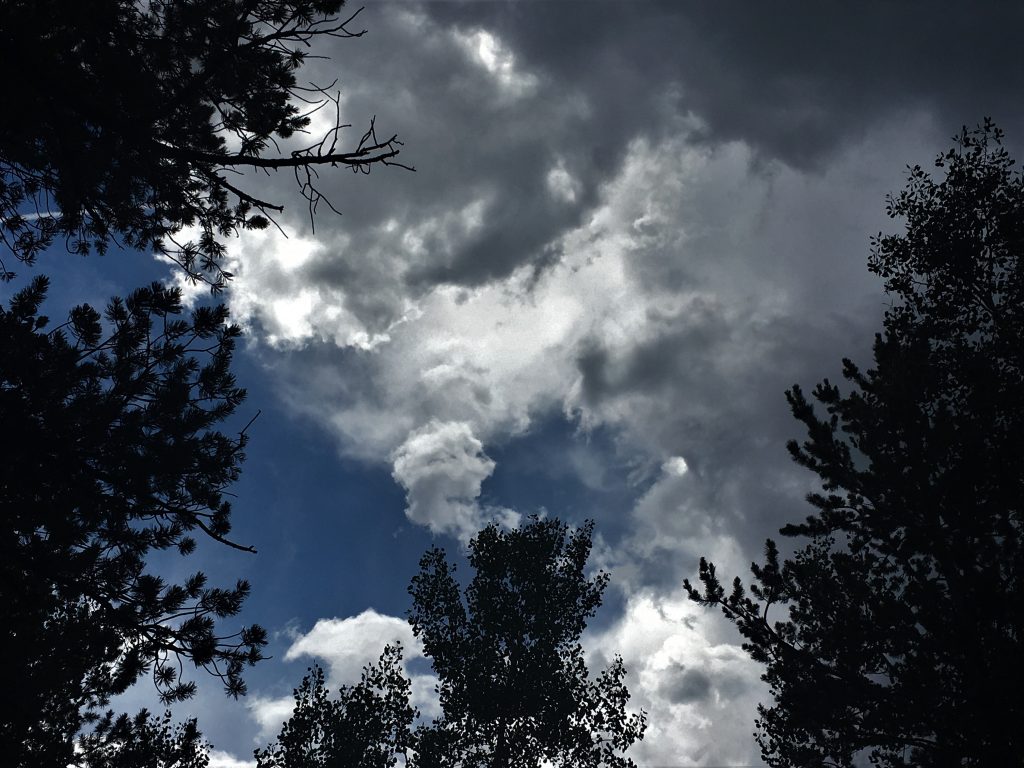
It never really rained on us though, just skirted around us.
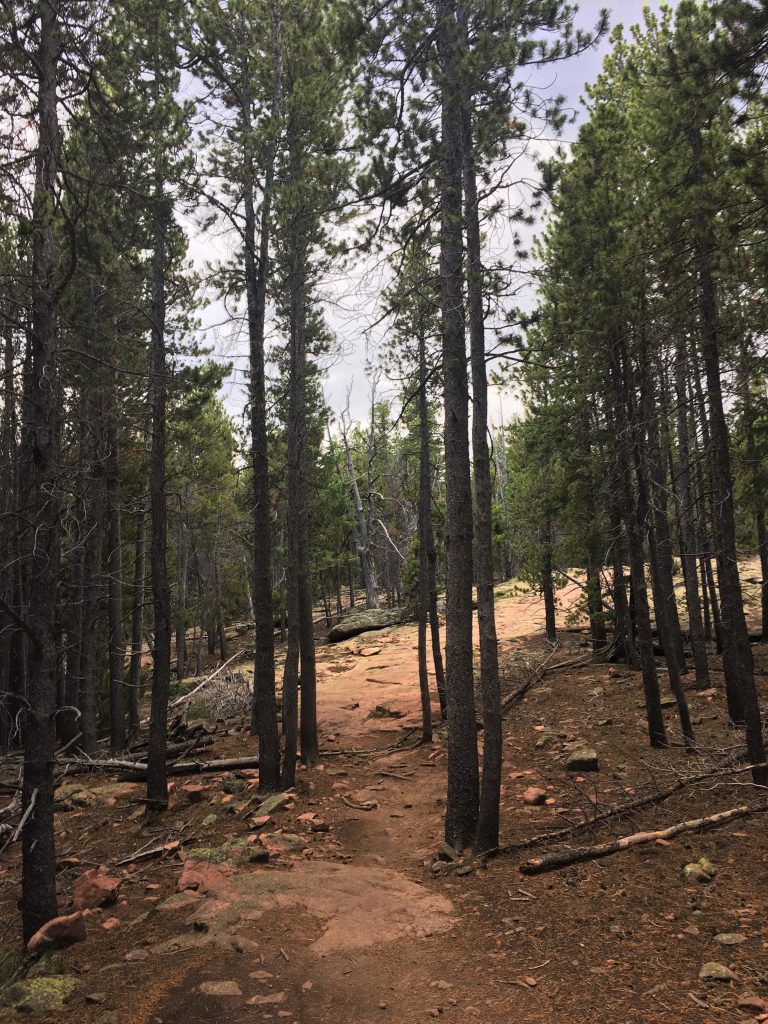
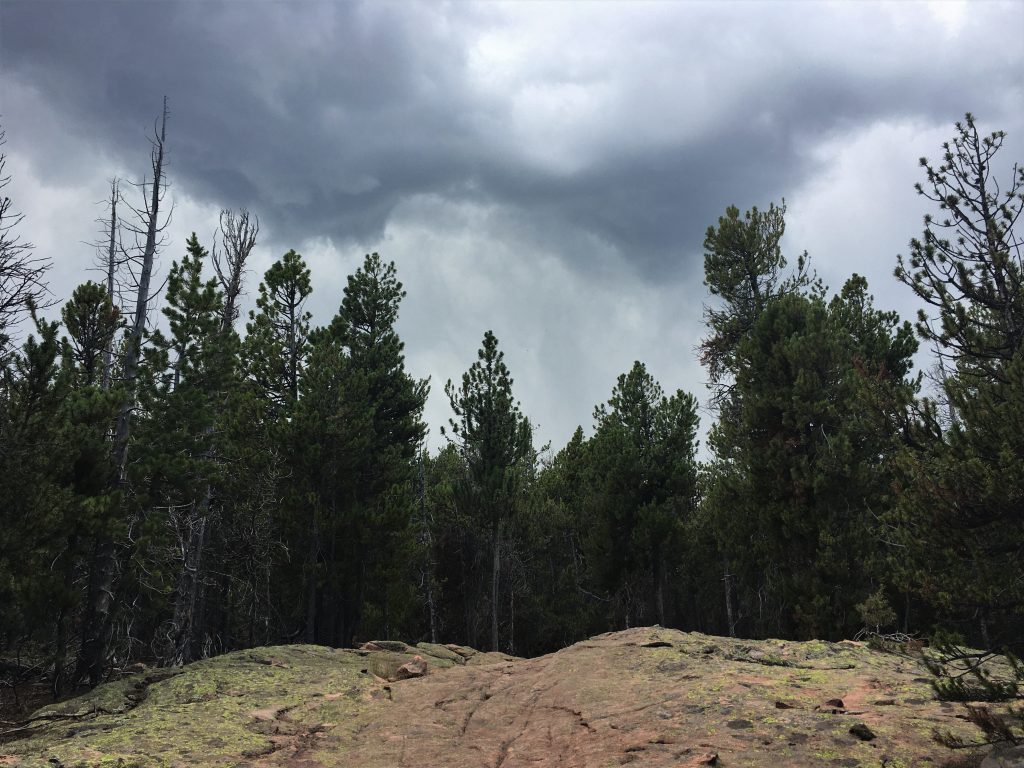
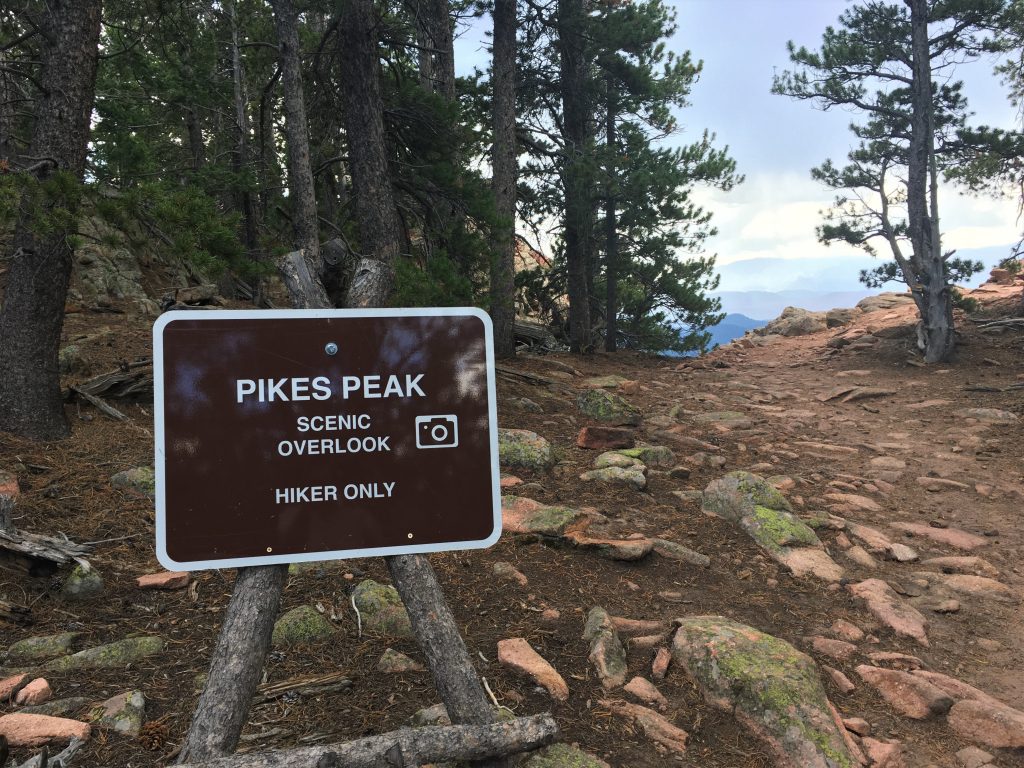
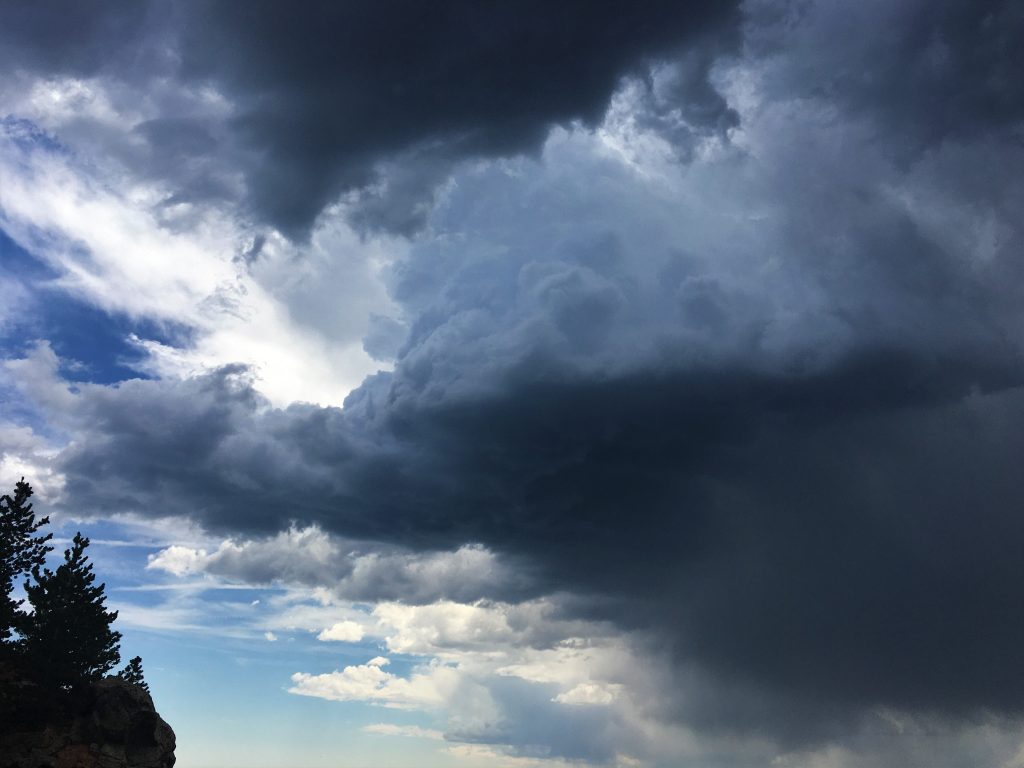
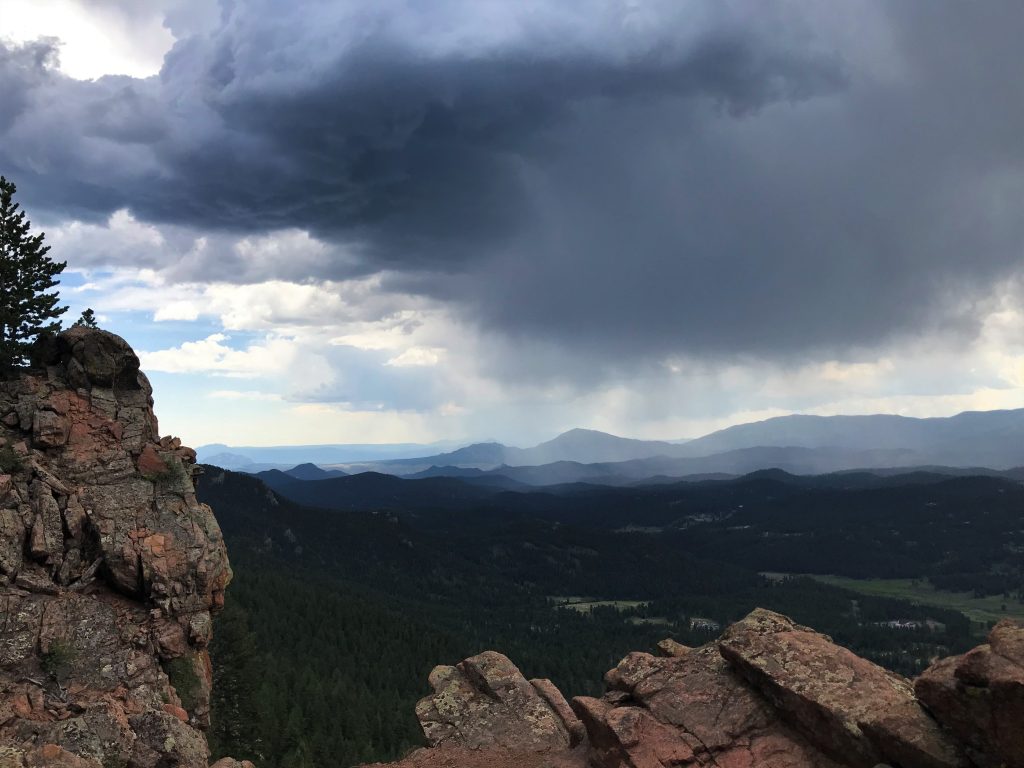
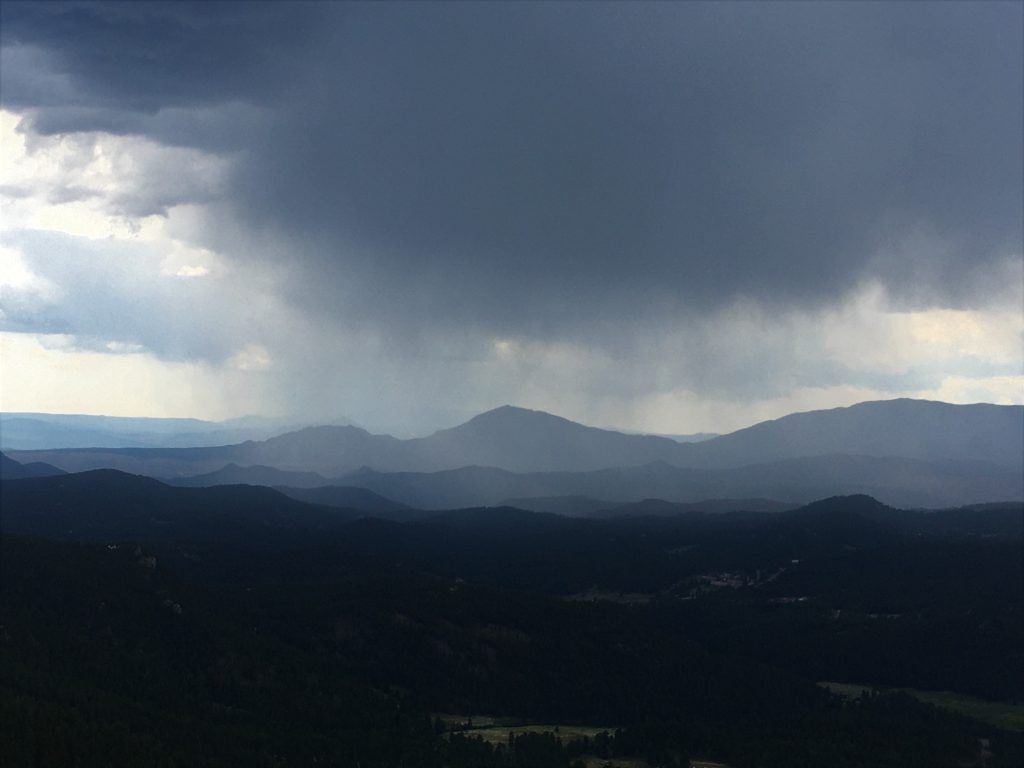
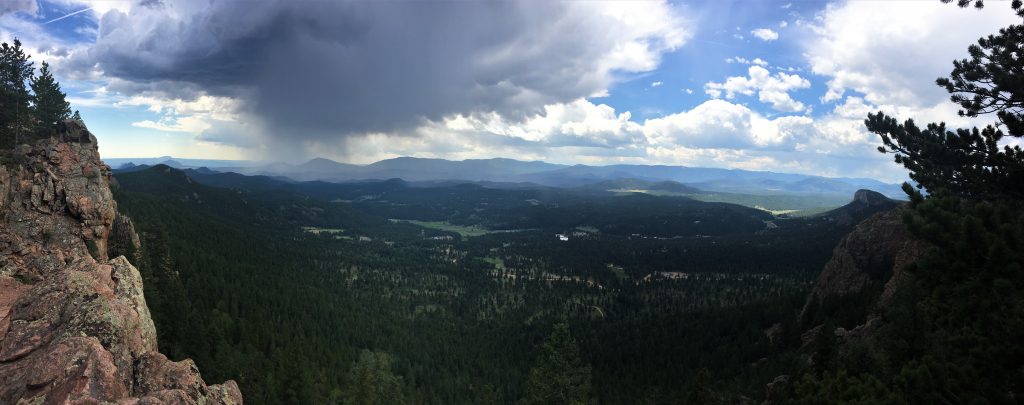
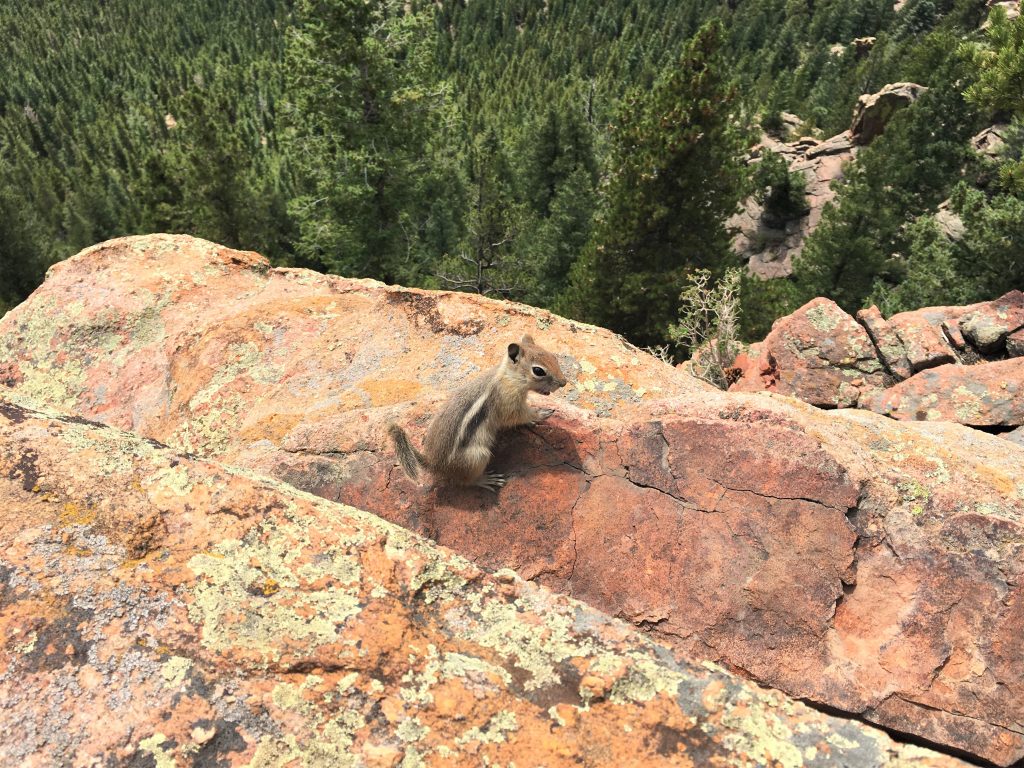
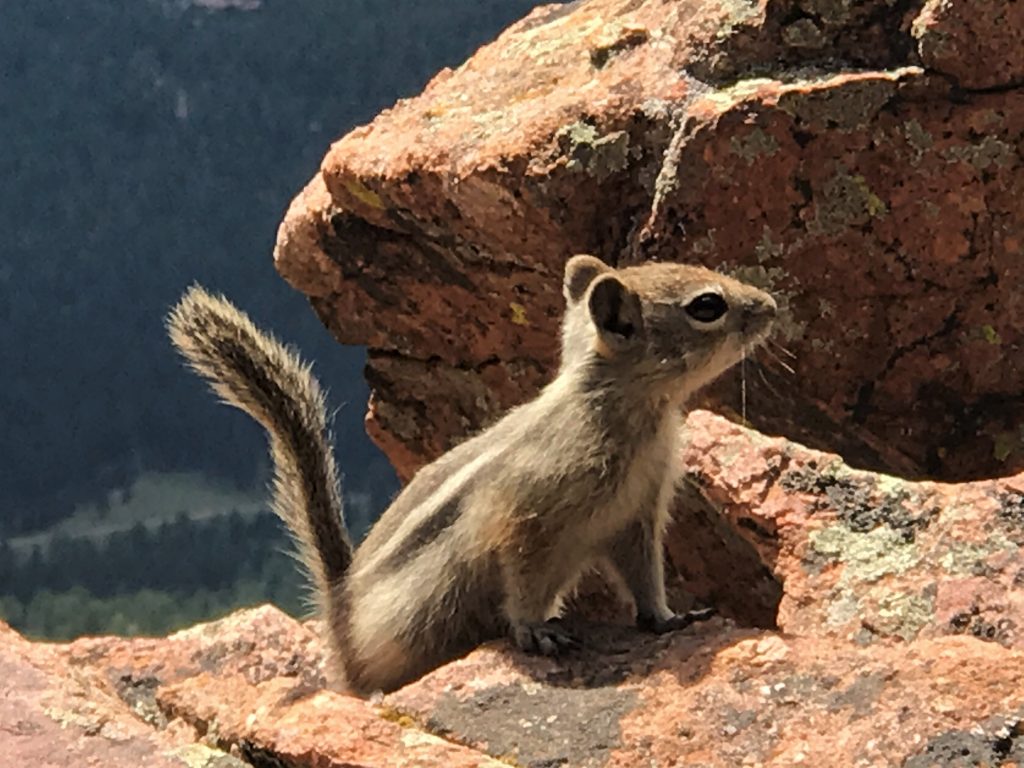

but it was going to slowly for us to wait anymore. Time to move on.
The overlooks were pretty much the same views, and because of the storm, we were unable to see Pike’s Peak. But that’s okay, because we’ll be seeing it up close real soon.

Or maybe it is, but about a quarter-mile further up the trail,
we came to another “1/2 way point” sign. : )
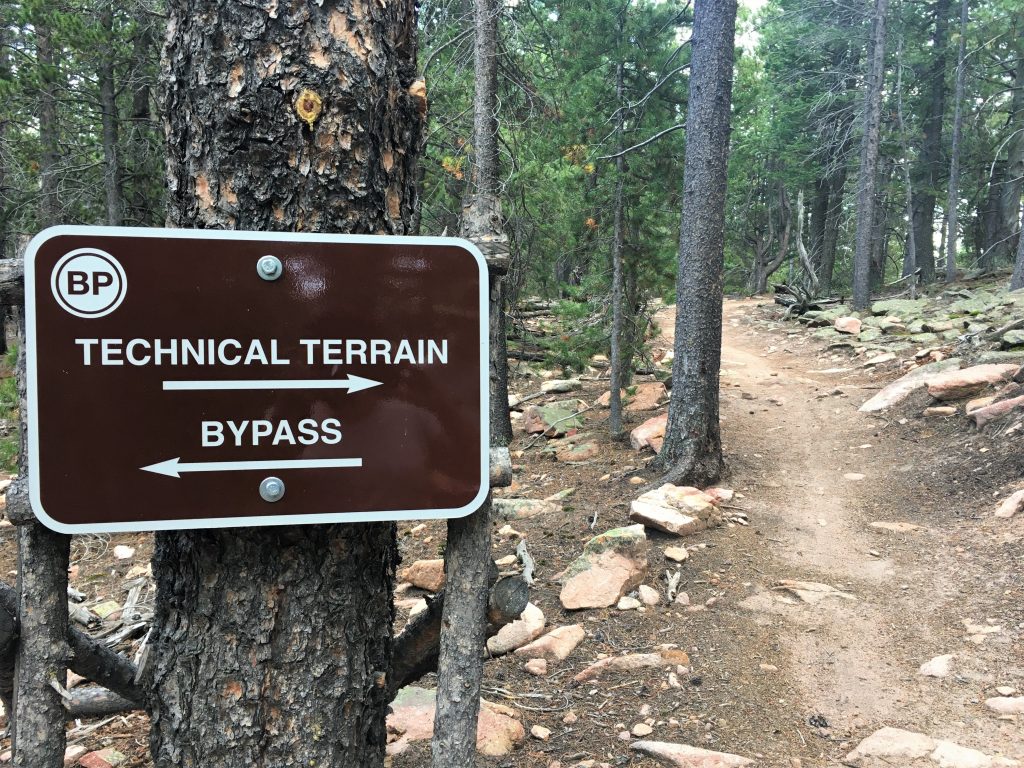

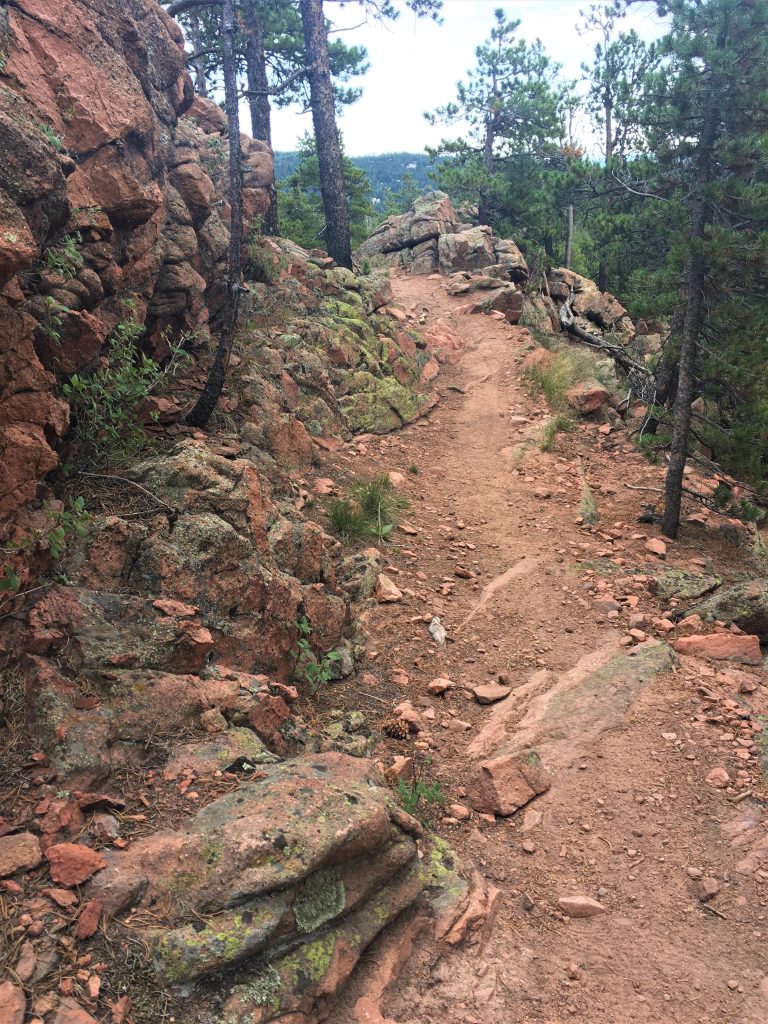
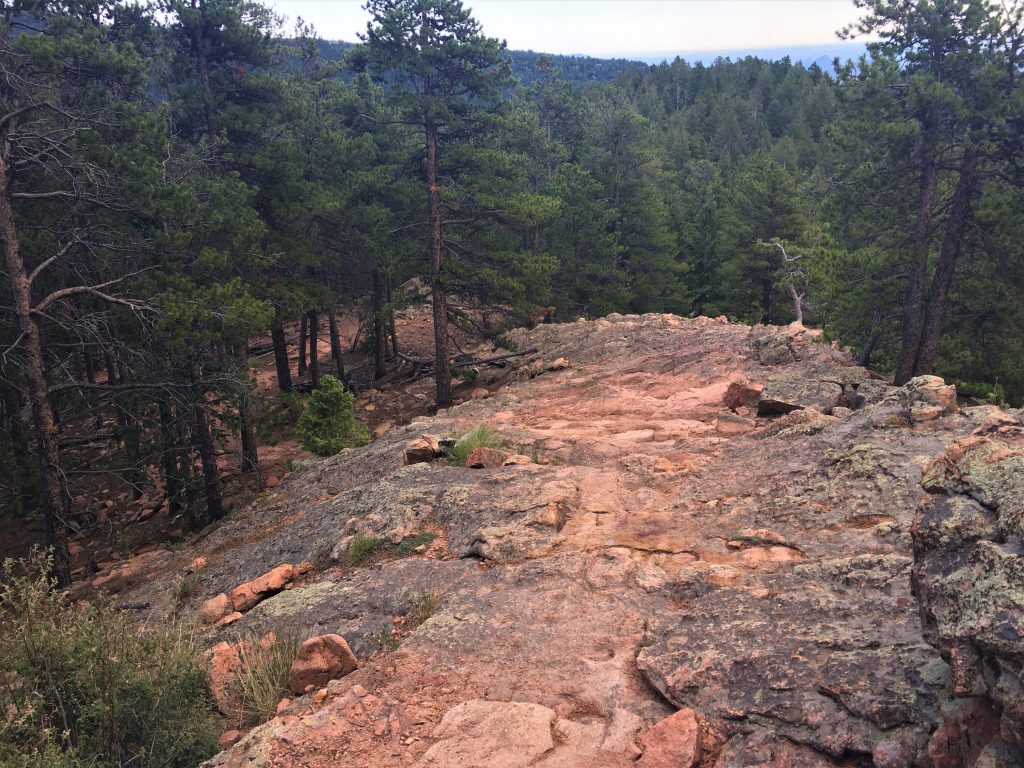
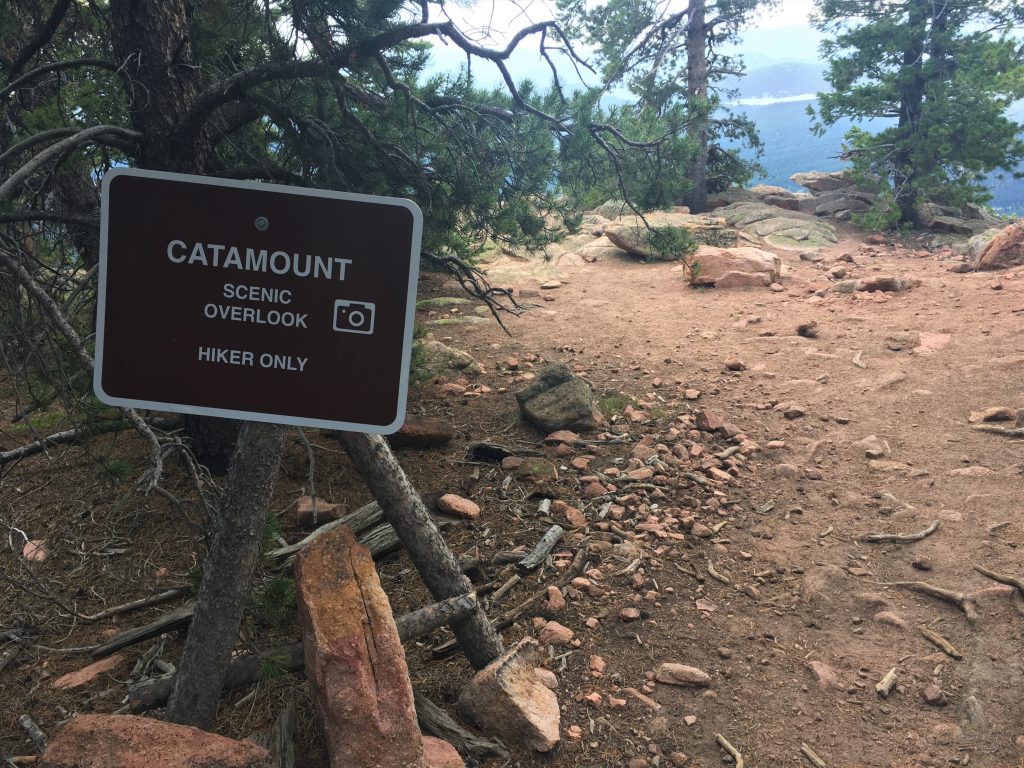
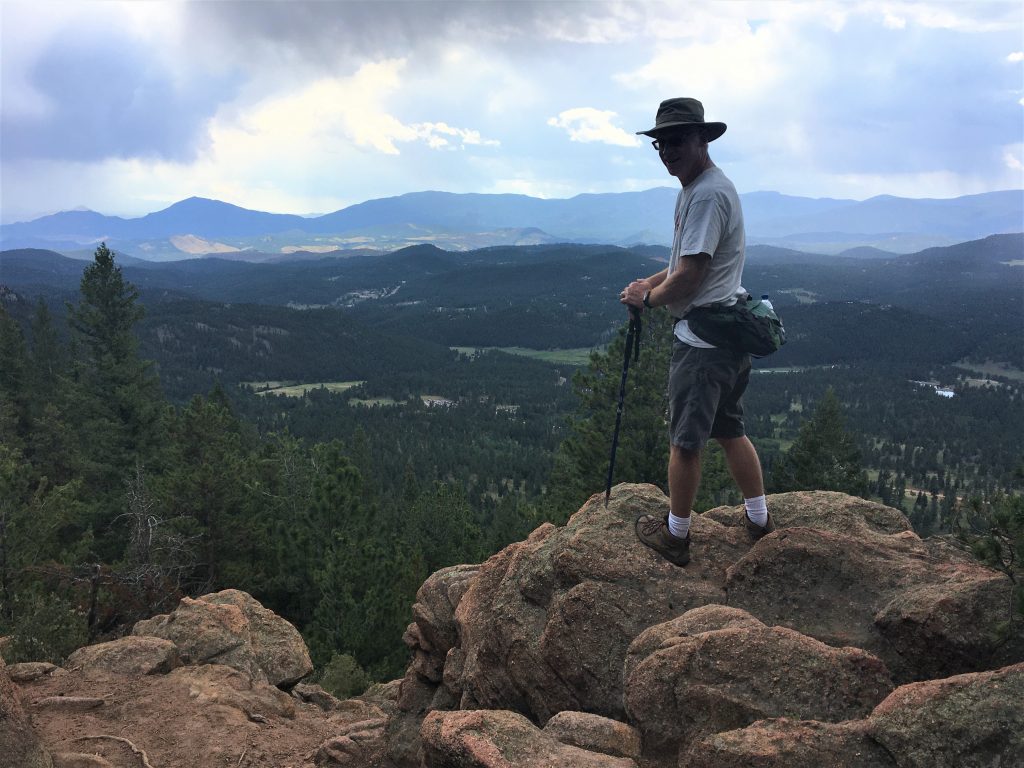
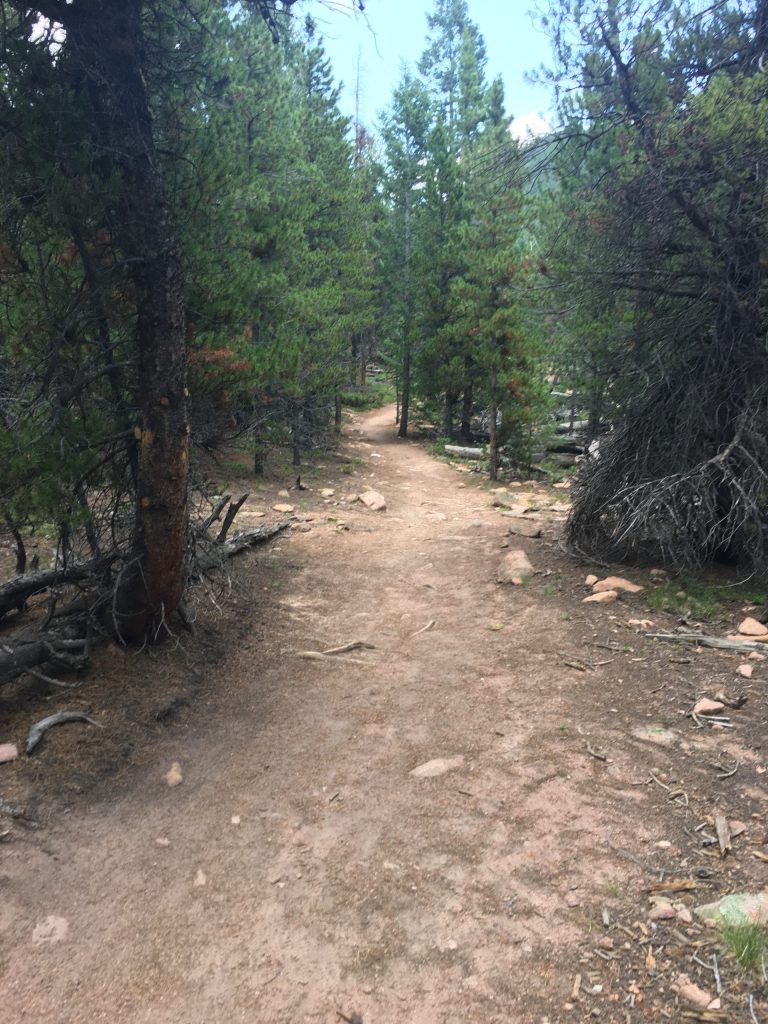
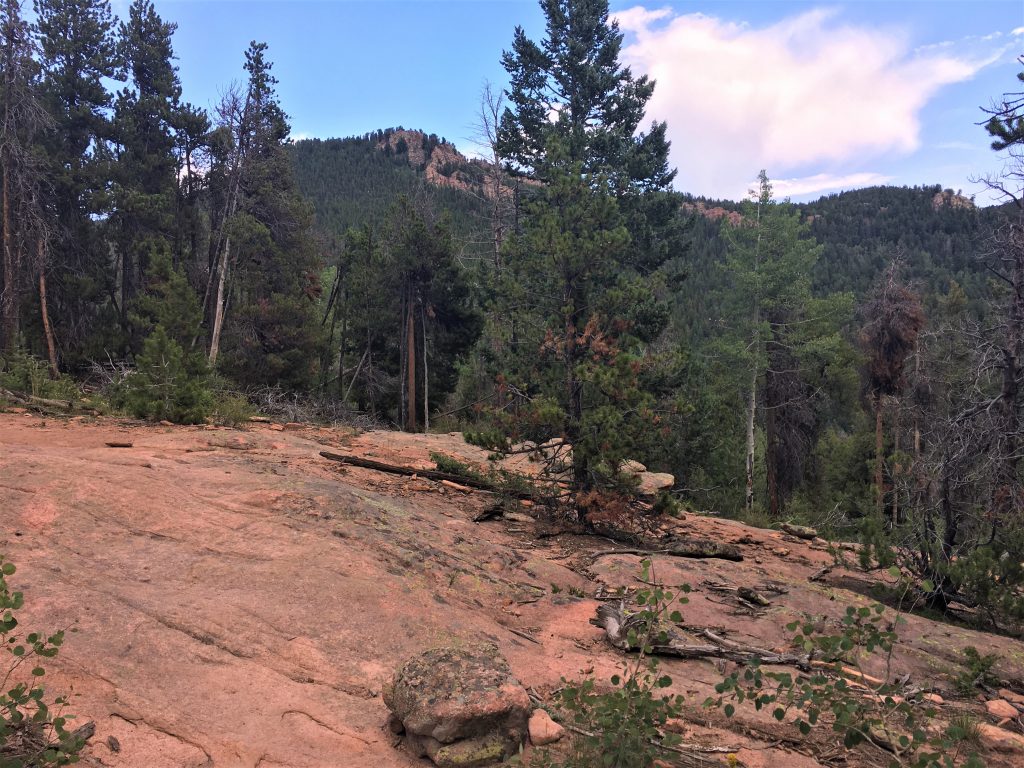
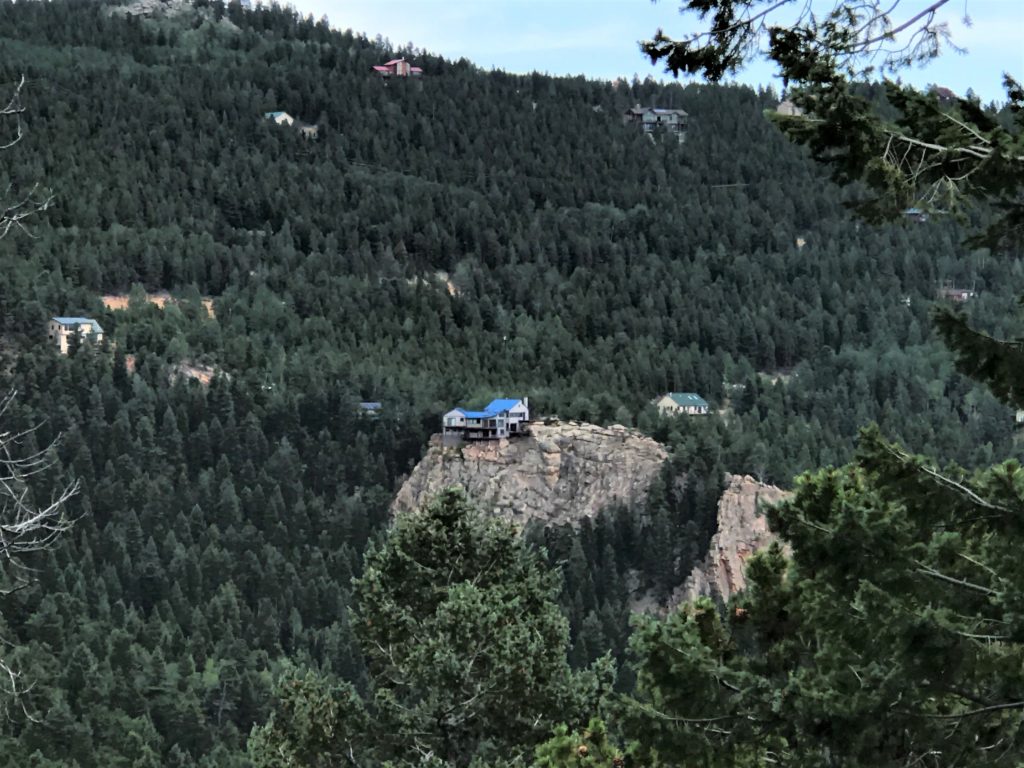
absolutely no possible way I’d live in a house perched on the edge of a rock cliff!
And by the way, where’s the driveway?
Or do they helicopter in and out? : )
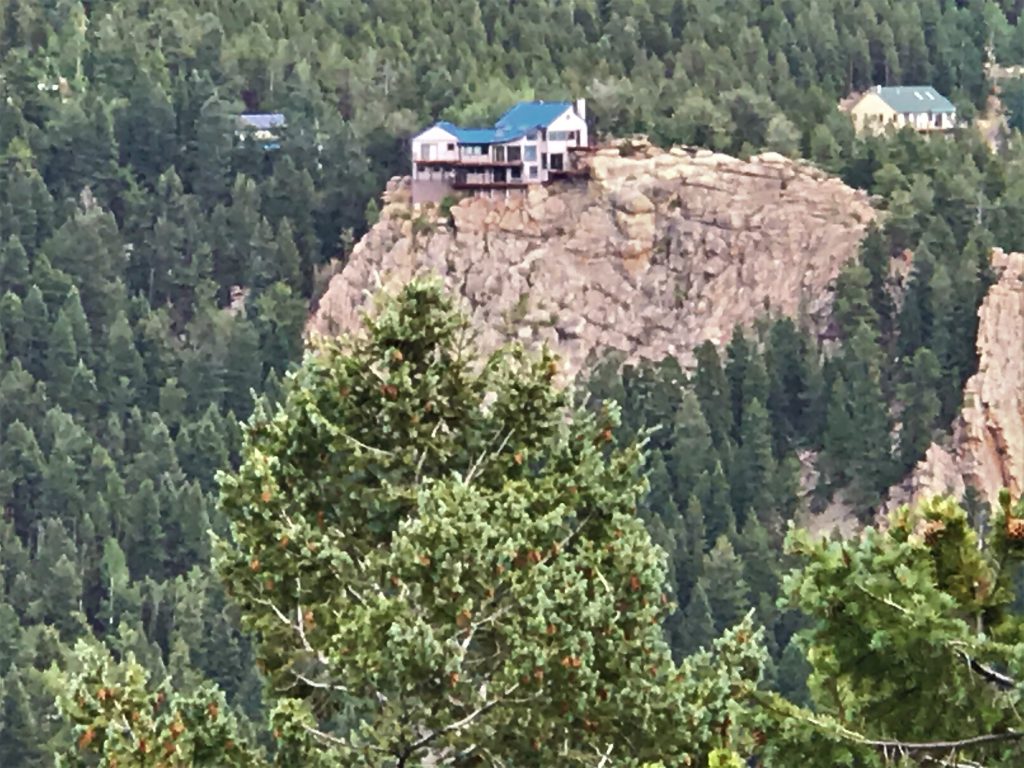
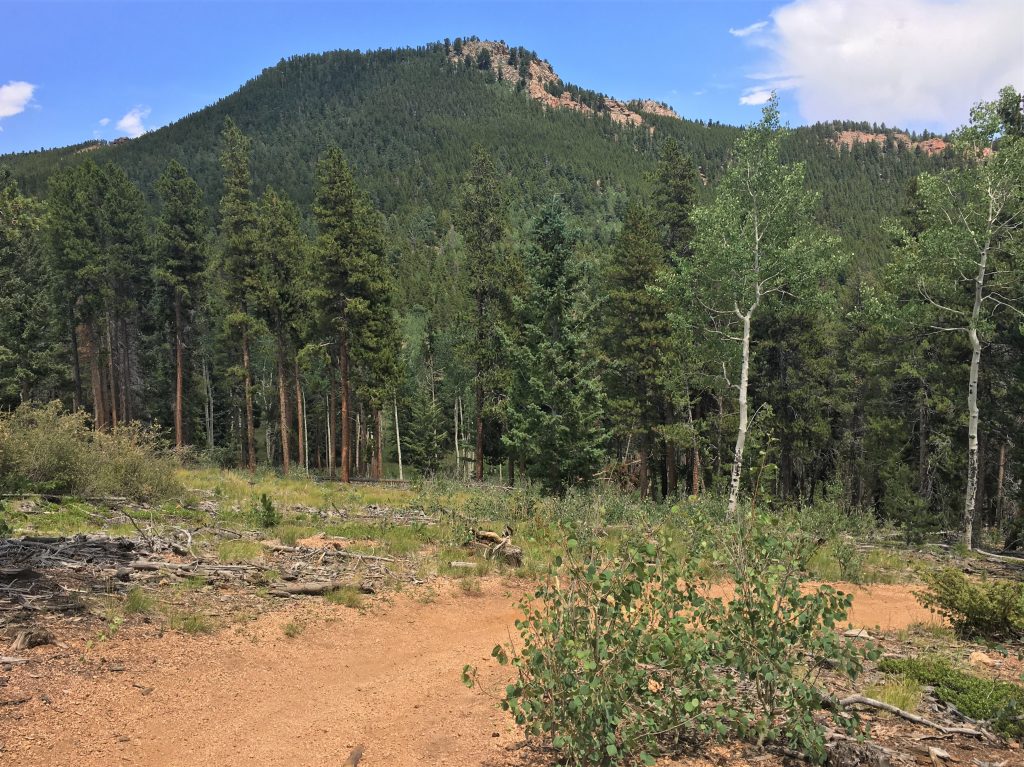
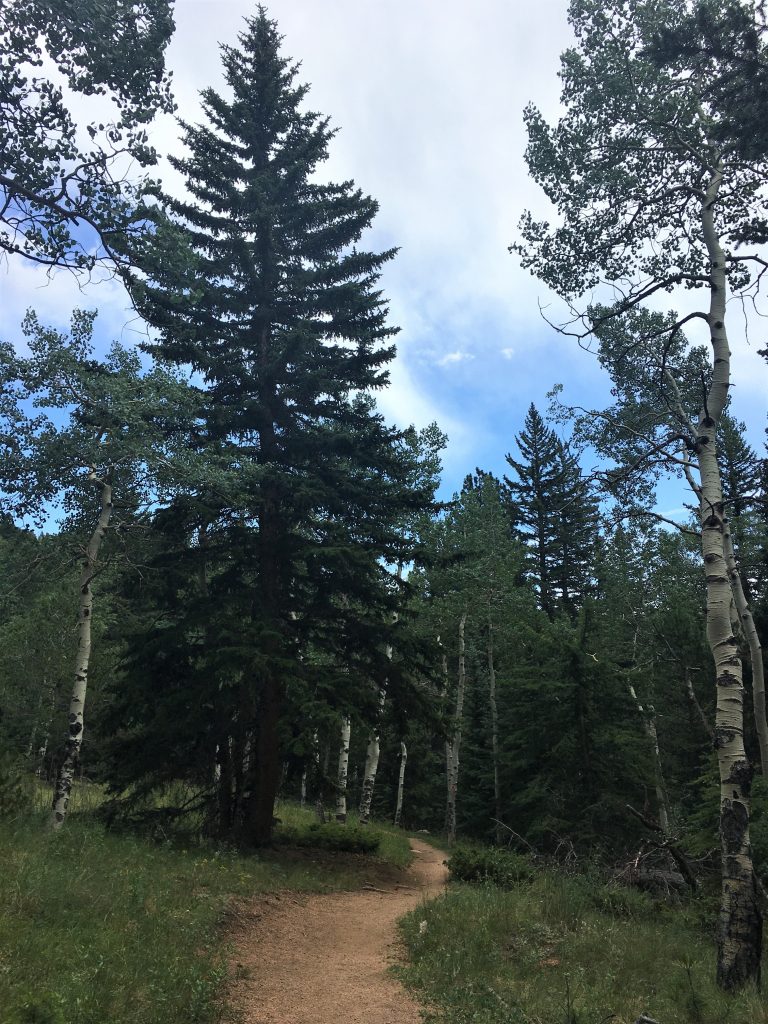

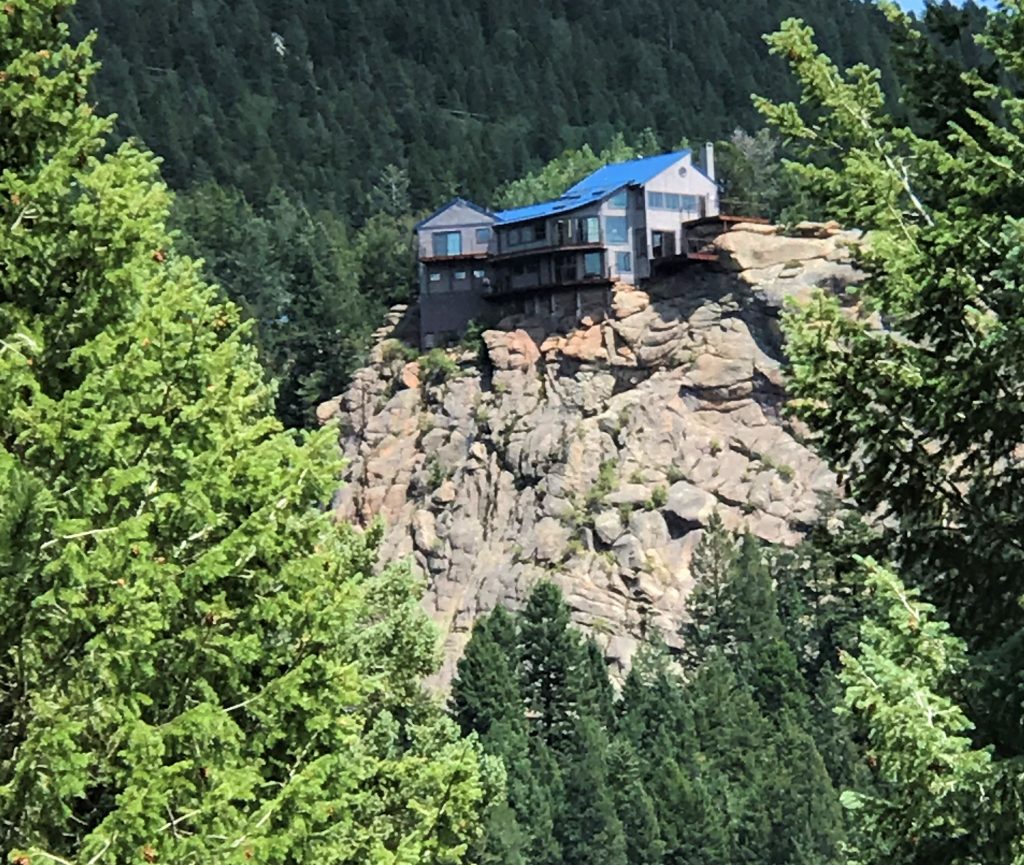
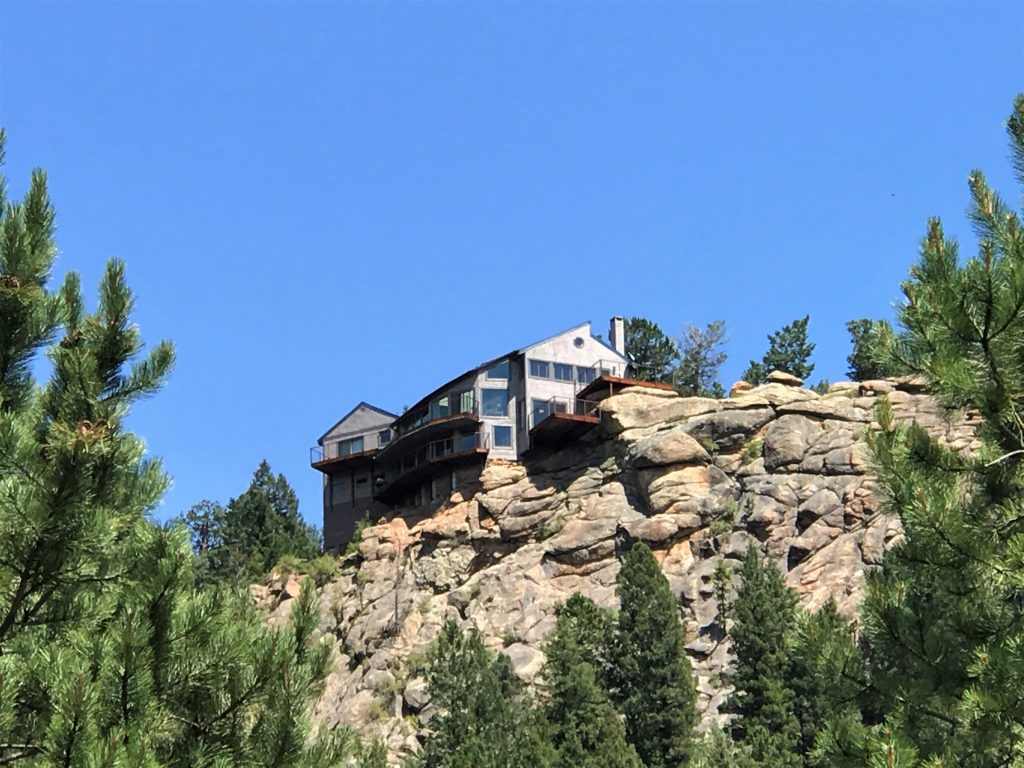
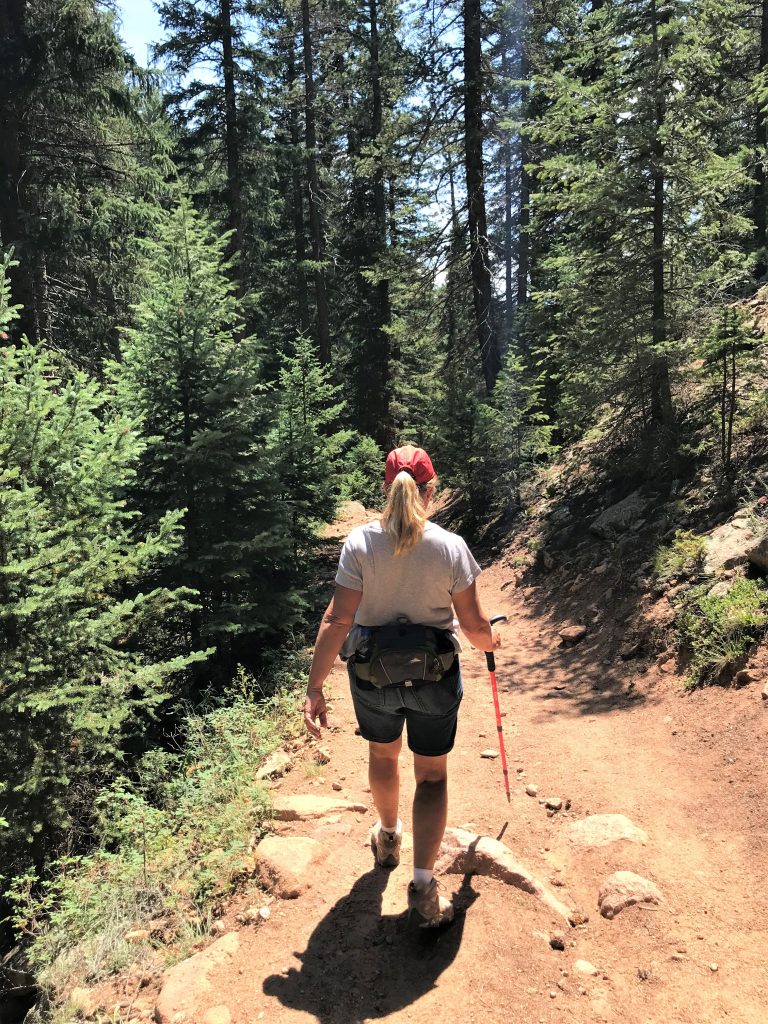
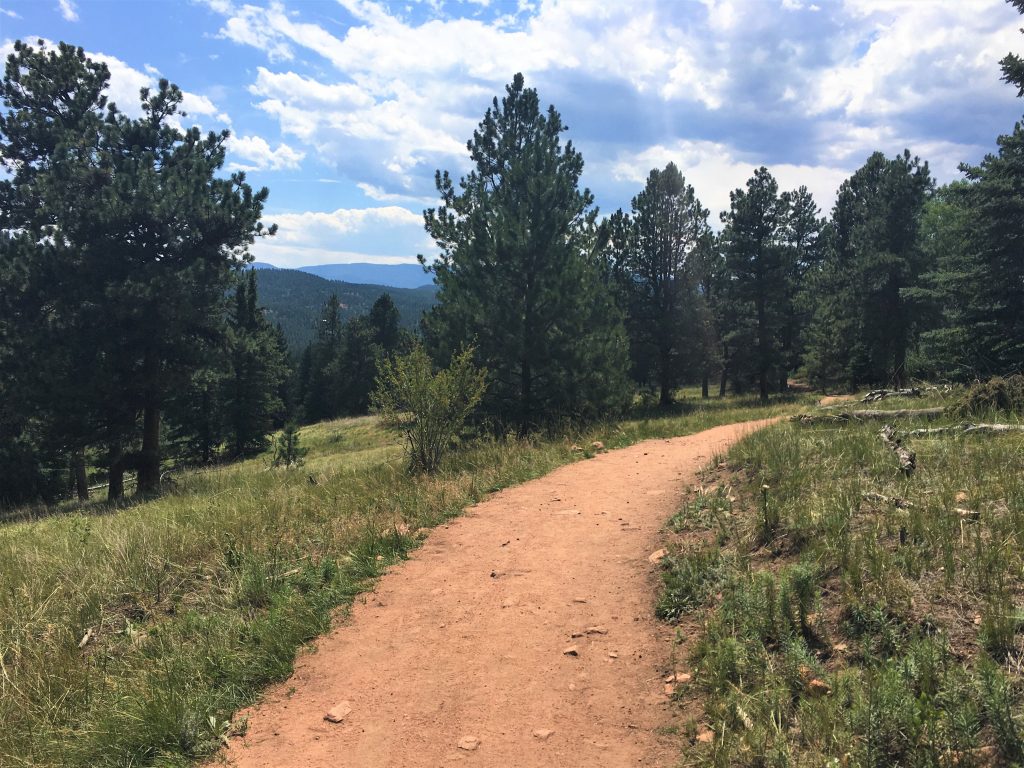
We finished up, drove home, and collapsed for the remainder of the day. 😊
Staunton Ranch
Staunton Ranch started in 1918, when Archibald and Rachael Staunton bought an eighty-acre parcel near Elk Falls for a mountain house. Originally from West Virginia, the Stauntons had received medical degrees and married in the 1890s before coming to Colorado in the early 1900s, after Archibald got pneumonia. They established practices in Denver and moved with their young daughter, Frances, into a house on Downing Street. In the 1910s, while visiting the Glen Elk resort southwest of Denver, Rachael and Frances saw Elk Falls and decided to buy property in the area.
After their initial eighty-acre purchase in 1918, the Stauntons expanded their property over the next twelve years until they had 1,720 acres. Covered with pines, aspen groves, open meadows, and granite cliffs, the land was located around Black Mountain Creek at an elevation between about 8,000 and 9,000 feet. The Stauntons spent weekends and summers at the ranch, living in a rustic cabin they built in 1918.
To satisfy the requirements of the Homestead Act, which the Stauntons used to claim some of their land, they grew oats and potatoes and raised horses and cattle. Starting in the 1920s, they also leased some of their land to loggers, who built a small sawmill and a cable system for moving logs. Logging continued until 1942, when metal from the sawmill was donated to wartime scrap metal drives. The abandoned sawmill later collapsed in the 1960s or 1970s, but a two-story bunkhouse still stands near the sawmill ruins.
In addition to logging and agriculture, the Stauntons used their ranch to host a variety of camps in the middle of the twentieth century. Evidence suggests that the physician couple may have operated a camp for tuberculosis patients at the ranch in the 1920s, but most camp activity came later and was recreational in nature. About a quarter mile southeast of their own cabin, the Stauntons built several new cabins and a shower house in a cluster near an older cabin that dated to before 1918. The foundations of additional cabins have been found on other parts of the property. The family used these cabins, most of which were built by the early 1930s, to operate a commercial camp under the name Lazy V Ranch. From about 1936 to 1954, the ranch hosted groups such as the Girl Scouts, the Mount Marion Camp for Catholic Girls, and the Lazy V Ranch for Boys.
Frances Staunton inherited the ranch after her mother and father died in 1946 and 1958, respectively. Friends and other guests continued to use the ranch’s cabins and bunkhouse until Frances Staunton’s death in 1989.
State Park
In 1961, three years after her father’s death, Frances Staunton wrote a will in which she pledged to donate the family’s ranch to the state of Colorado for use as a state park that would be kept largely in its natural state. The donation was announced in 1984 and finalized in 1986.
With Staunton’s donation, state officials initially hoped to open Staunton State Park to the public in 1991. It ultimately took more than twenty-five years to open the park, however, in part because Colorado Parks and Wildlife needed to acquire additional parcels of land to create an access point that did not involve driving through a neighborhood. In 1999 a Great Outdoors Colorado Legacy Grant allowed the original Staunton donation to be expanded by about 2,000 acres through the purchase of neighboring Davis Ranch and Elk Falls Ranch. In 2006 the prospective park was expanded again with the acquisition of a crucial eighty-acre parcel that once belonged to Mary Chase, the Pulitzer Prize–winning author of “Harvey“. (By the way . . . . that book is where the movie staring Jimmy Stewart came from. Remember? The invisible rabbit?)
Years of planning and development followed, but in May 2013 Staunton State Park opened as the first new state park near the Denver metropolitan area since 1978. Today the park includes more than 3,800 acres of land and twenty miles of trails. It is one of the few places where marmots can be found below treeline. The park has plans to construct new trails and a visitor center, and the nonprofit Friends of Staunton State Park is adding interpretive signs about the park’s cabins, sawmill, and other buildings. ~ coloradoencyclopedia.org
